I’ve written about the Barnes Foundation and the Rodin Museum, and now I’m tackling the big one – the Philadelphia Museum of Art. This massive building sits at the very end of Ben Franklin Parkway with a view straight down to City Hall.
If you’ve ever seen the first Rocky movie, this is where he ends his run up the steps. There’s even a Rocky statue nearby! And if you stick around longer than 10 minutes, you are guaranteed to see someone bound up the steps and raise their fists at the top. It’s a fantastic spot for people-watching.
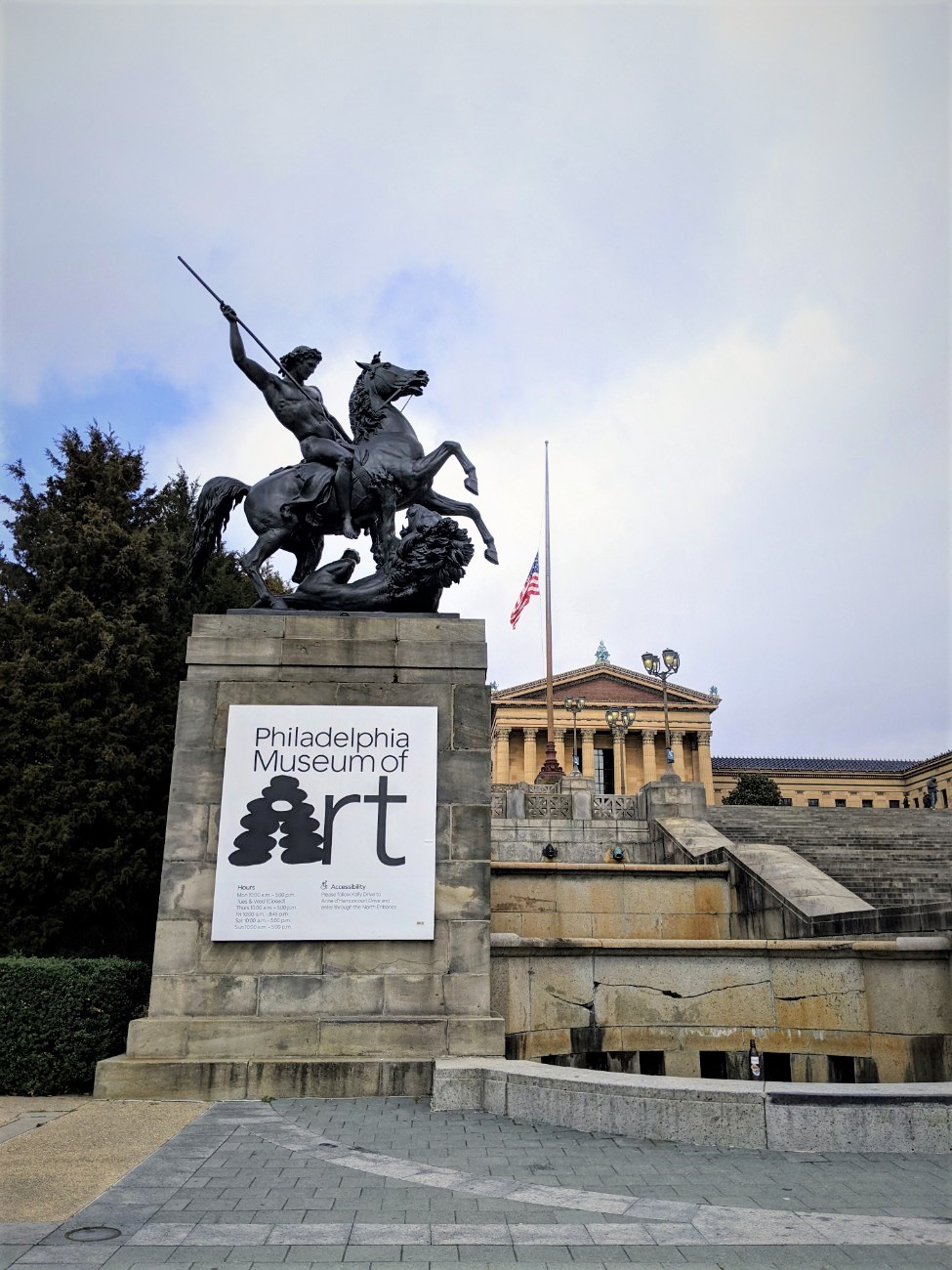
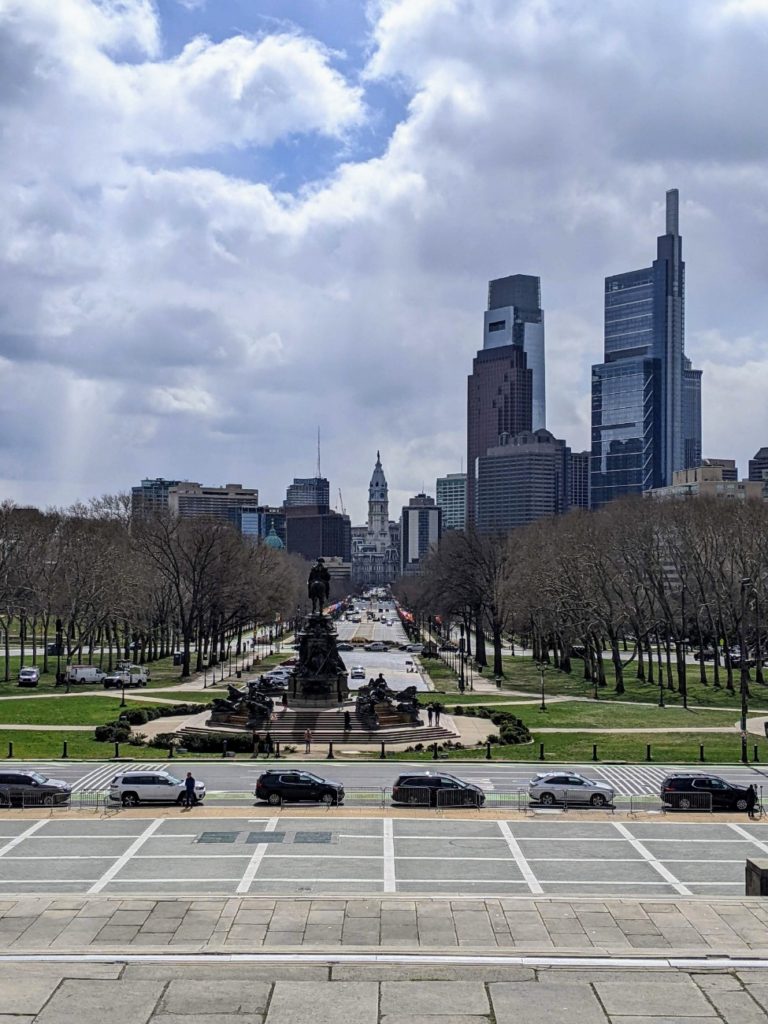
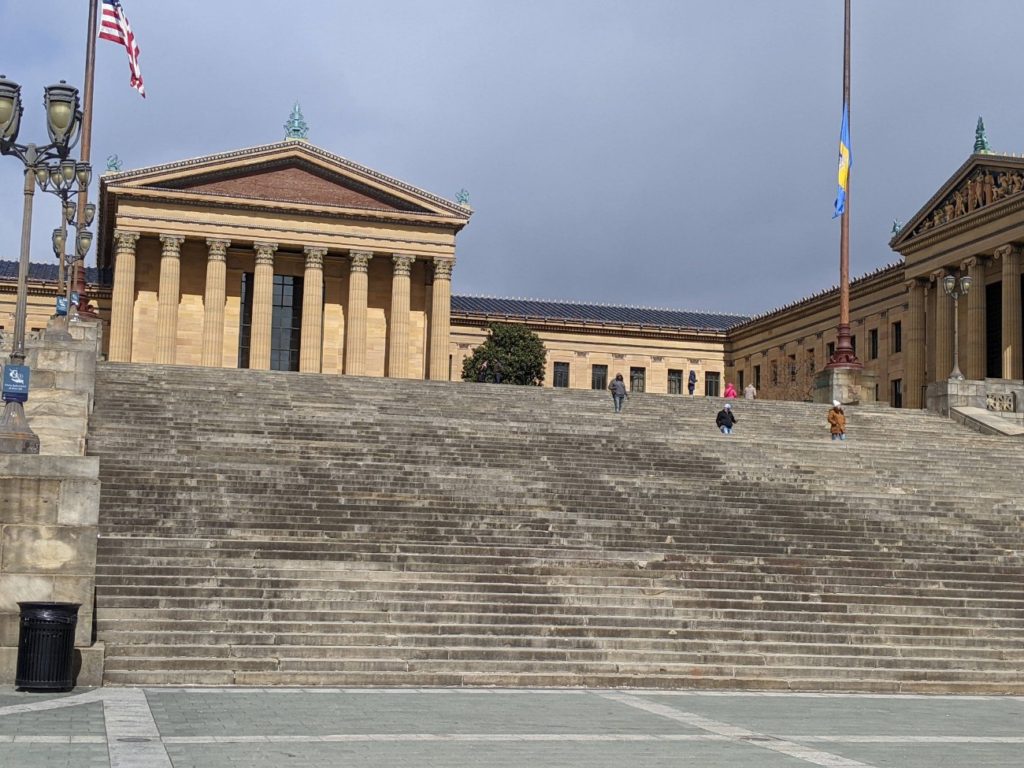
Outside the Philadelphia Art Museum
Besides the “Rocky” steps, there’s a lot to see outside of the Philadelphia Museum of Art. The huge building opens its wings like arms toward the city, with a courtyard and fountain, and a terrace around the whole museum. It looks for all the world as if this is where you would enter. And, I imagine, is where you would have entered when the building first opened in 1928.
Interestingly, only one of the museum’s several classical-style pediments has been completed in the last 100 years. If you’re standing in the courtyard, it’s on the left and portrays “Western Civilization.”
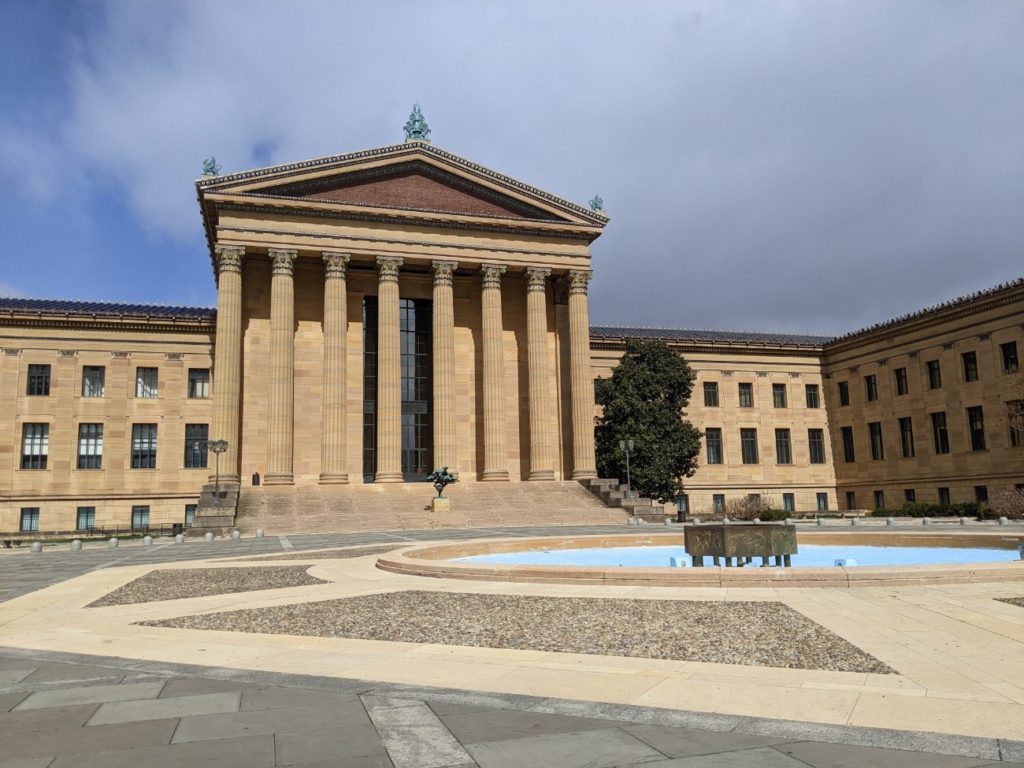
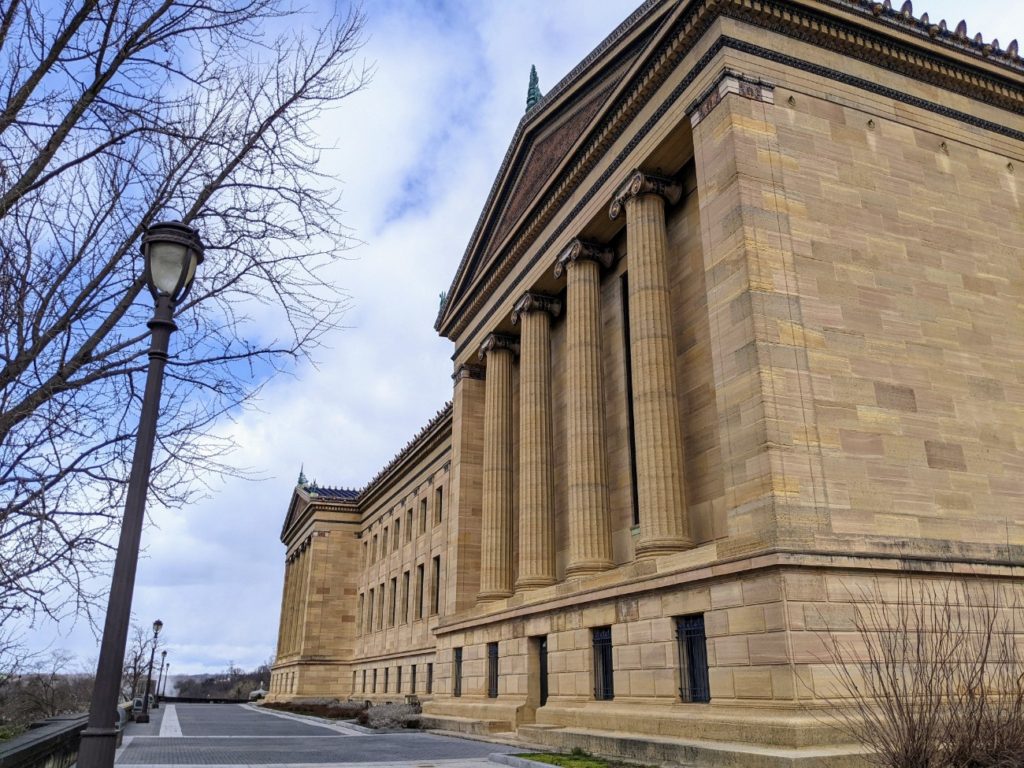

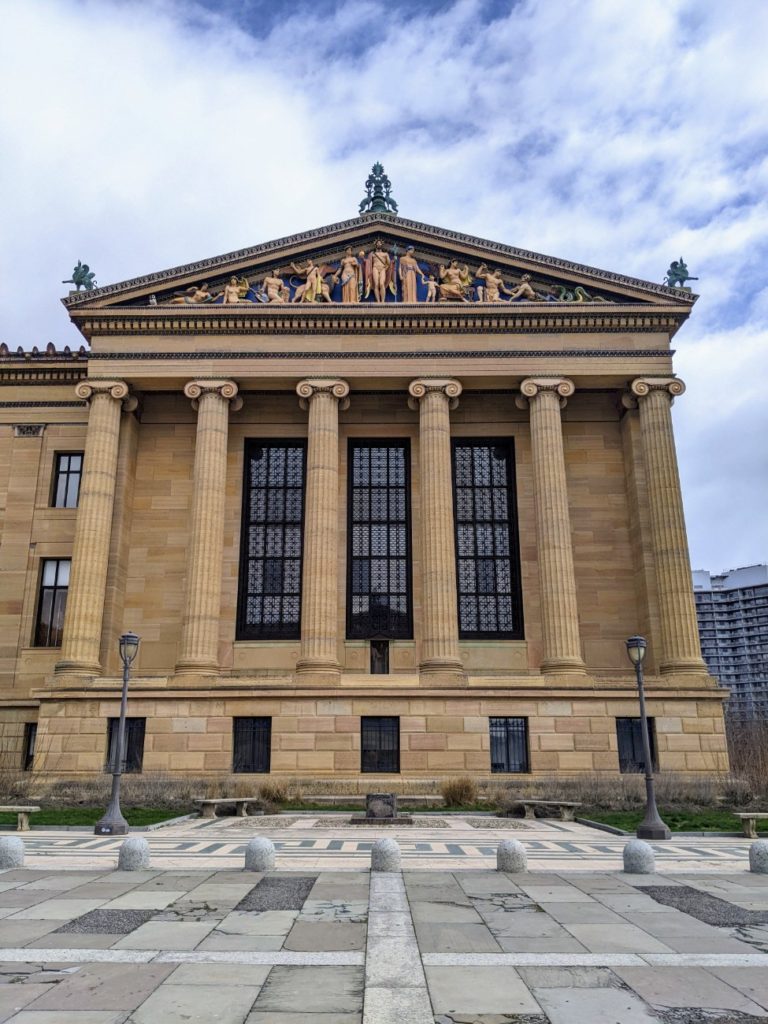
Washington Monument Fountain
Towards the parkway, inside Eakins Oval, is the large Washington Monument fountain. George Washingon, mounted high up on a horse, faces toward the parkway. The pedestal directly beneath him depicts America as Liberty breaking the chains of tyranny paired with two hopeful new Americans. On the back, a more bedraggled woman depicts the “rallying cry of the Revolution” paired with two soldiers. Side panels show scenes of the Revolutionary War.
On an outer ring are four more figures, from under which flow the water of the fountain. This ring represents American figures, with two Native American figures on the front corners and two European Americans on the back. Each figure is flanked by pairs of American animals – moose, elk, bears, and buffalo. There’s also an alligator and snake under the European figures.
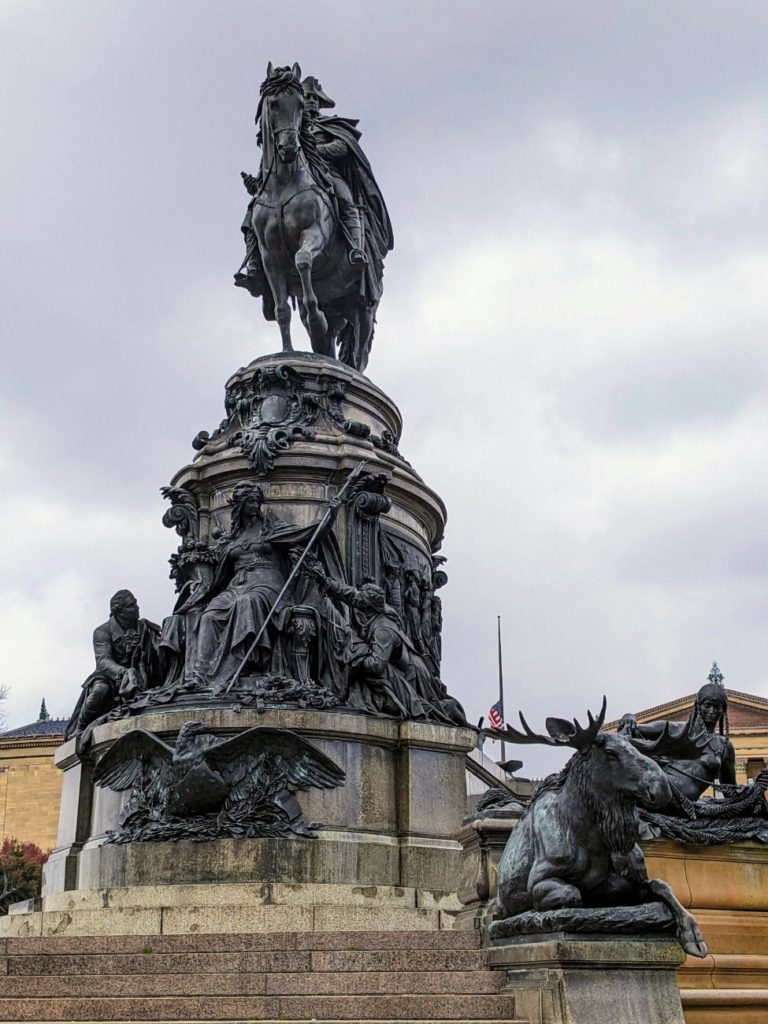
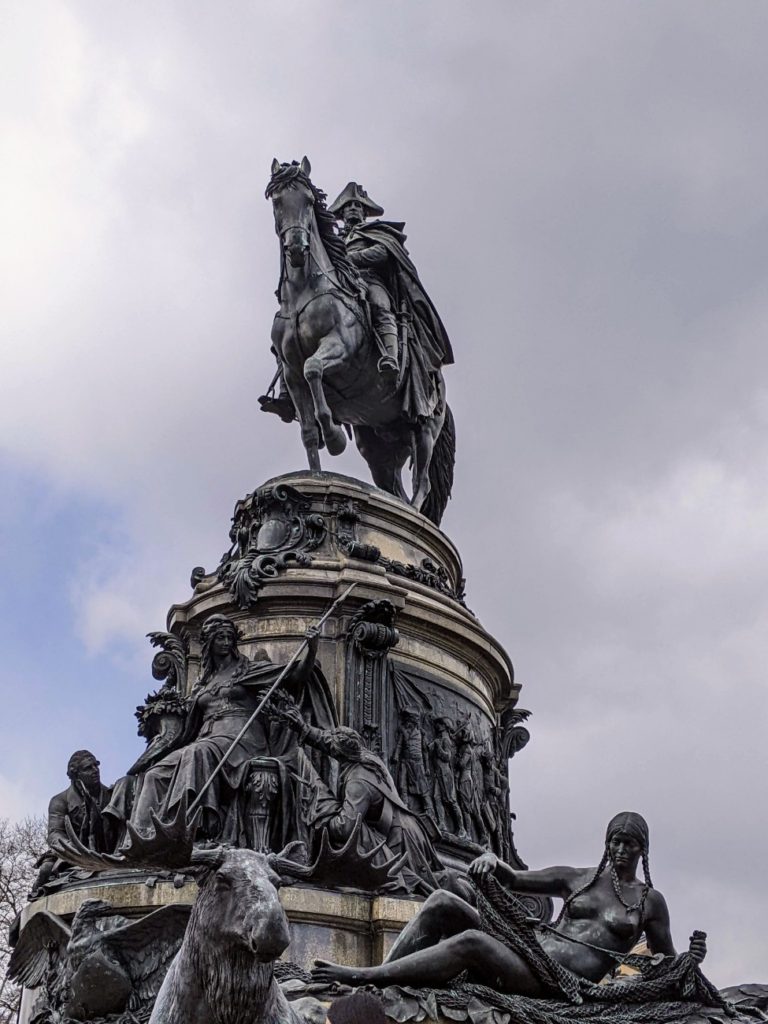
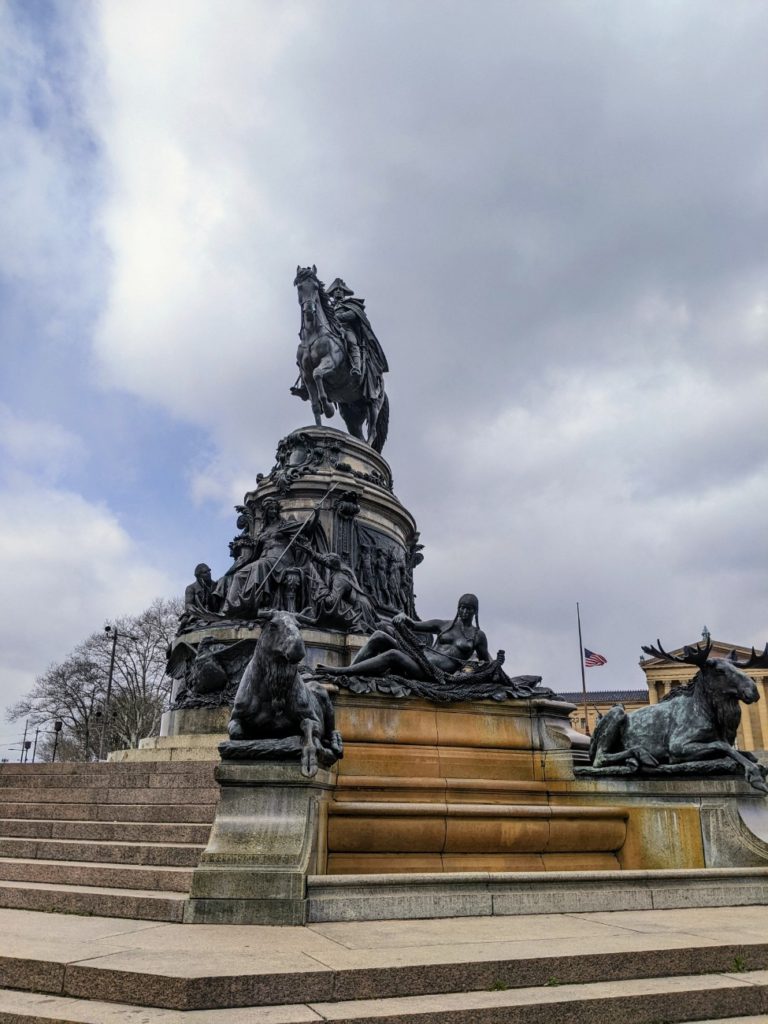
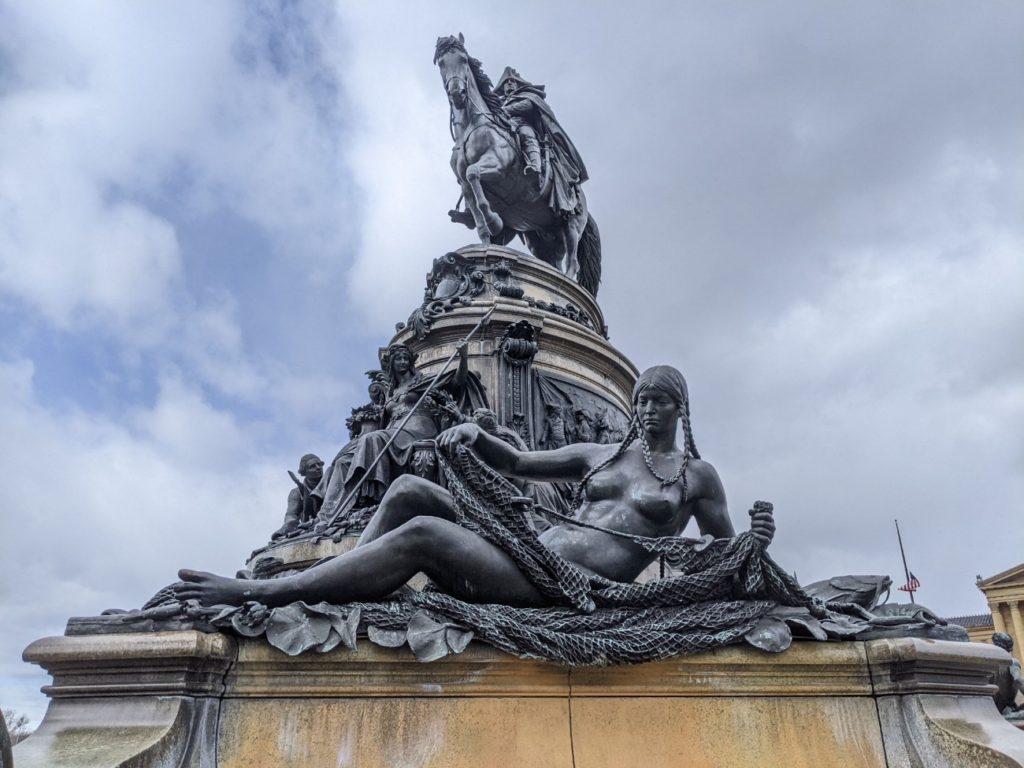
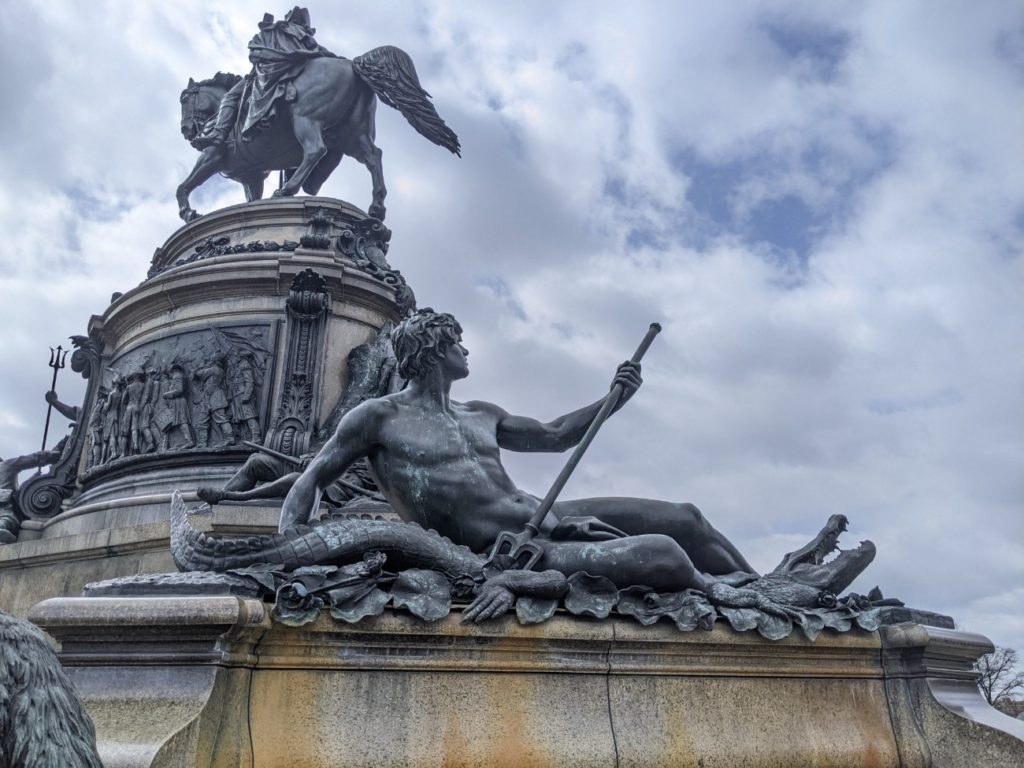
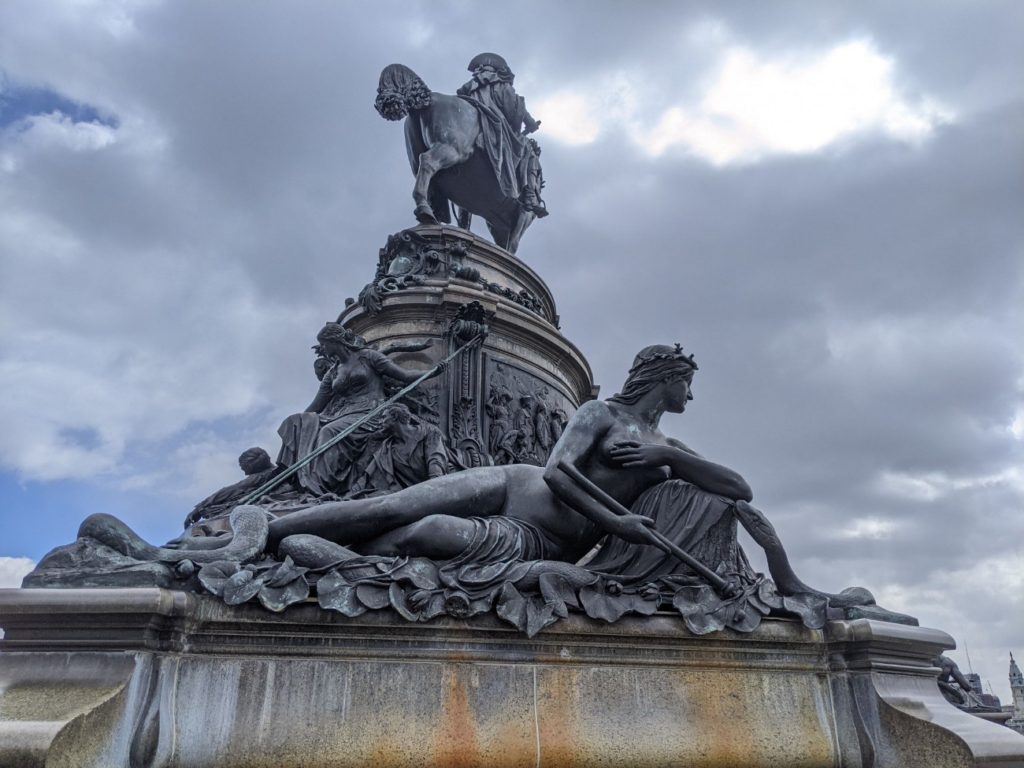
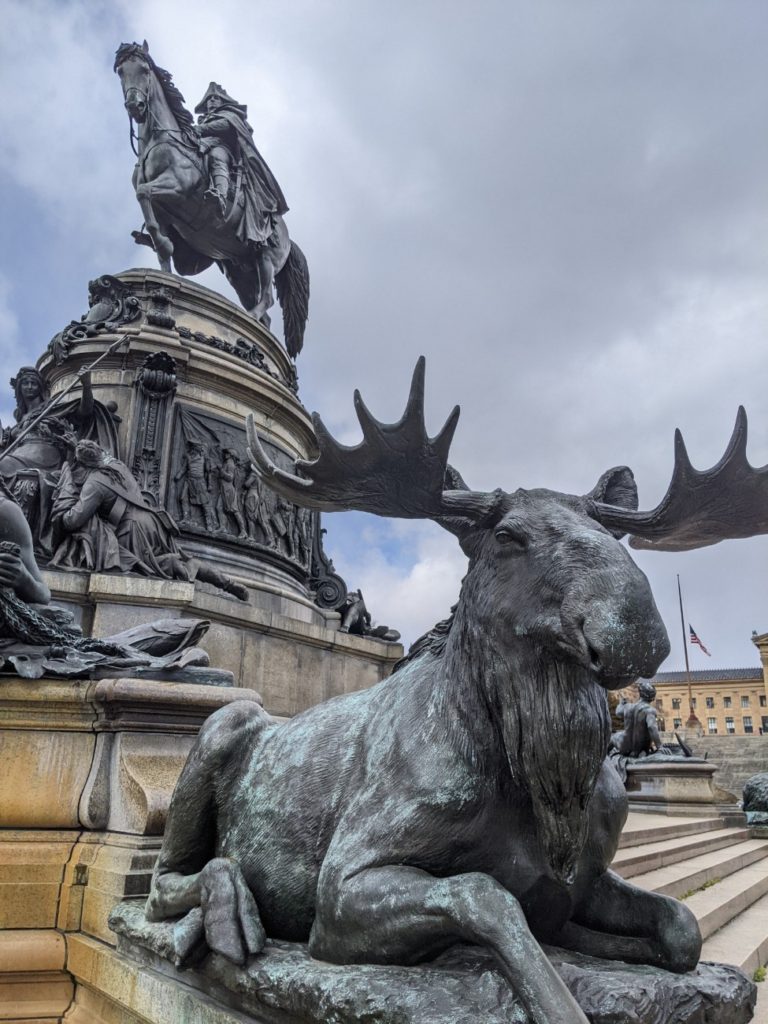
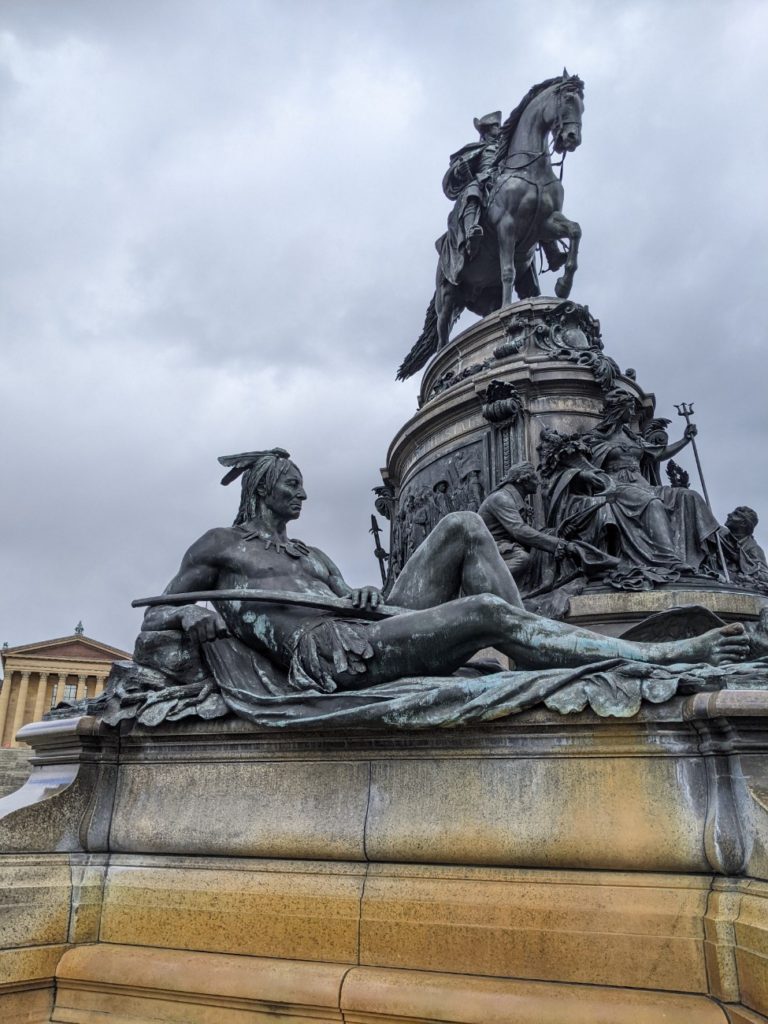
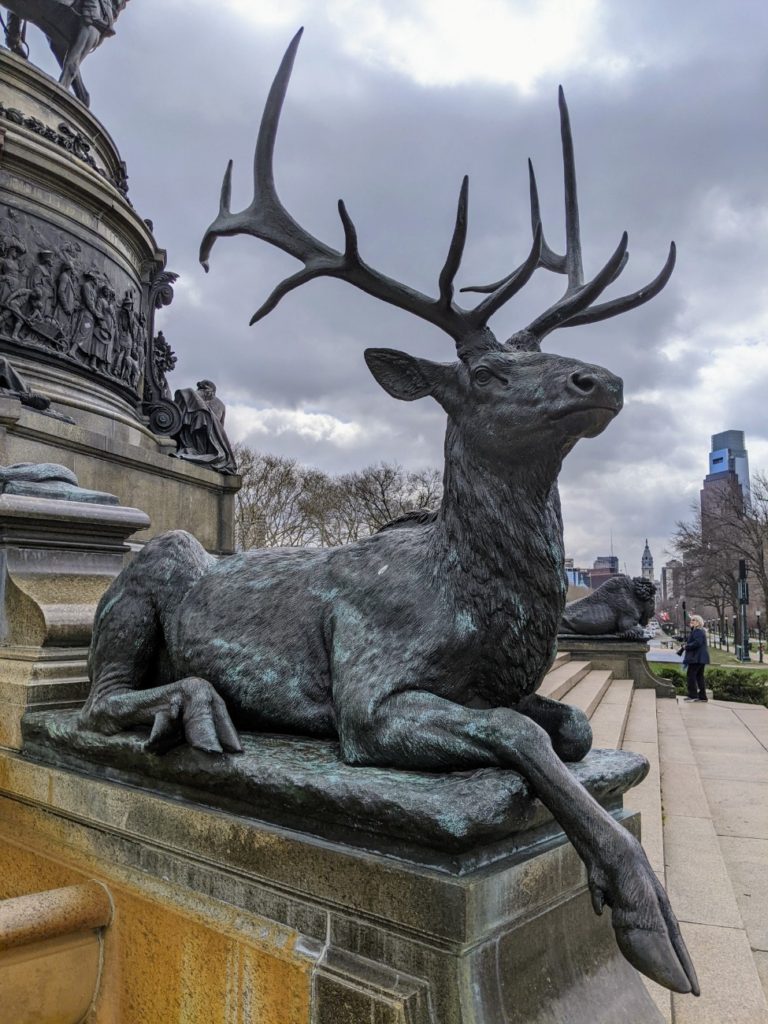
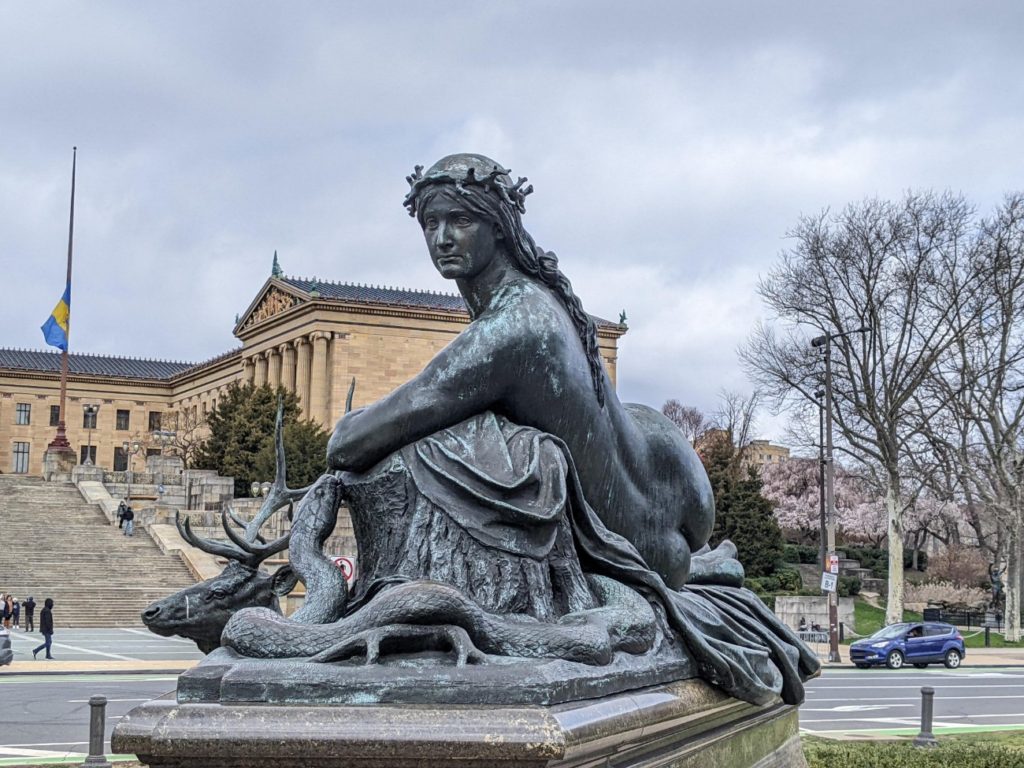
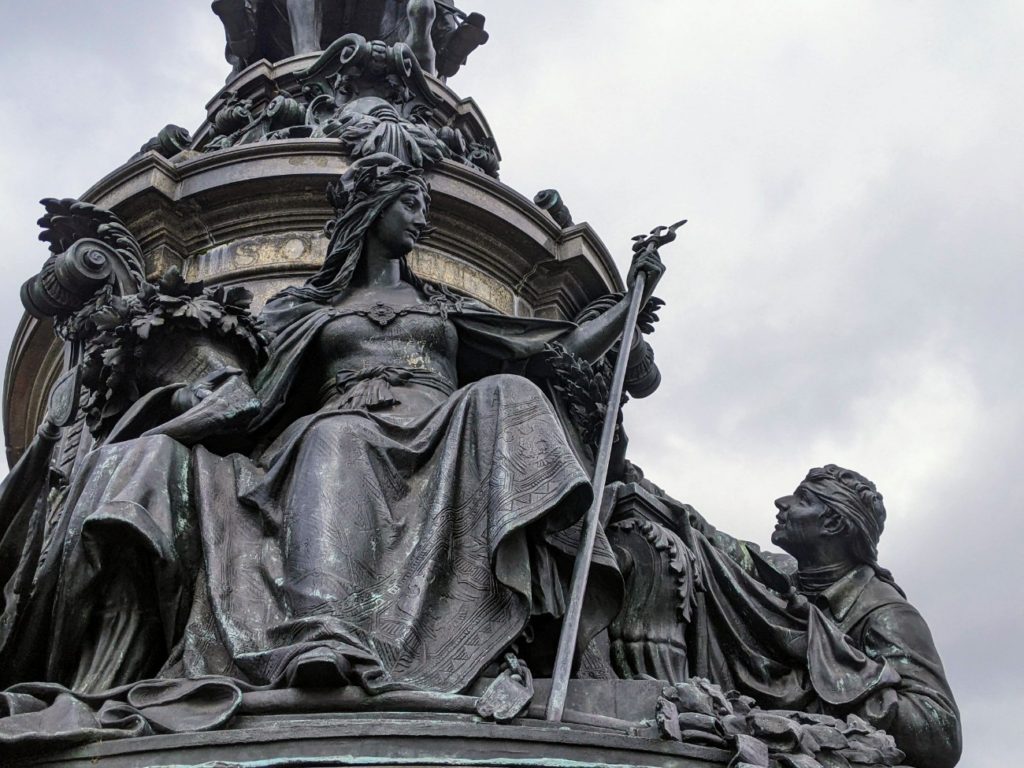
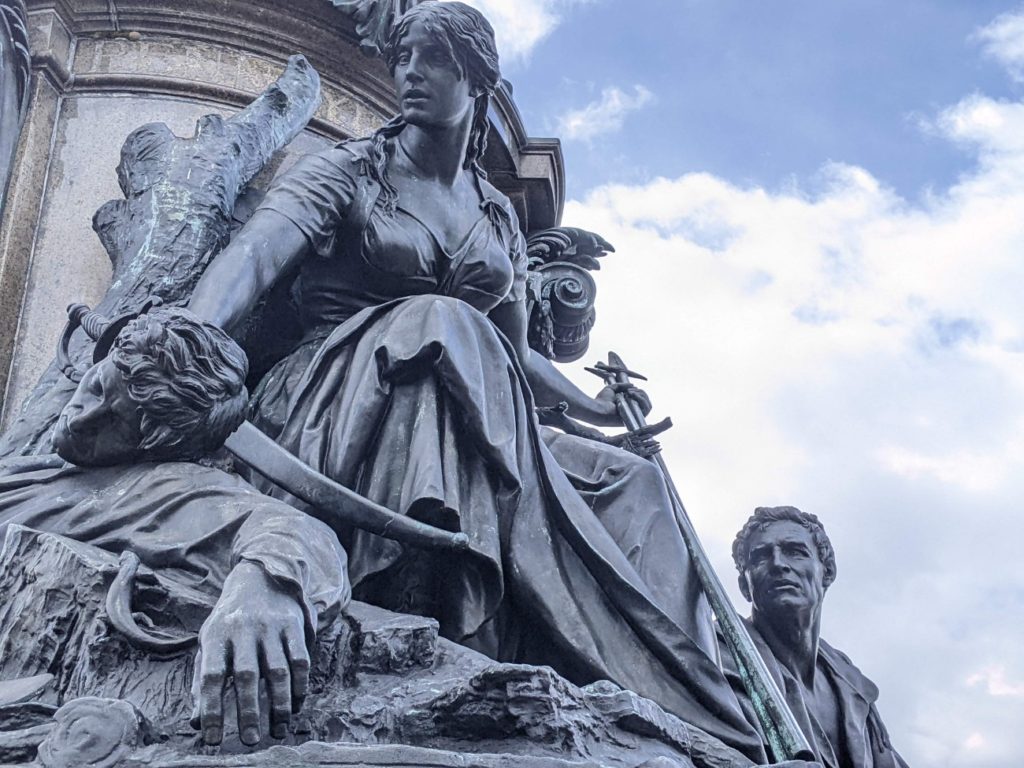
There are two more typical fountains on either side of the Washington Monument, another big one in the courtyard of the museum, and water flows down each side of the museum steps as well. When I visited in March, none of the water was on, but it must be nice in the summer.
Behind the Museum
Around the “back” of the museum (which is where you actually enter), there is a hillside and sculpture garden. If you keep going down a bit further than I did, you find the Fountain of Sea Horses, which is a fun play area in the summer. Toward the Schuykill River is a gazebo and “promenade” out toward the river. From there, you can get a good view of a short dam and the Fairmount Water Works, and picturesque Boathouse Row. There’s even a short lighthouse on the far side of Boathouse Row.
Rounding the side of the museum are walking paths, another gazebo, and a pretty treehouse structure. They all look so nice – until you get up close. Most everything is blocked off and covered in graffiti. That’s probably a great metaphor for almost all of Philadelphia – it looks fantastic at a distance.
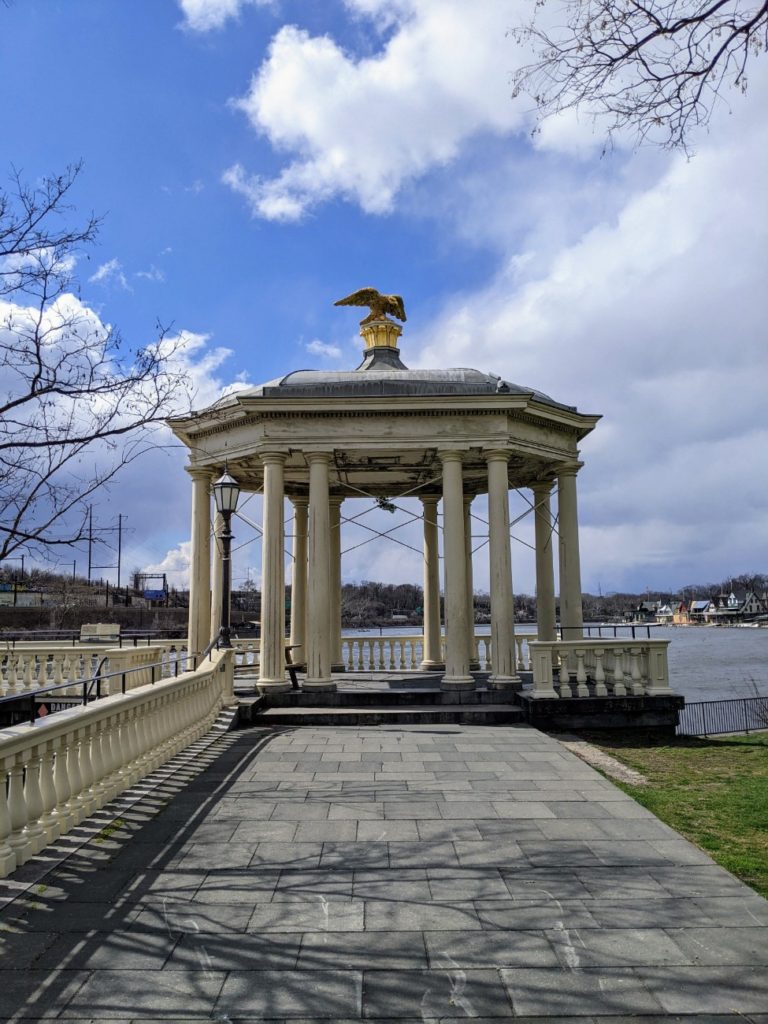
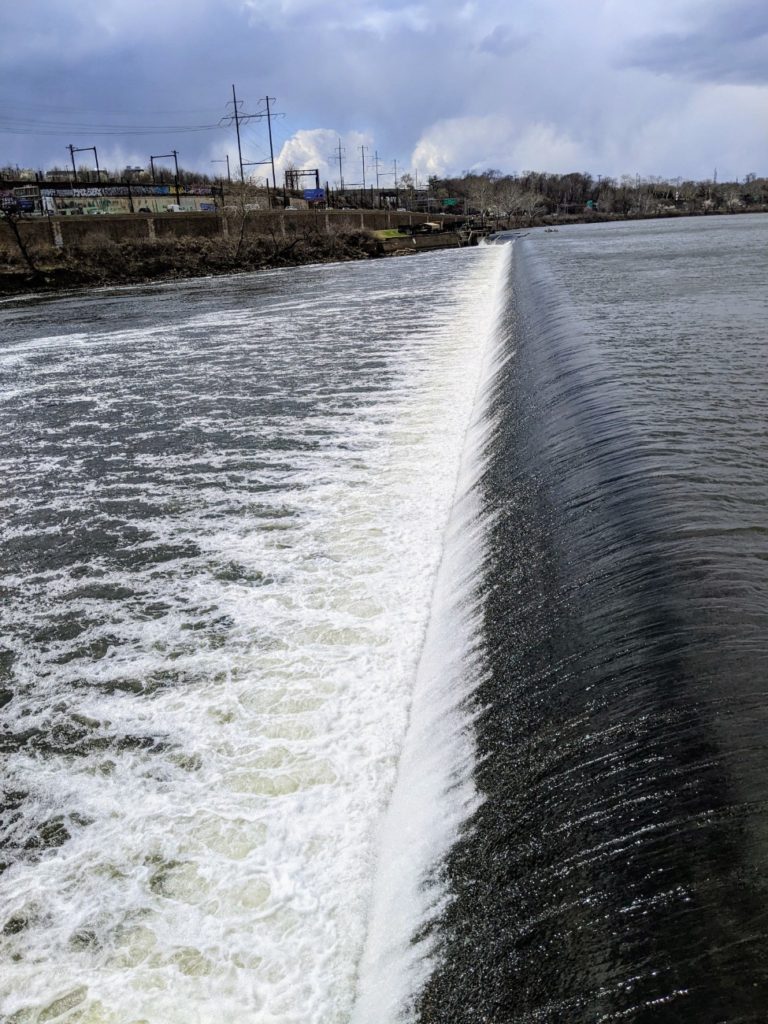
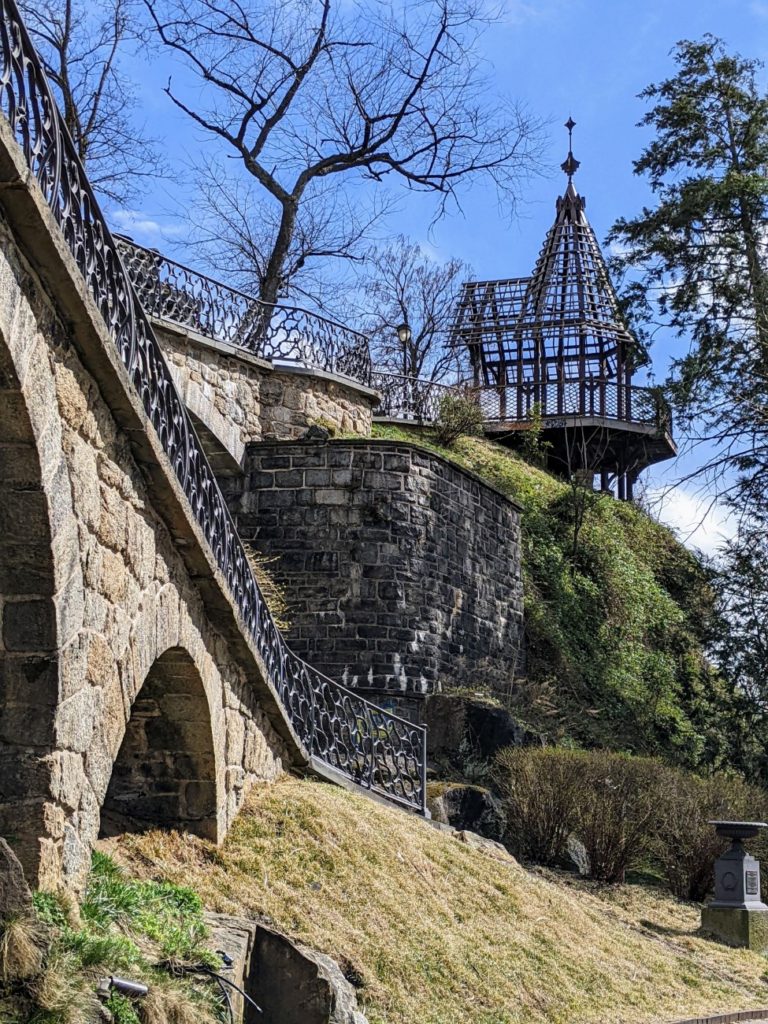
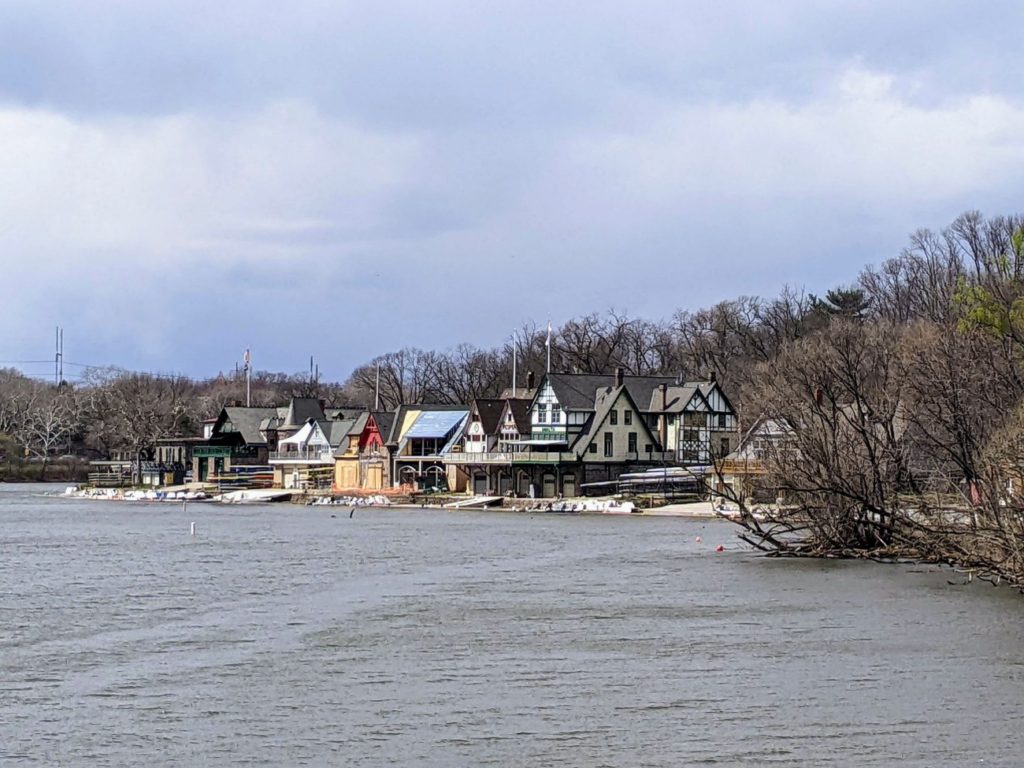
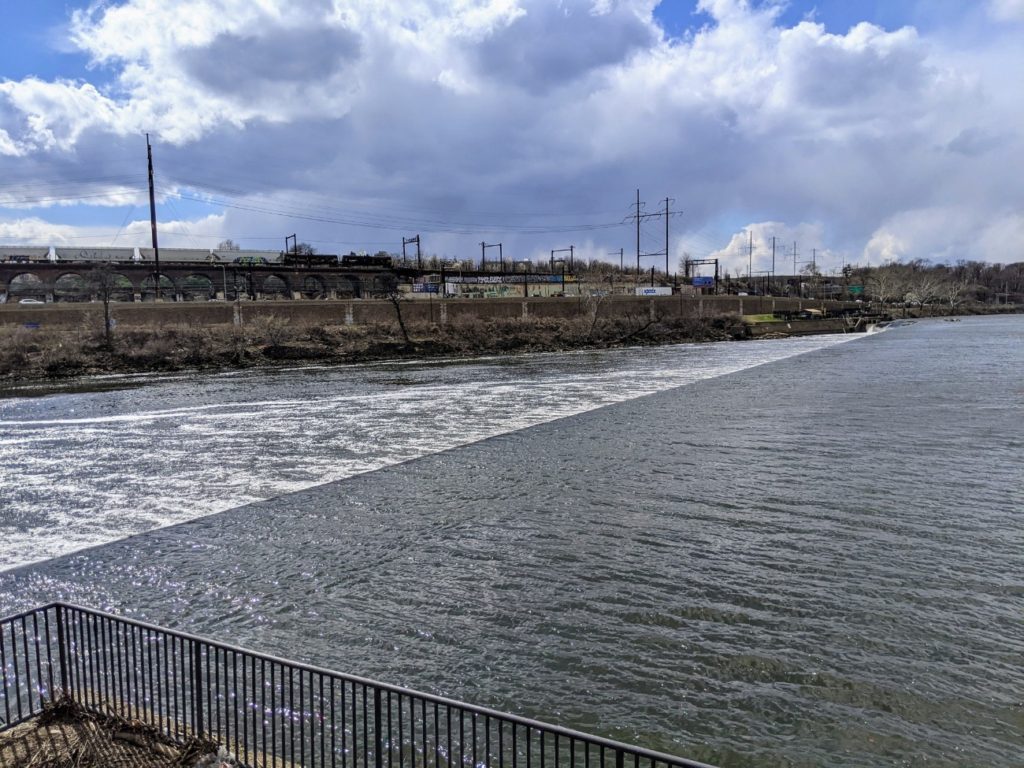
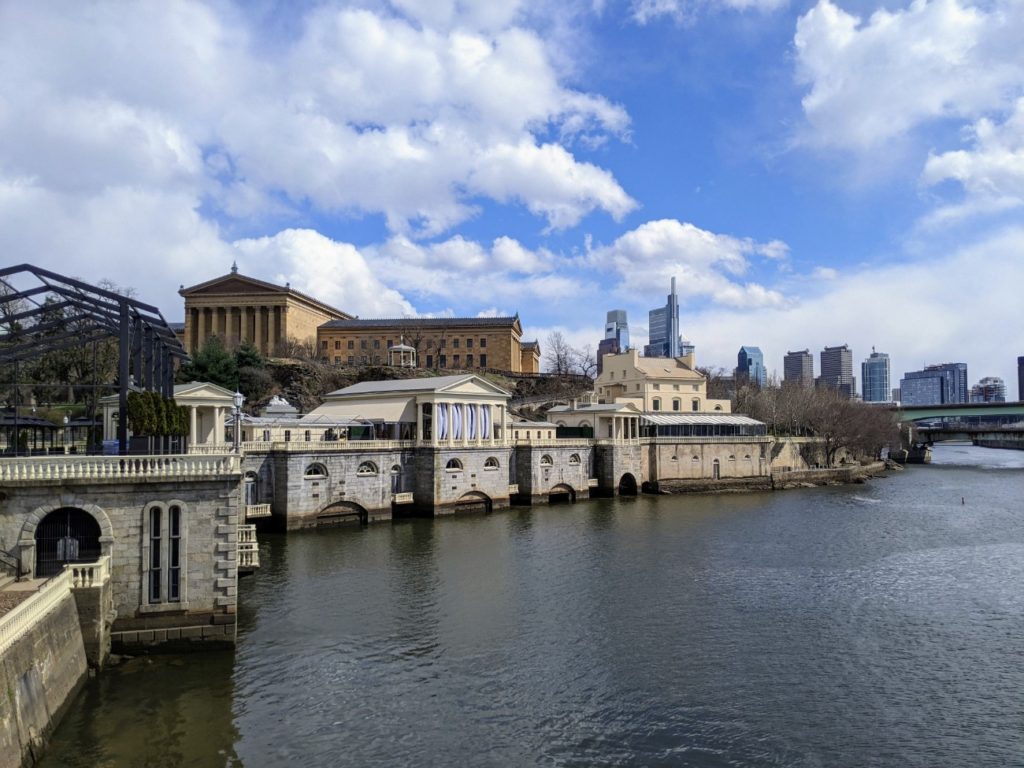
Entering the Museum
You actually enter the Philadelphia Art Museum from what I would consider the back – the side away from Ben Franklin Parkway. There’s a small lot right at the door, with more parking in an underground garage.
This entrance is the West Entrance and the main entrance. There’s a coat check, a cafe, and a restaurant on this level. Or you can go left or right to the art galleries. There’s another entrance on the north side (opposite the river) that’s a bit smaller.
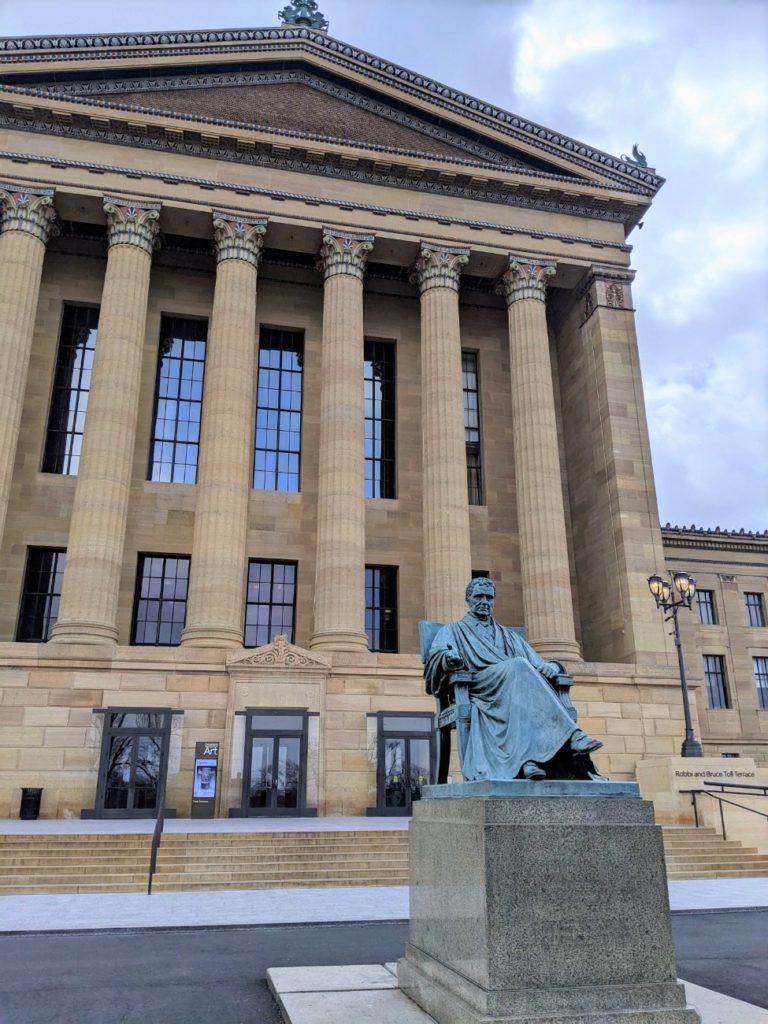
Ground Floor
I’m going to cover the Philadelphia Art Museum from the ground up, briefly covering this bottom floor. One thing I found fascinating about the museum overall is that the rooms go from cavernously big down here on the ground, to smaller and smaller galleries as you ascend.
There isn’t any art (right now) on the ground floor, so you can skip it if you aren’t entering from the North Entrance. But I’m glad I walked down here from the West Entrance just to see the grand north and south vaulted walkways.
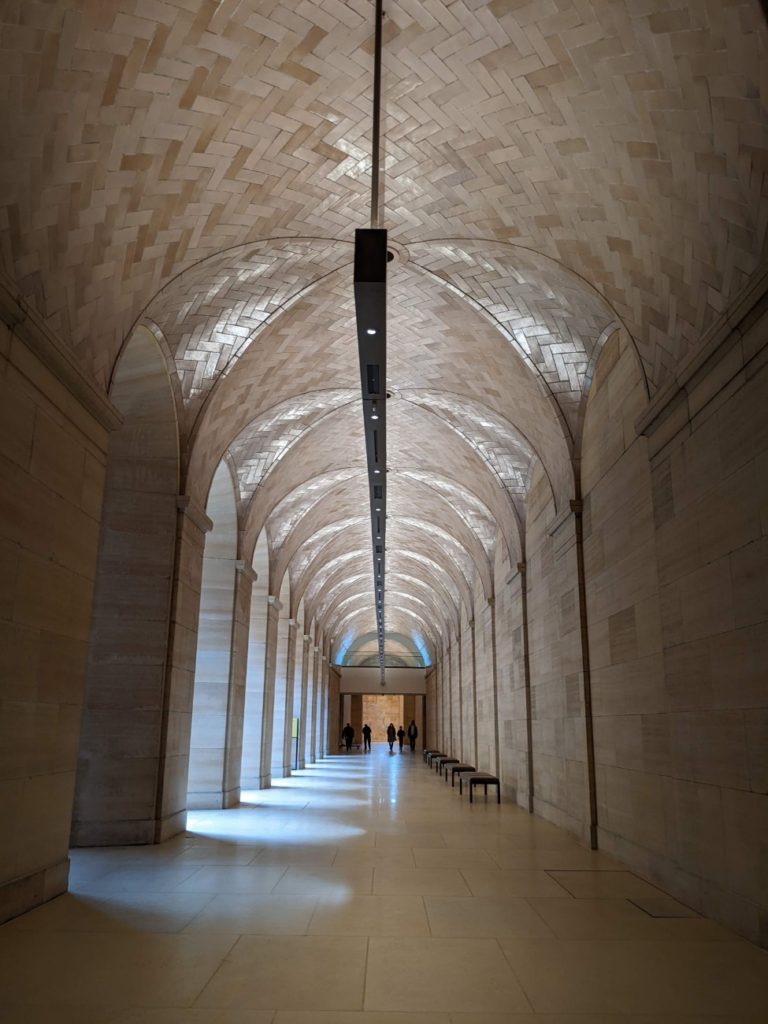
If you do enter from the North Entrance on Kelley Drive, the largest museum shop is right past the entrance, as well as larger bathrooms and classroom space. As you walked down the grand vaulted hallway, there is an espresso bar to the left.
In the middle of the two vaulted walkways is Williams Forum, a modern take on a grand staircase that spans the ground and first floors. This is how you reach the art galleries above, or there are elevators nearby and at the North Entrance. There is a huge underground expansion underway that will be accessed on the ground level, giving these vaults considerable more action. (There’s currently nothing down the south walkway for the public.)
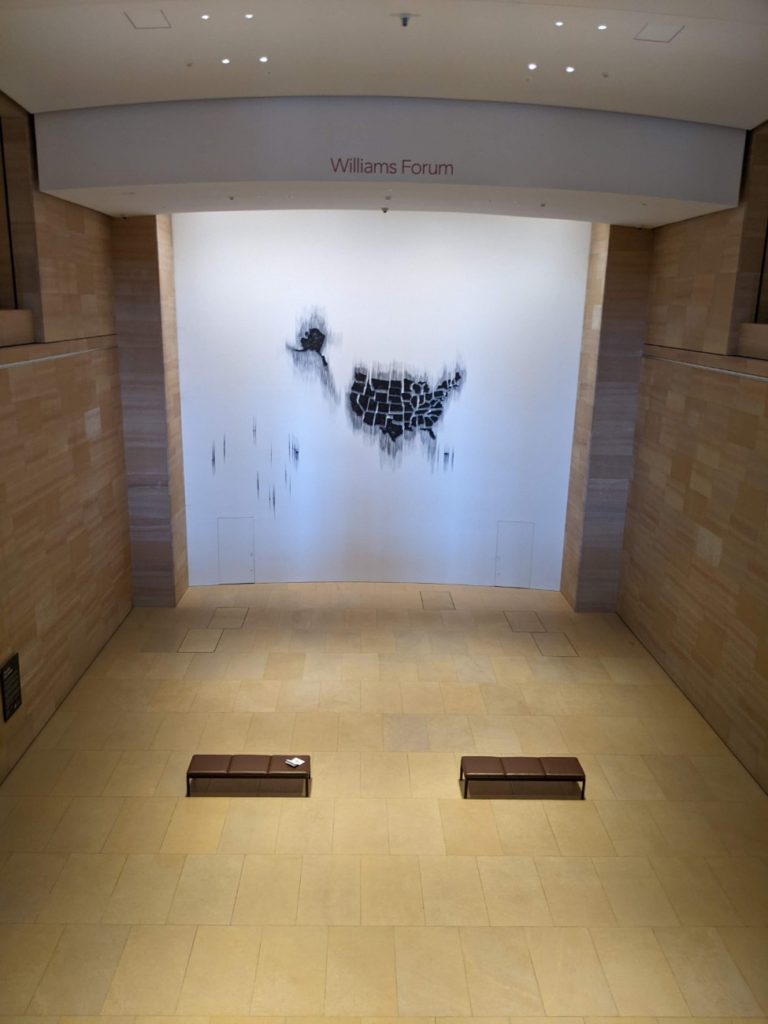
(And I can’t believe I didn’t get a picture of the stairs side!)
First Floor
Most visitors will enter the Philadelphia Museum of Art through Lenfest Hall. This towering space has information and ticket desks, a coat check to the left, and an elevator to the right. Straight ahead is Williams Forum down to the ground floor. Staircases to the right and left take you to the Great Stair Hall above. Gift shops are also to the right and left. Down a hall to the right is a large cafe, restrooms, a smaller fine-dining restaurant, and more classrooms.
Make sure to get a map & guide from the ticket desk. It will help you navigate the huge museum, plus it helpfully points out top ten “greatest hits” items to pay attention to and where they are located.
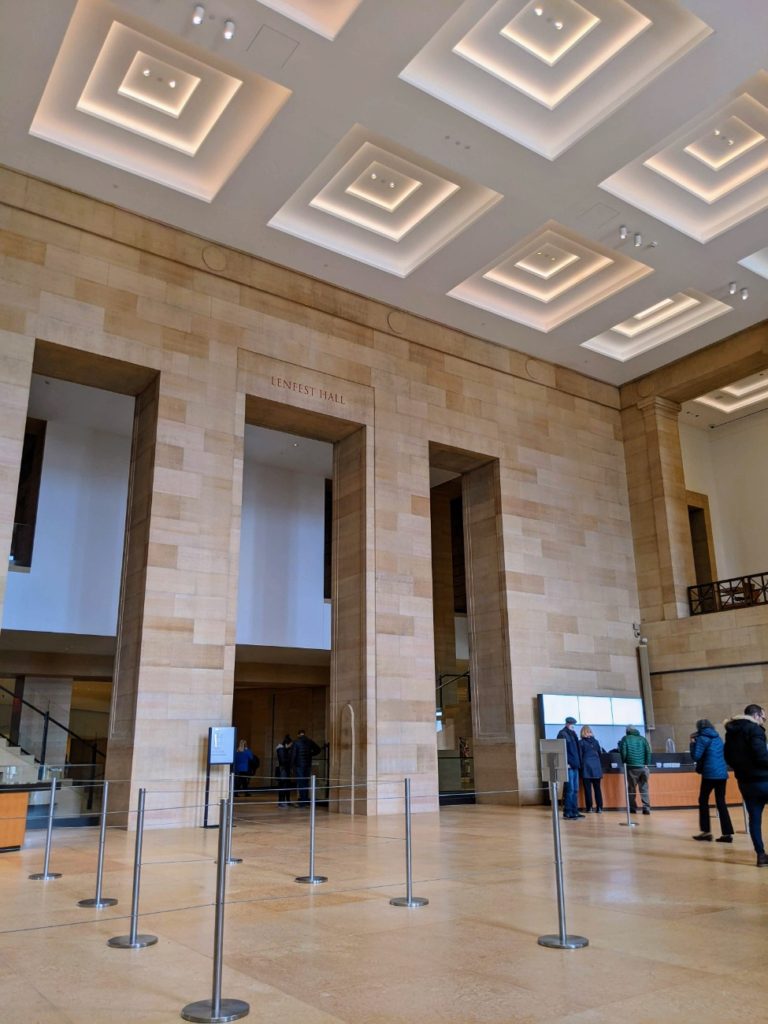
American Art 1650-1850
To the right of Lenfest Hall are galleries containing early American art from 1650-1850. Two of the “top ten” items are over here – a Native American bead belt and a portrait of a black man.
A lot of this section is portraits and furniture, though I like the room focusing on early African American art. I also like the displays where you can see how the art would have looked in someone’s home.
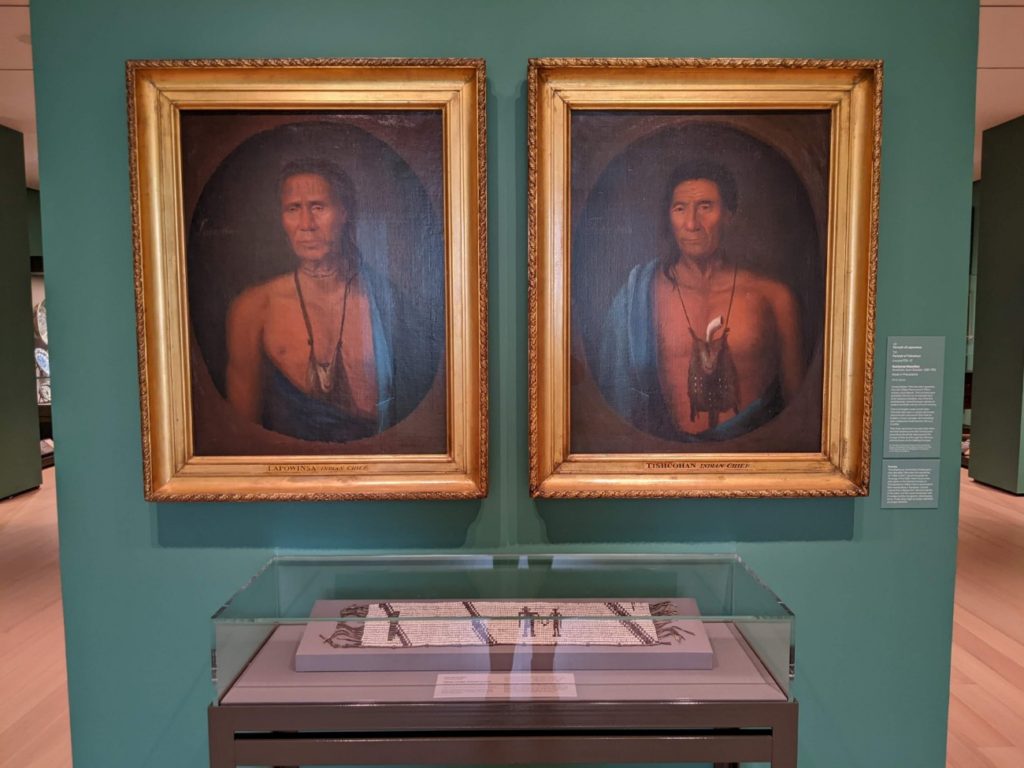
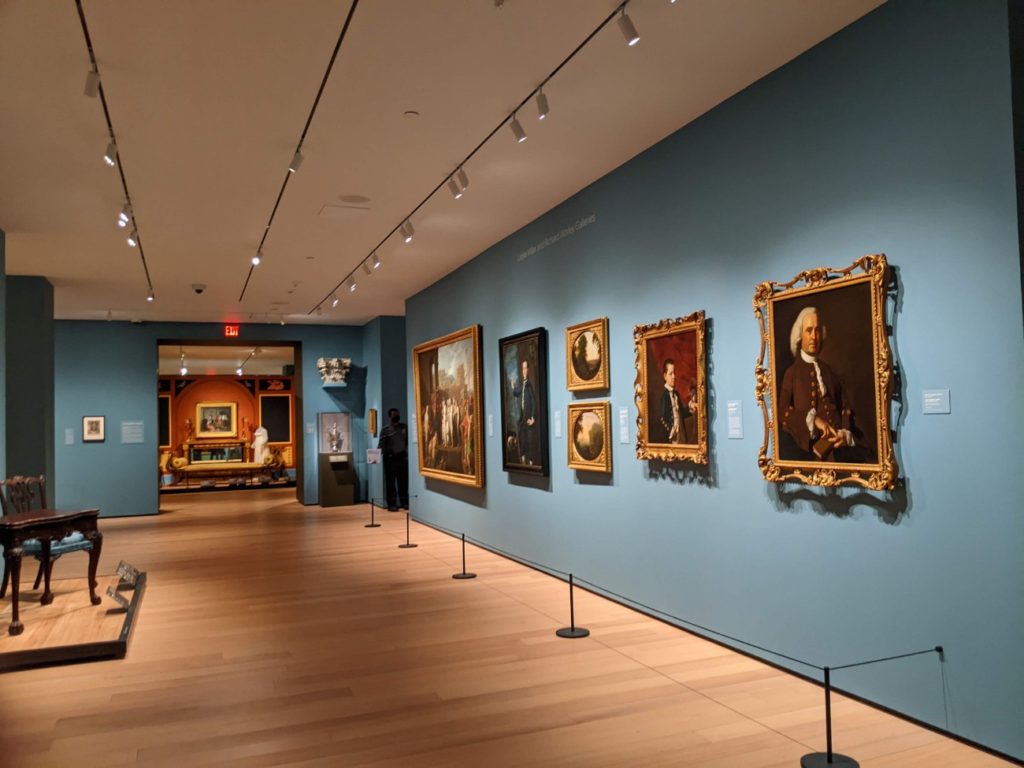
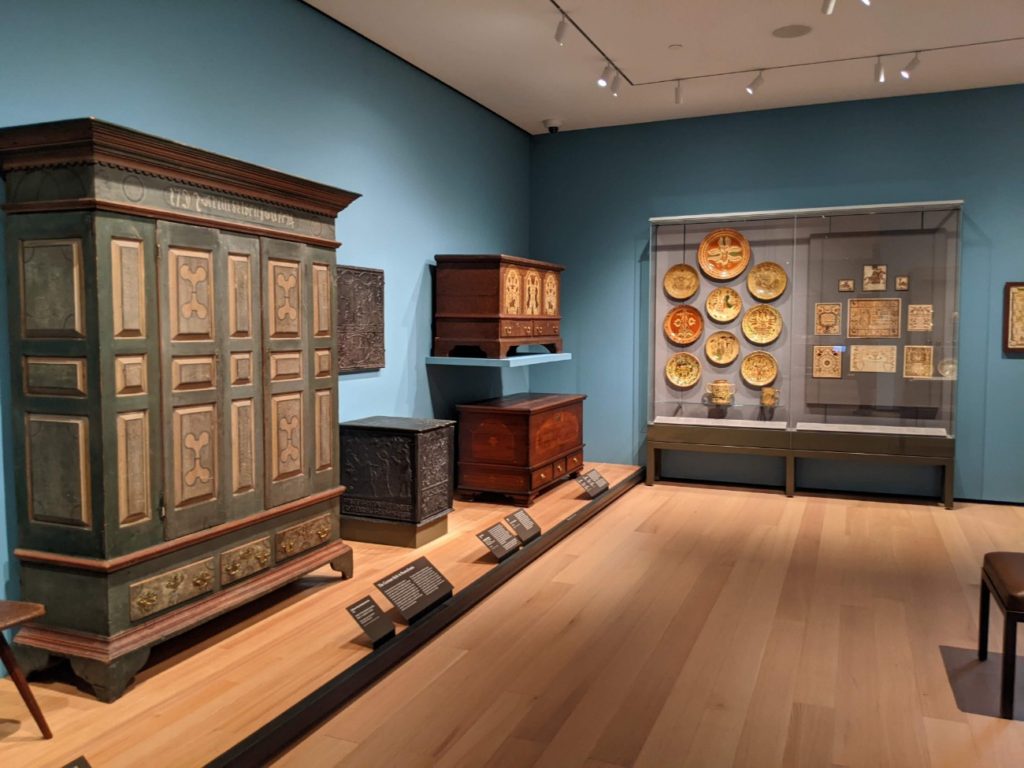
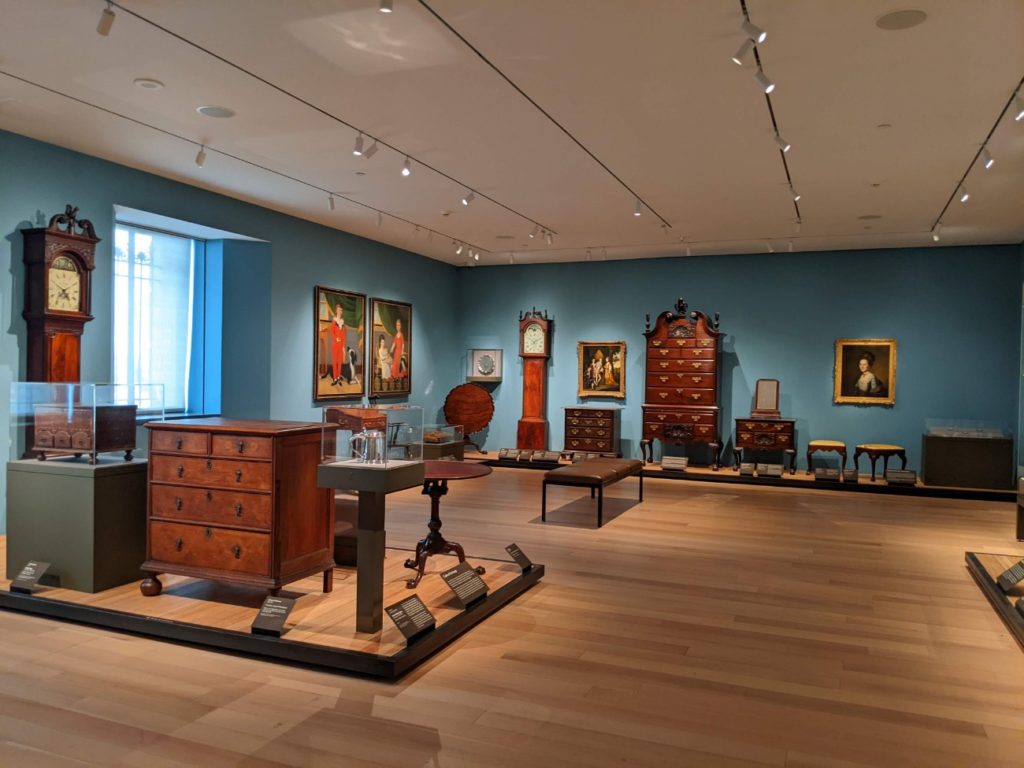
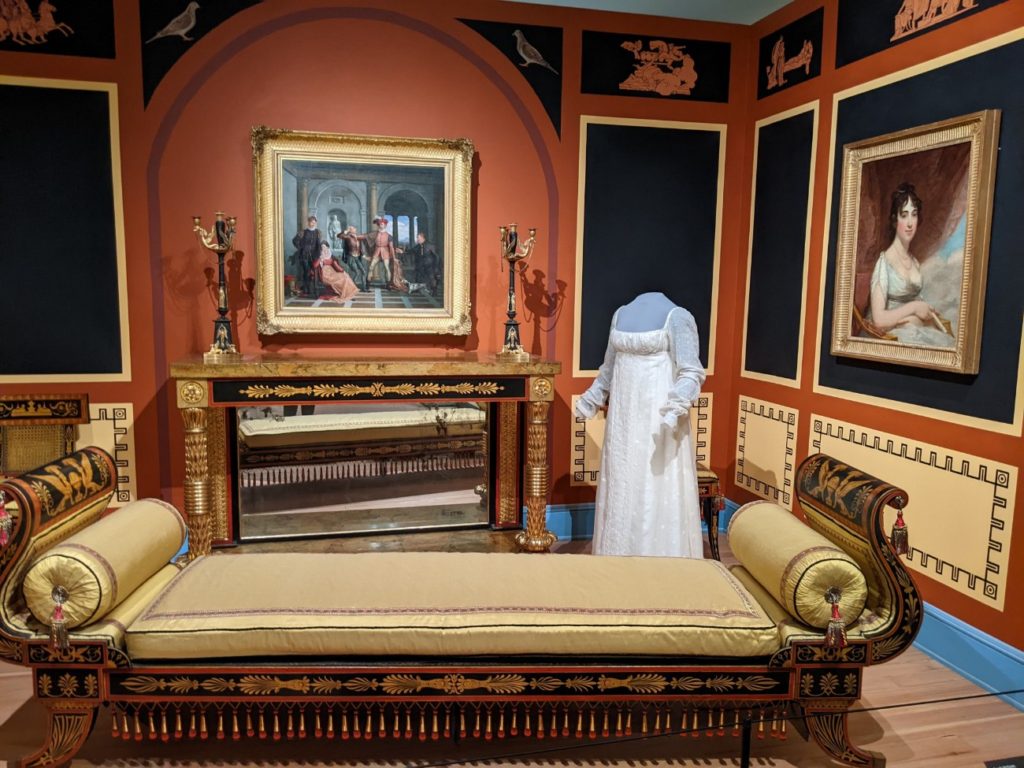
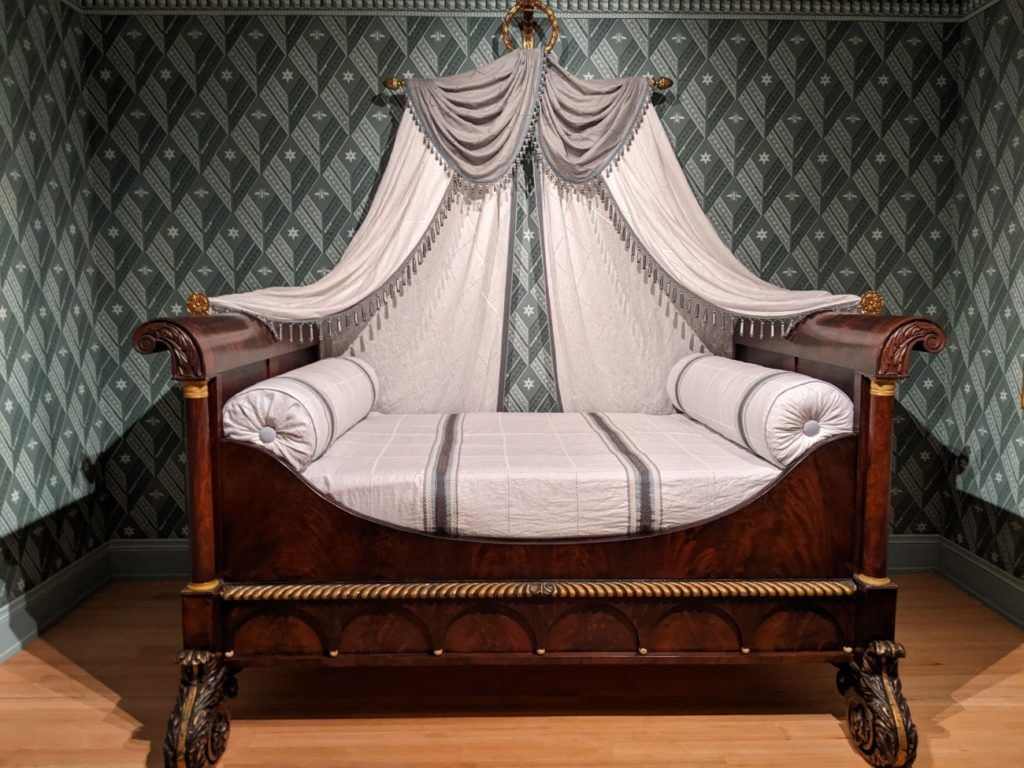
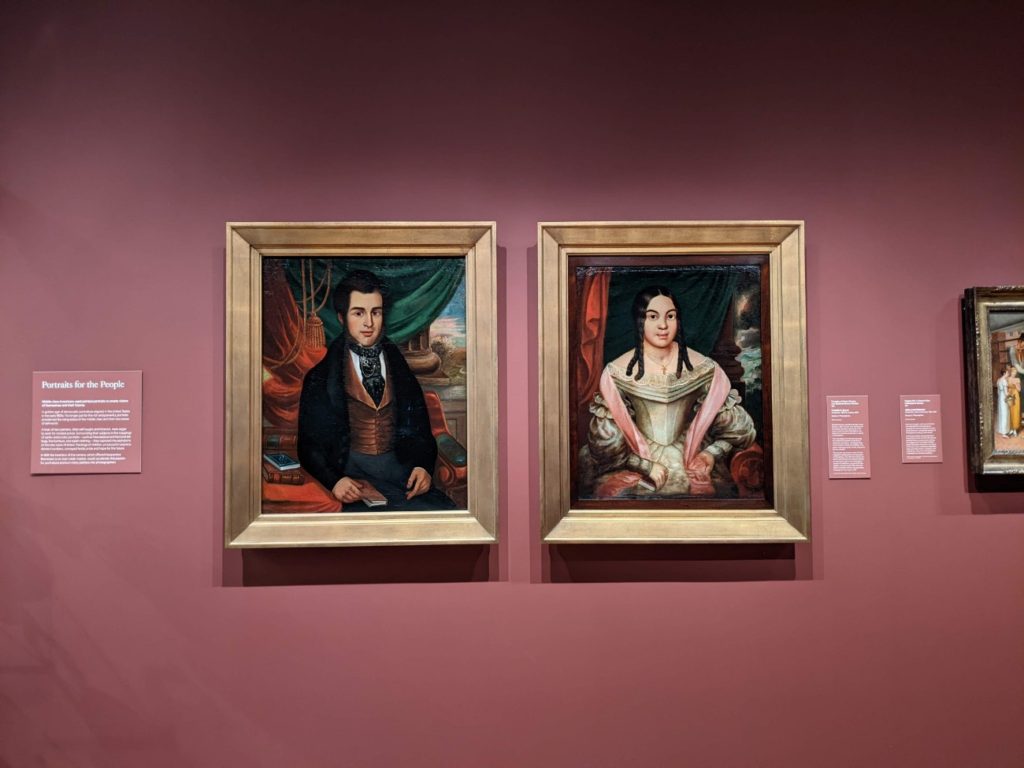
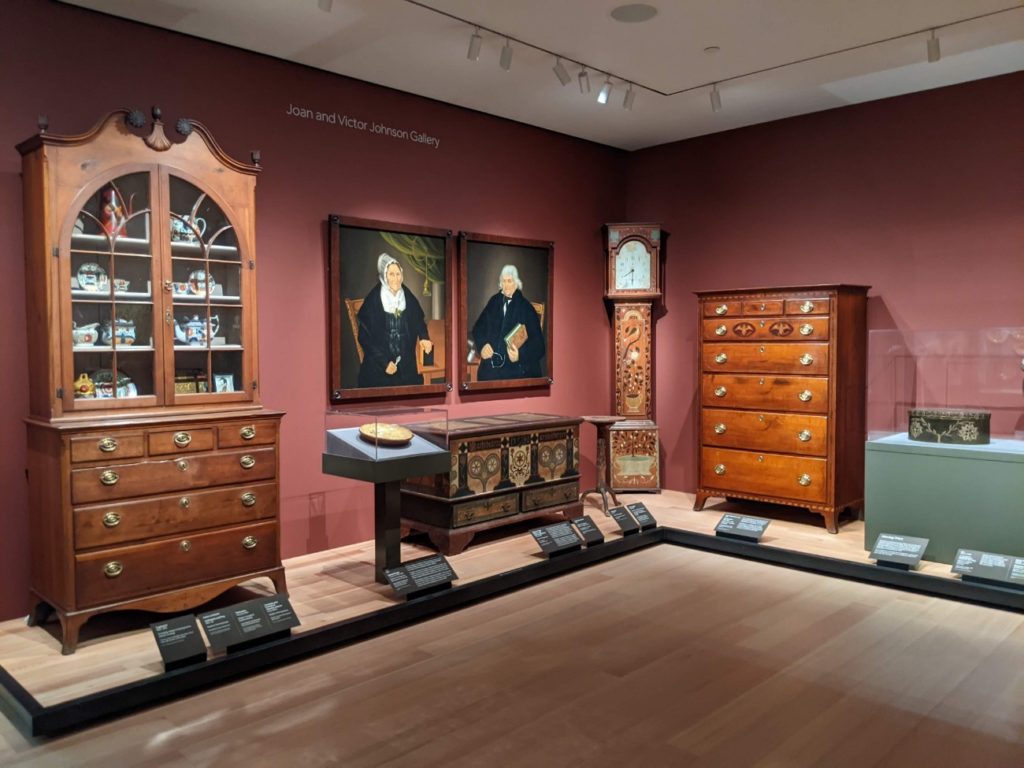
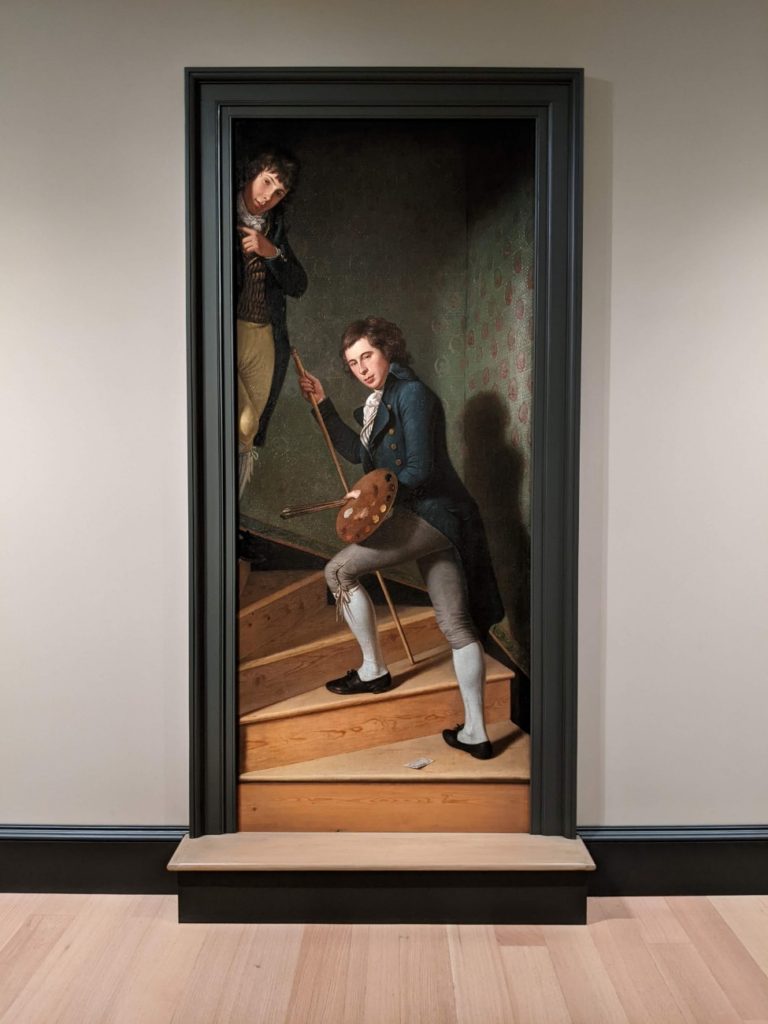
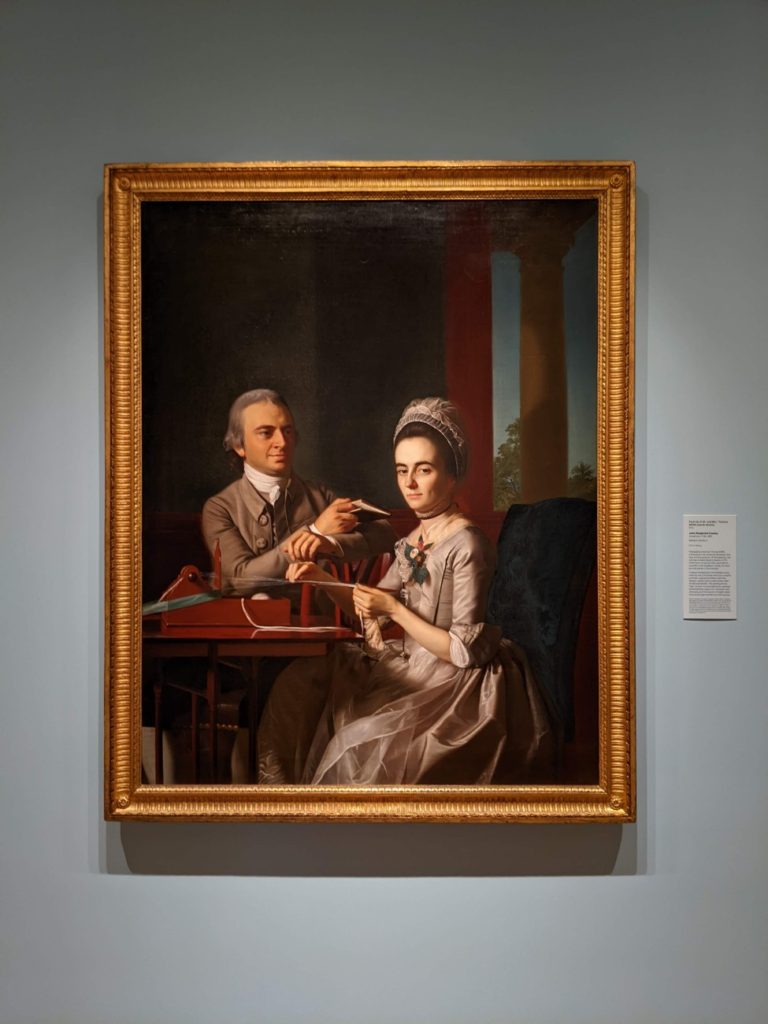
Contemporary Art
To the right is modern and contemporary art, plus some prints and photographs. They had an exhibit on grief during my visit, pulling examples of lament from multiple time periods, from a print featuring Martin Luther King to Victorian mourning clothes.
I really love that they have a reading area set up, just in case you need to sit and grieve with a book for a minute.
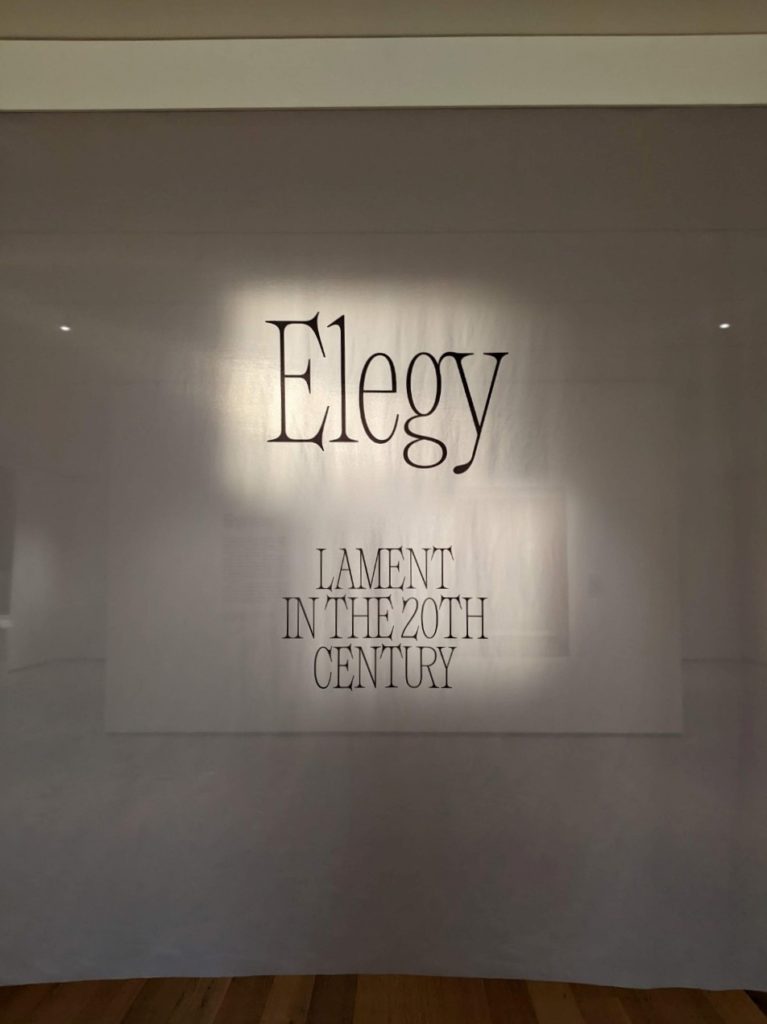
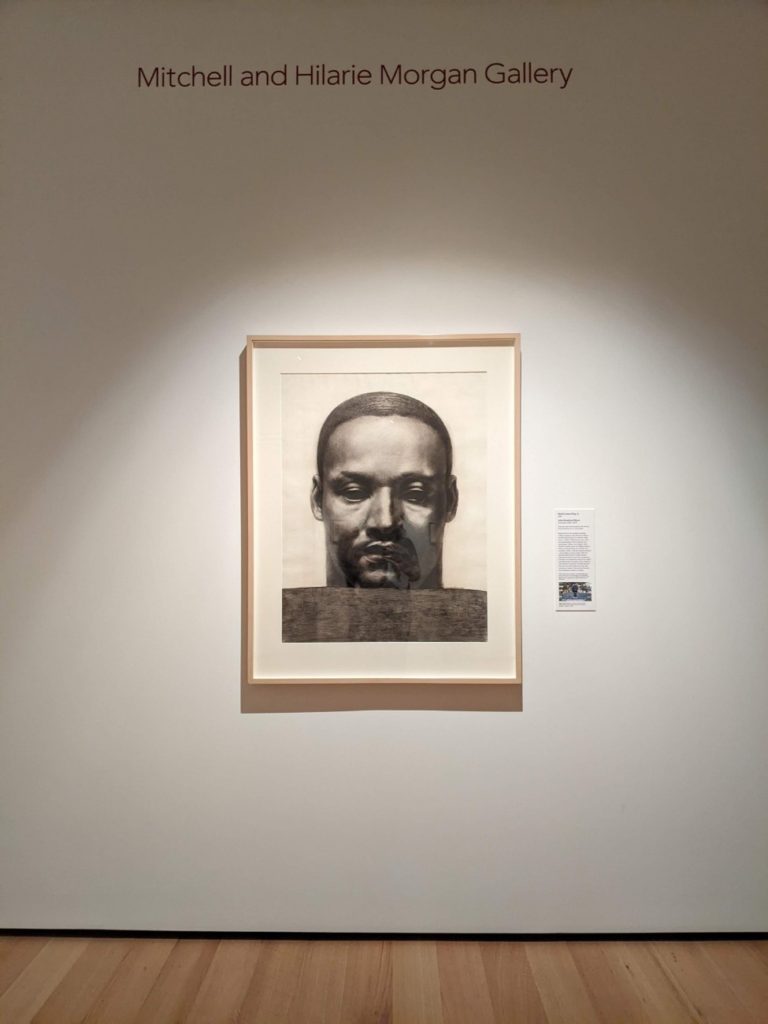
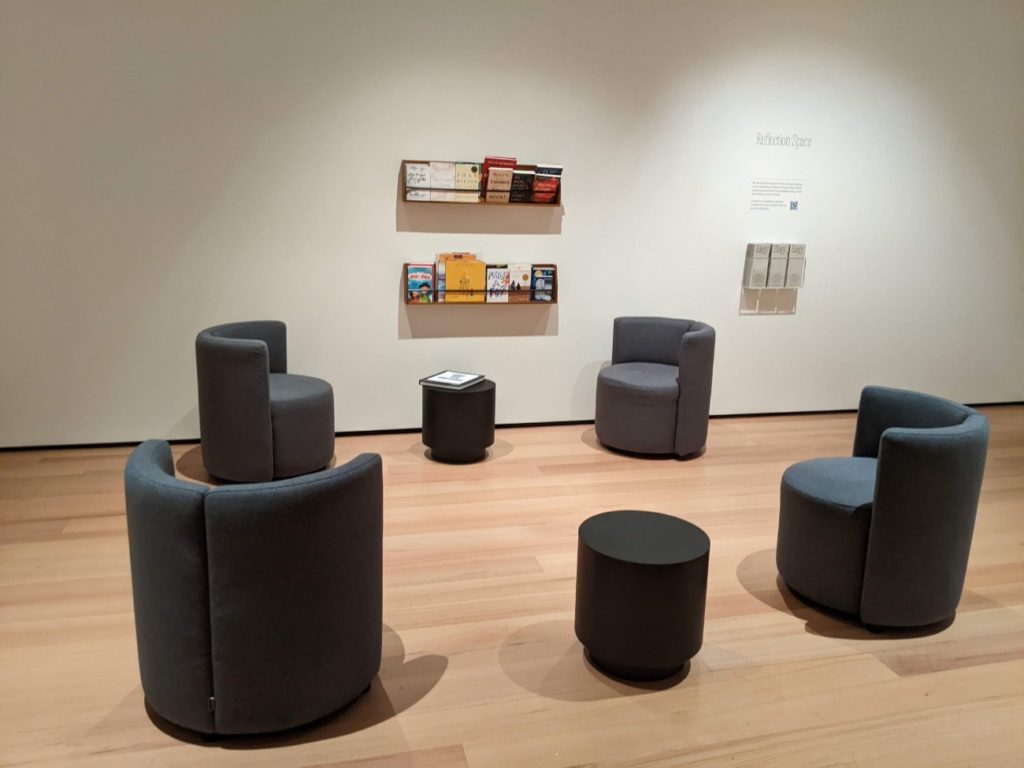
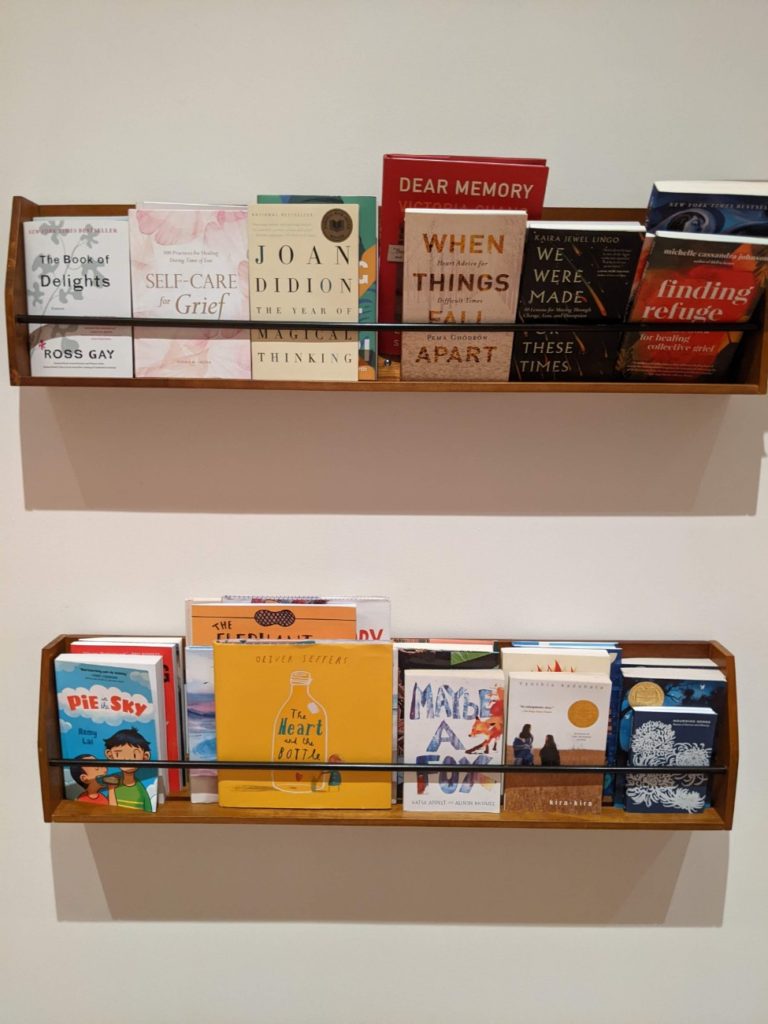
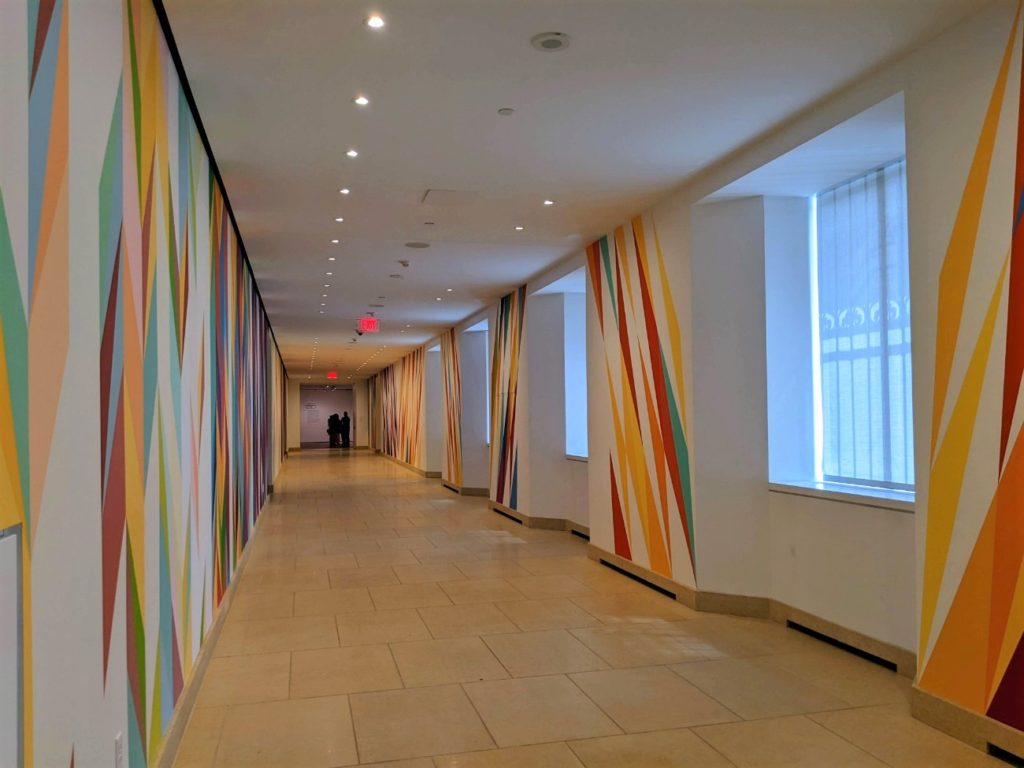
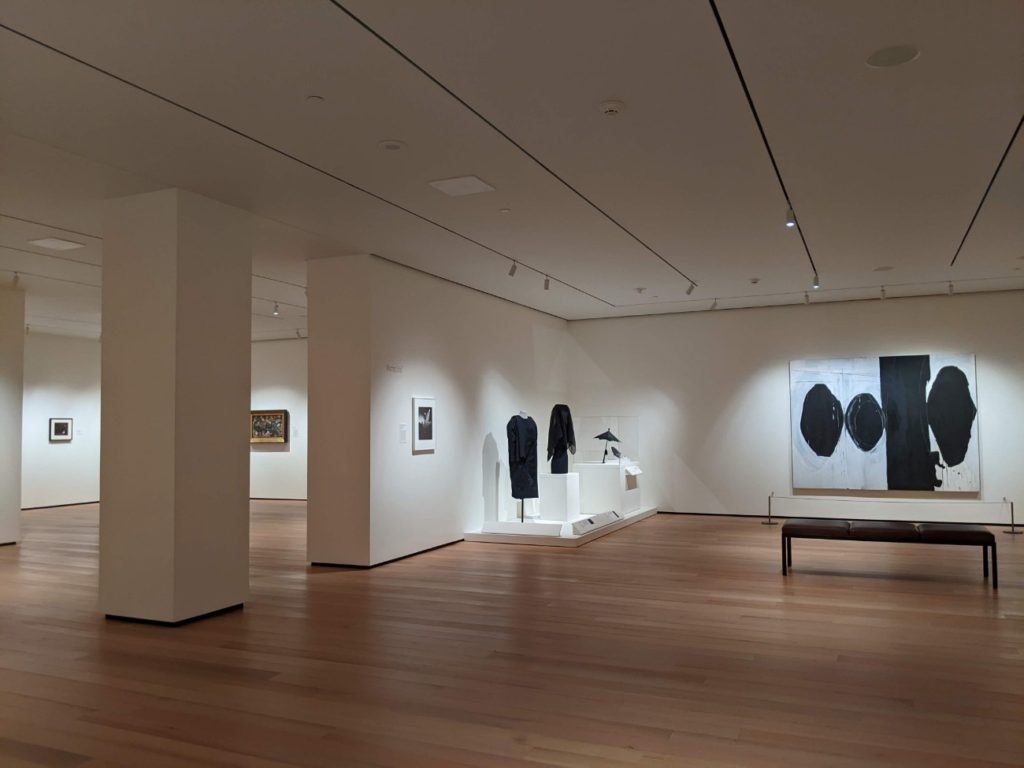
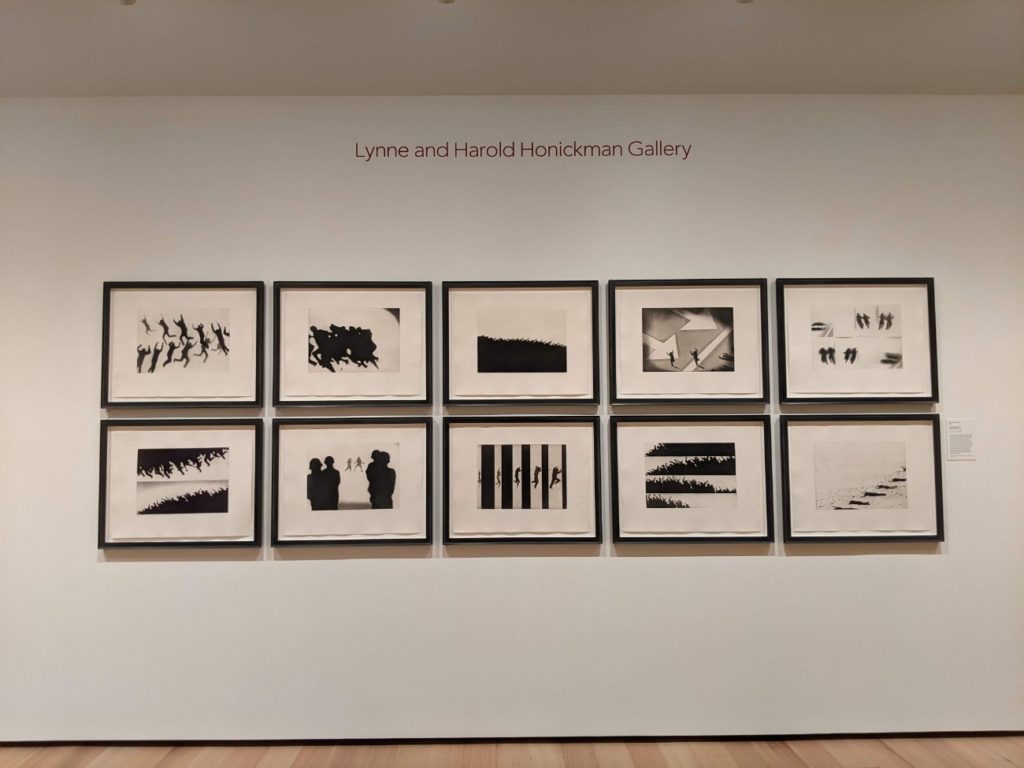
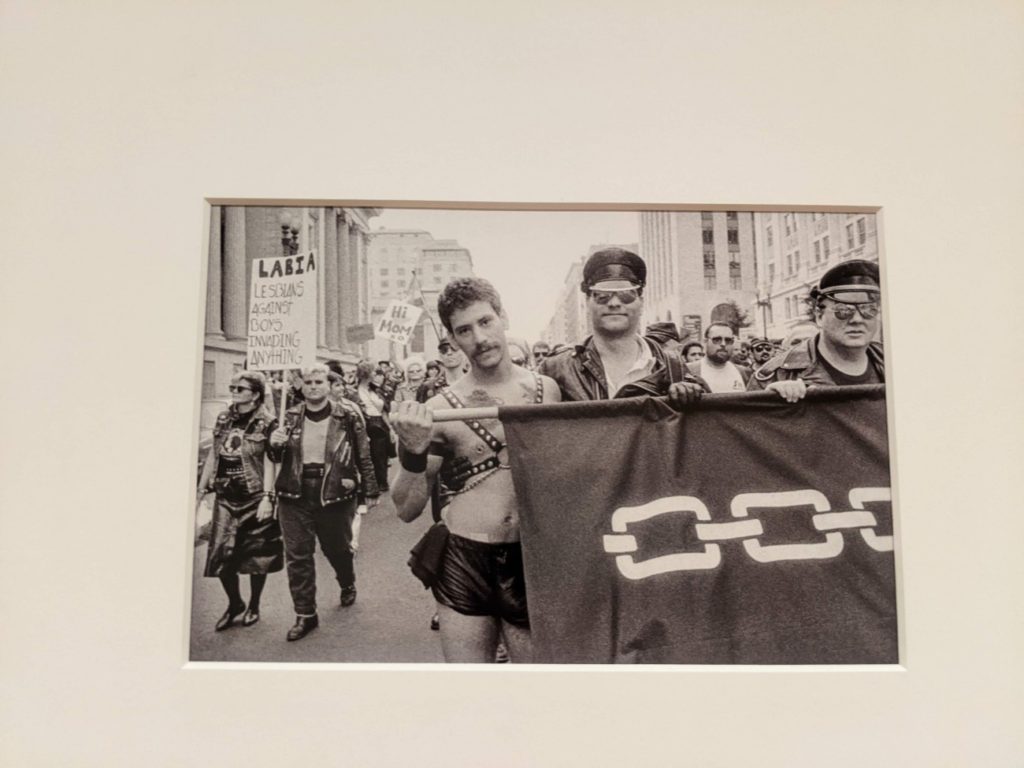
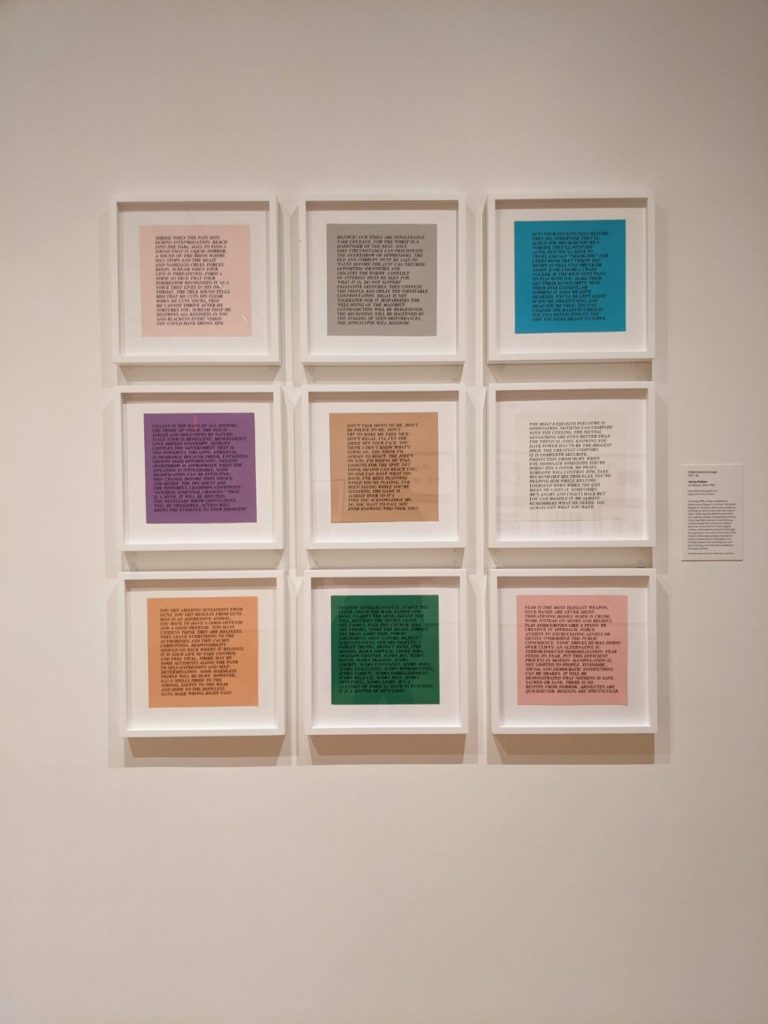
Second Floor
On the second floor, things get serious with the massive Great Stair Hall. If Rocky Balboa had run up the east museum stairs and across the courtyard and gone inside, he would have run right up these stairs. They line up directly with the parkway outside.
At the top of the stairs is a golden statue of Diana, one that used to be on top of Madison Square Garden in NYC until 1925. There’s also a giant modern-art mobile, presumably because they had nowhere else to put it.
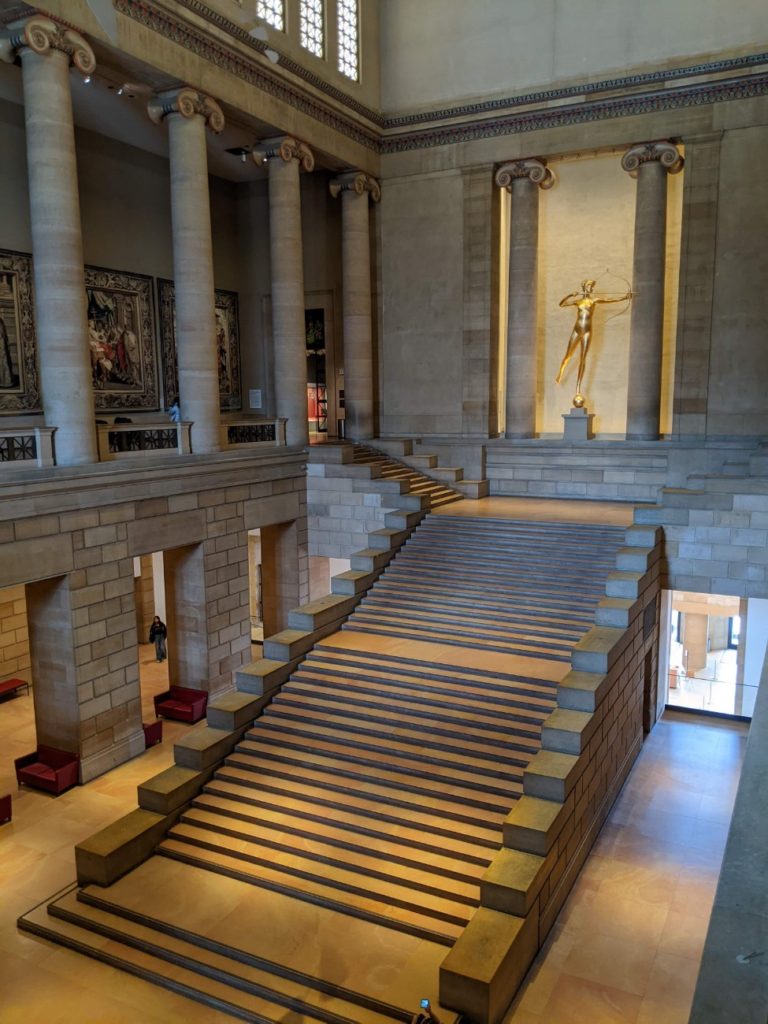
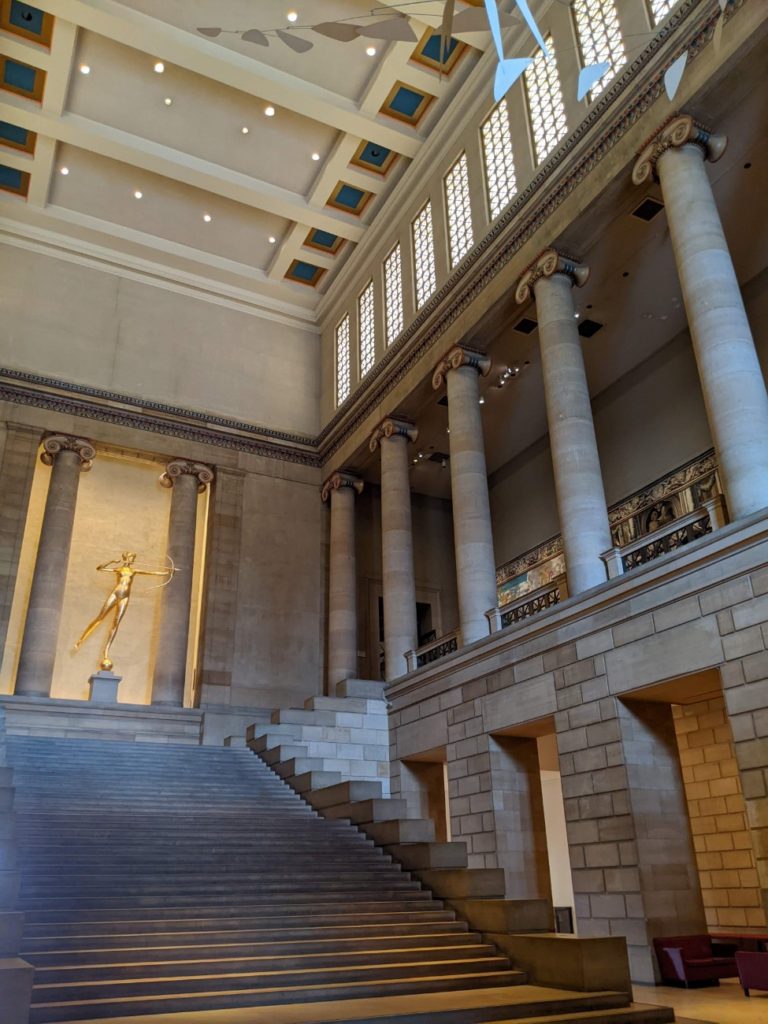
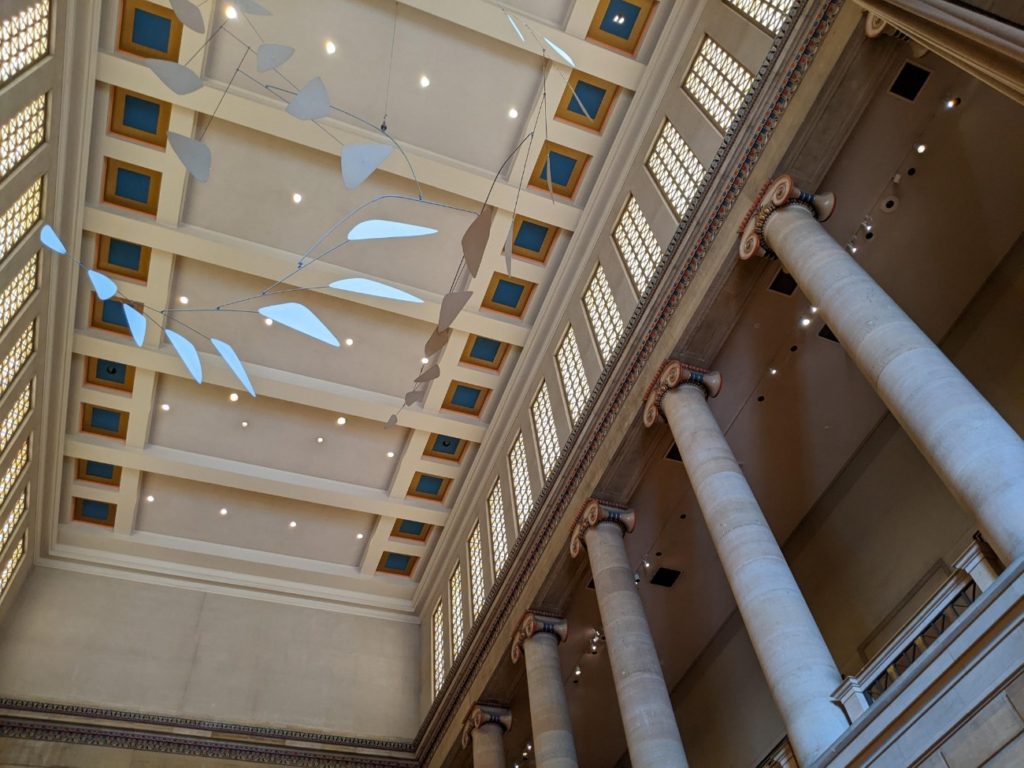
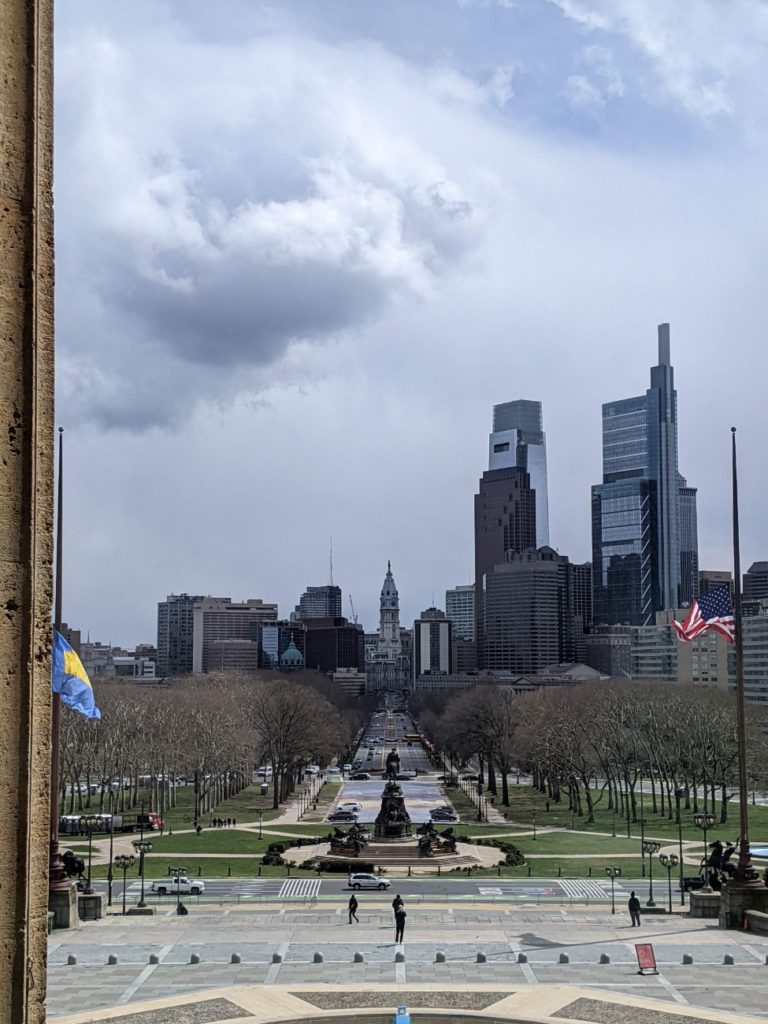
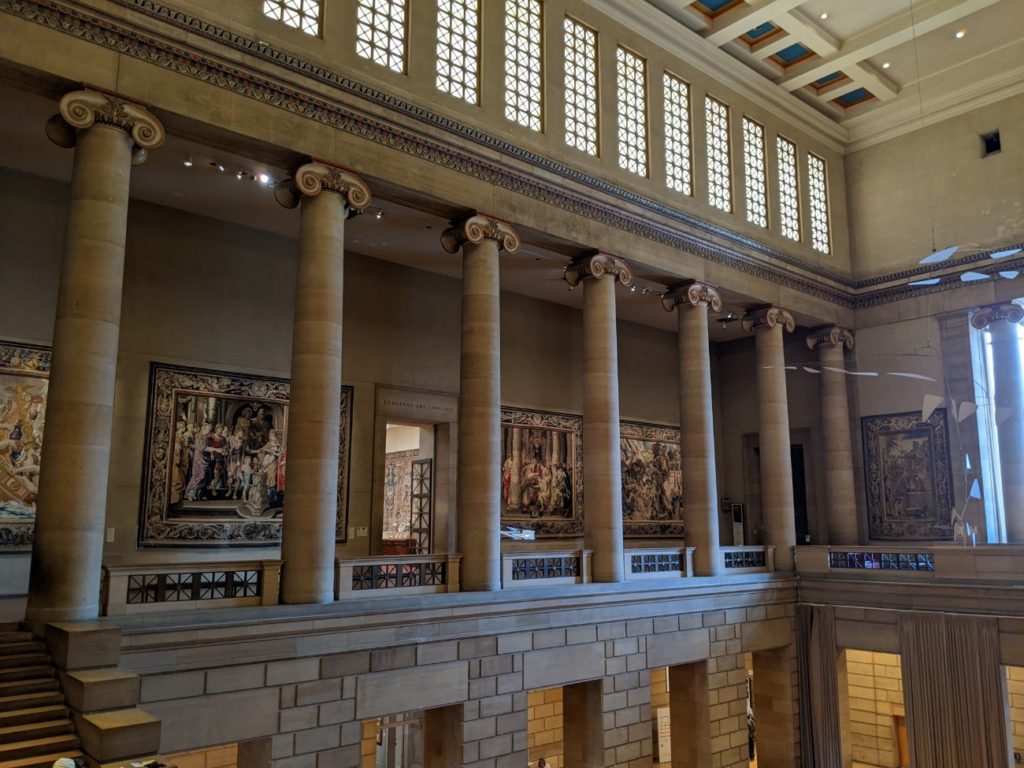
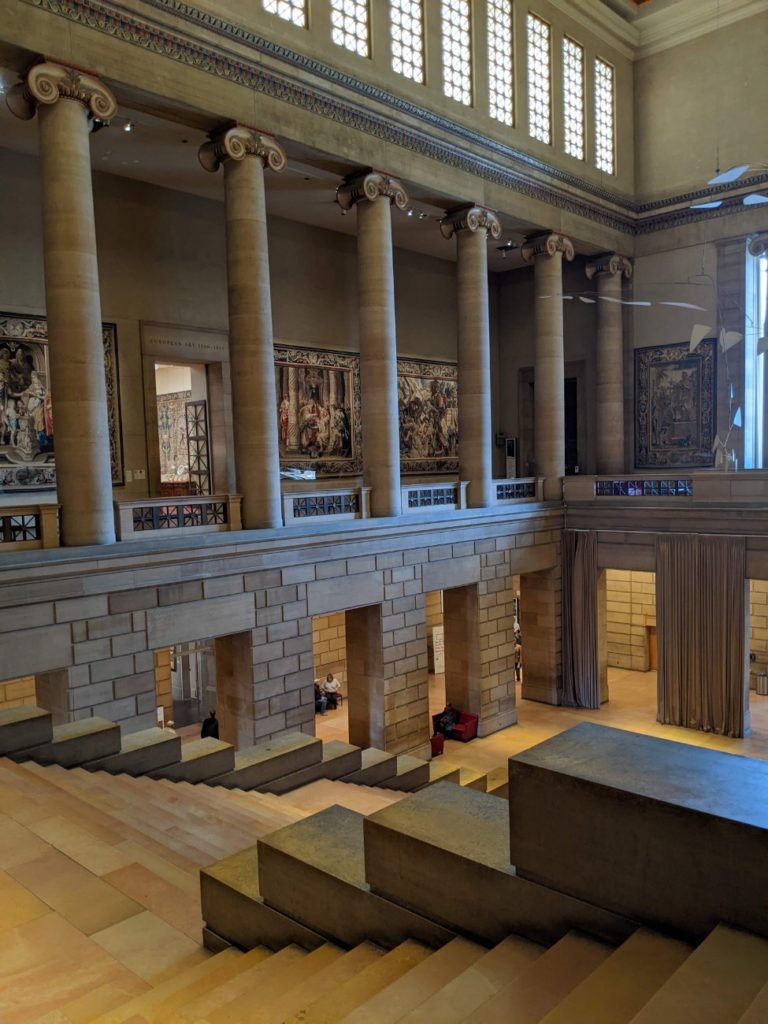
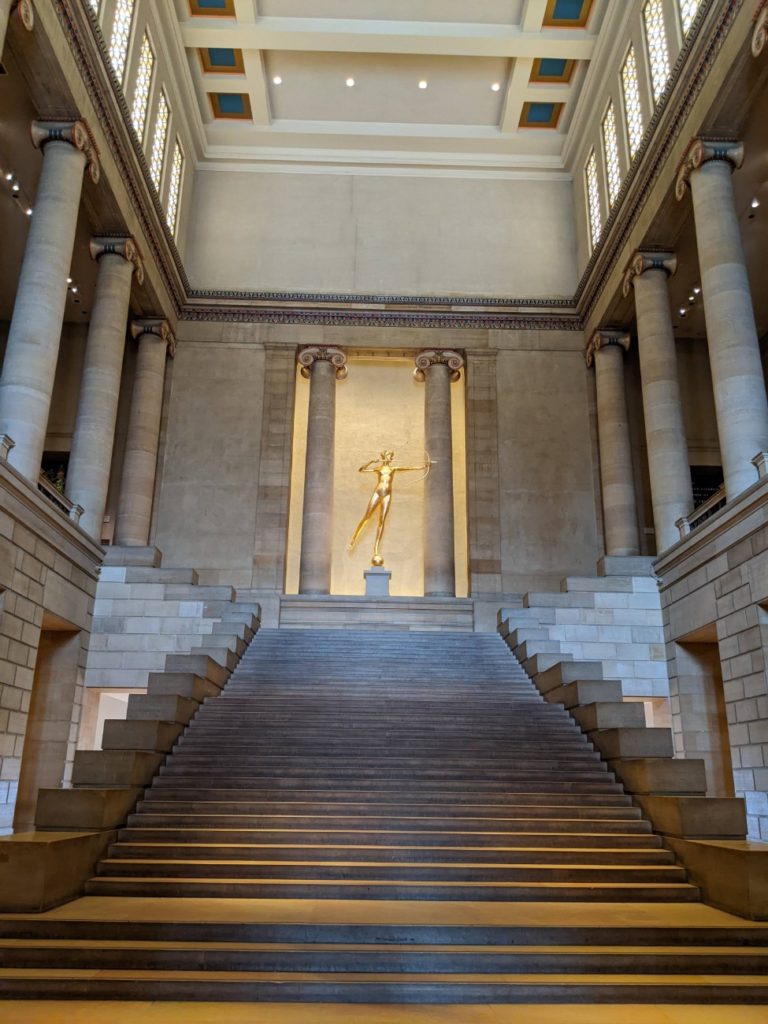
European Art 1850-1900
To the right of the base of the stairs, you find a wealth of European art from 1850-1900, getting into Impressionism. A rotunda holding Van Gogh’s Sunflowers, Monet’s bridge over water lilies, and party scenes from Toulouse-Lautrec might be the most popular room in the museum.
There’s also a small section of art deco furniture, plenty of other paintings, and sculpture, including an intentionally unfinished Rodin and one of Degas’ teenage ballerinas.
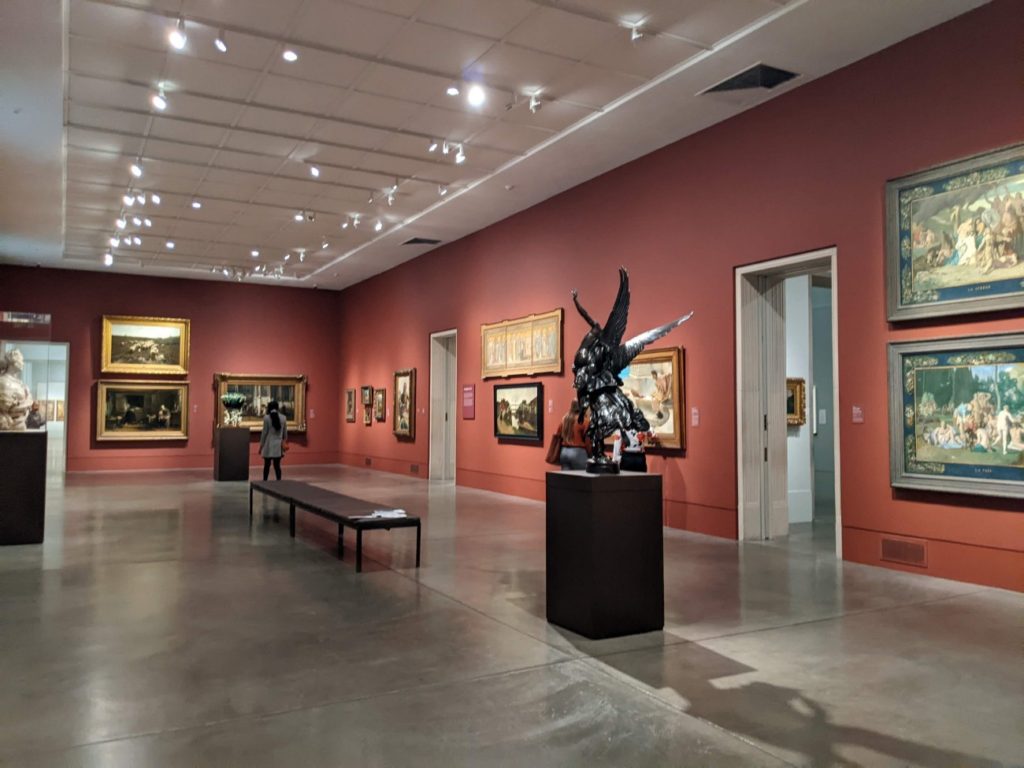
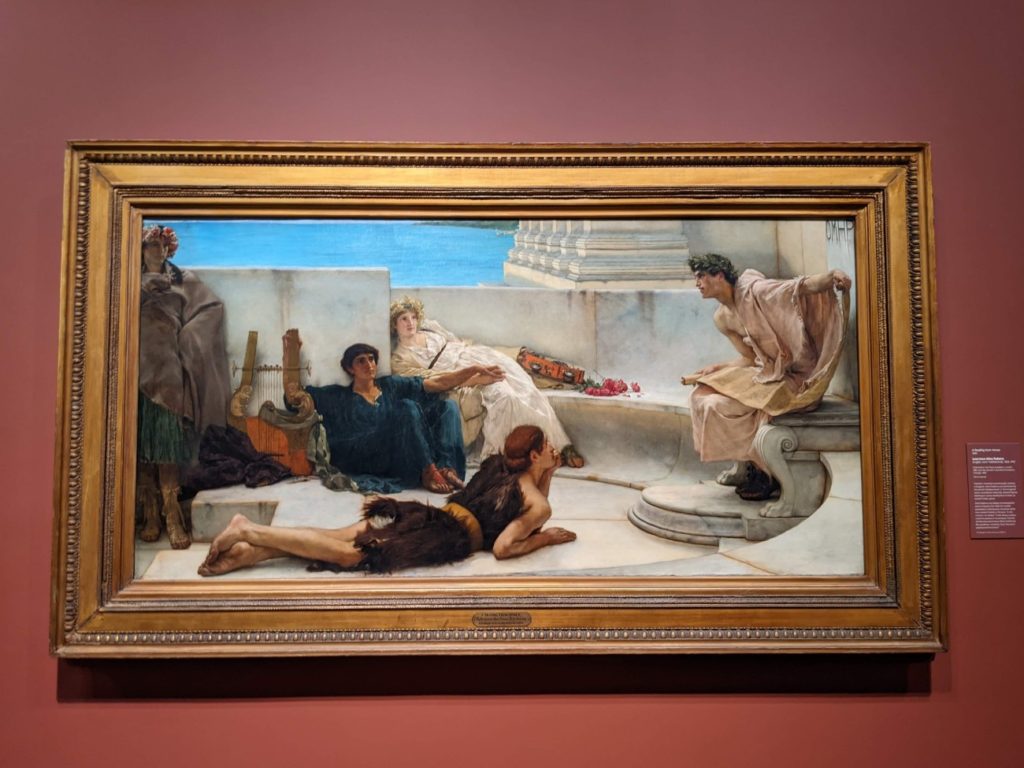
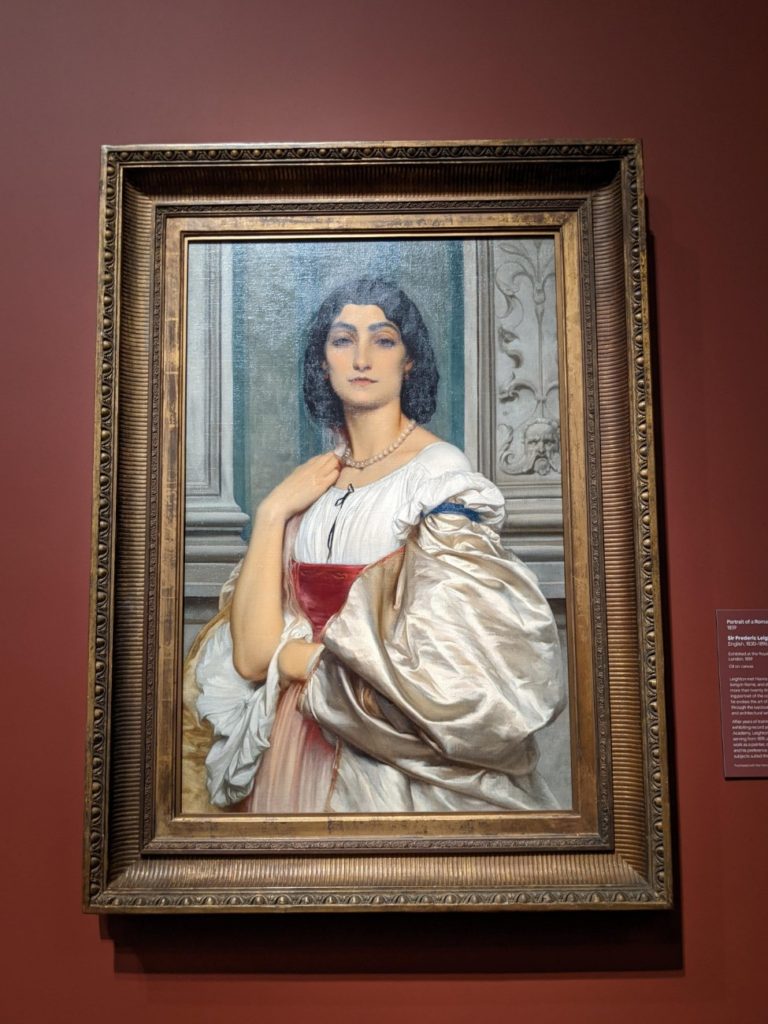
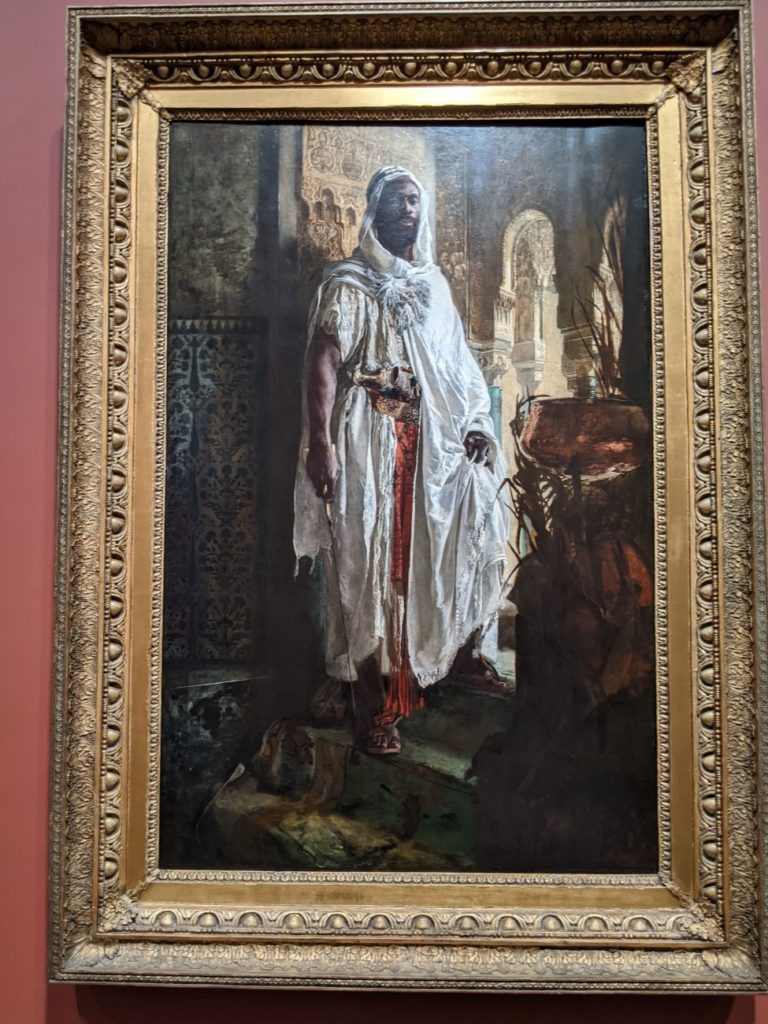
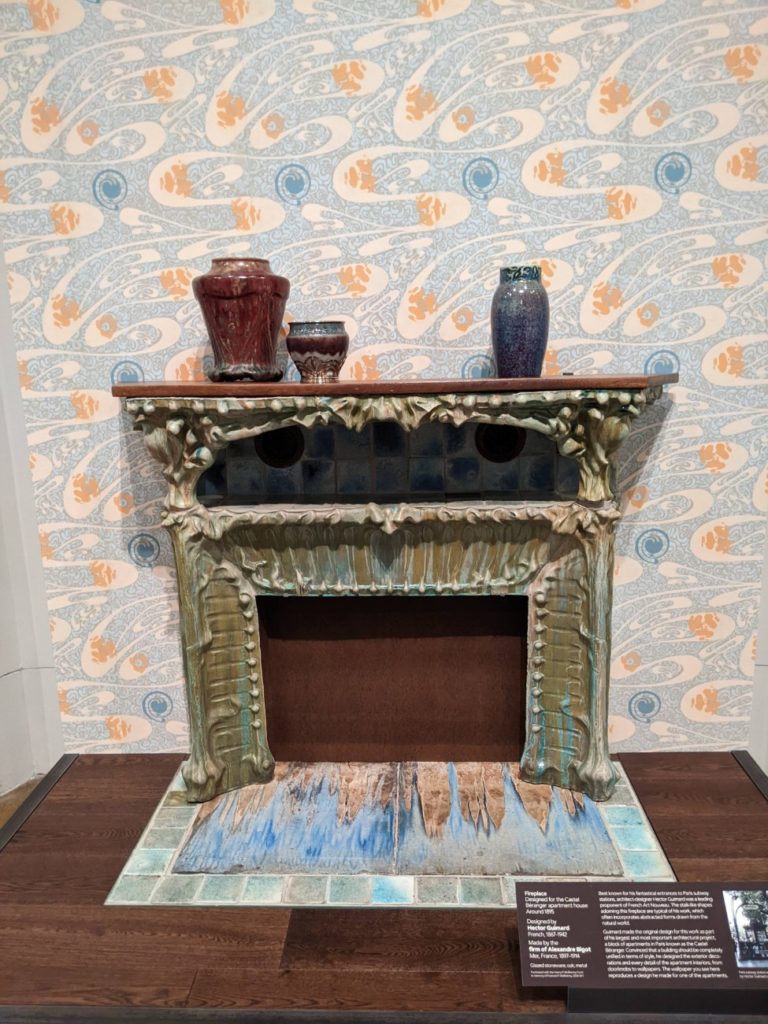
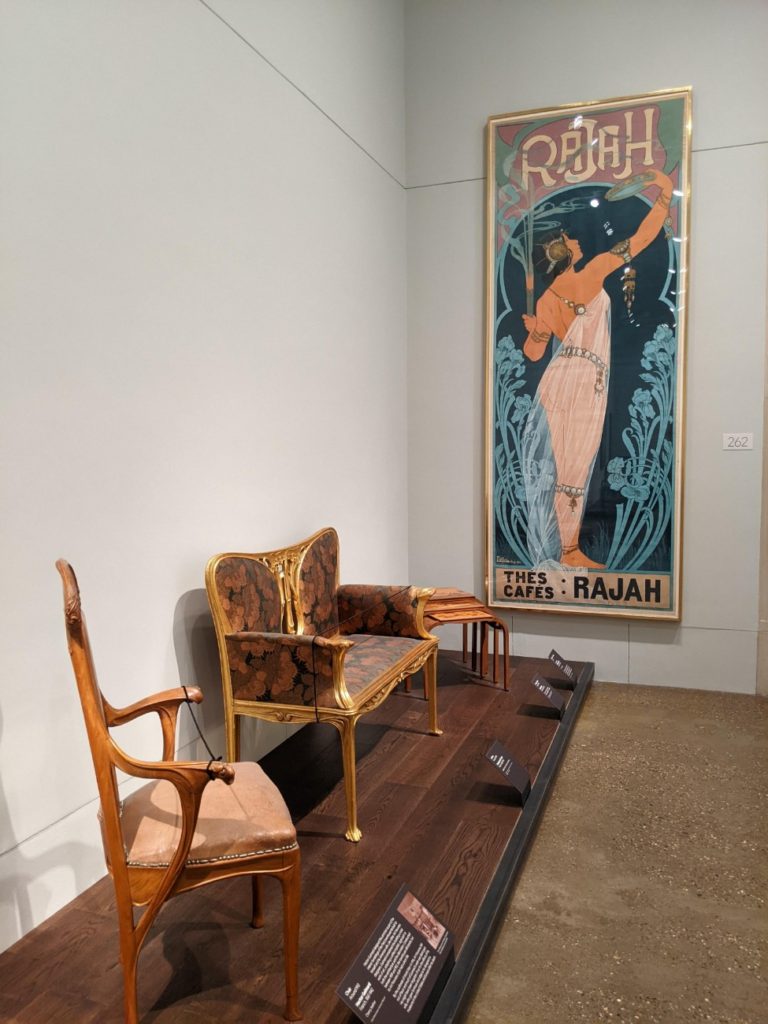
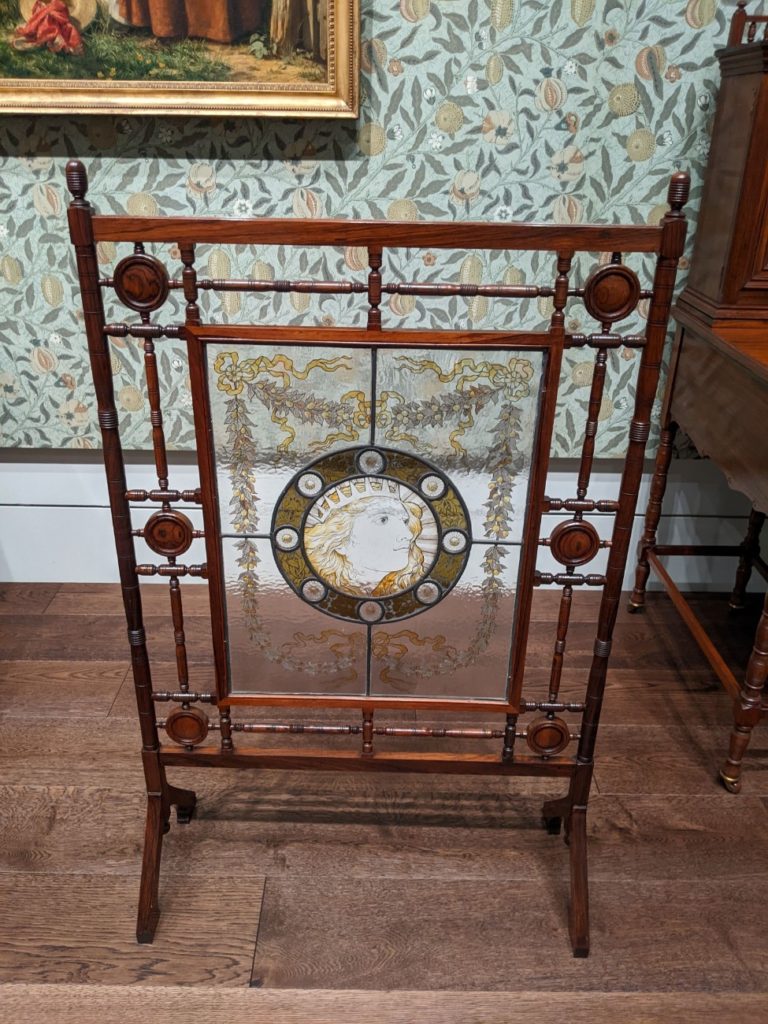
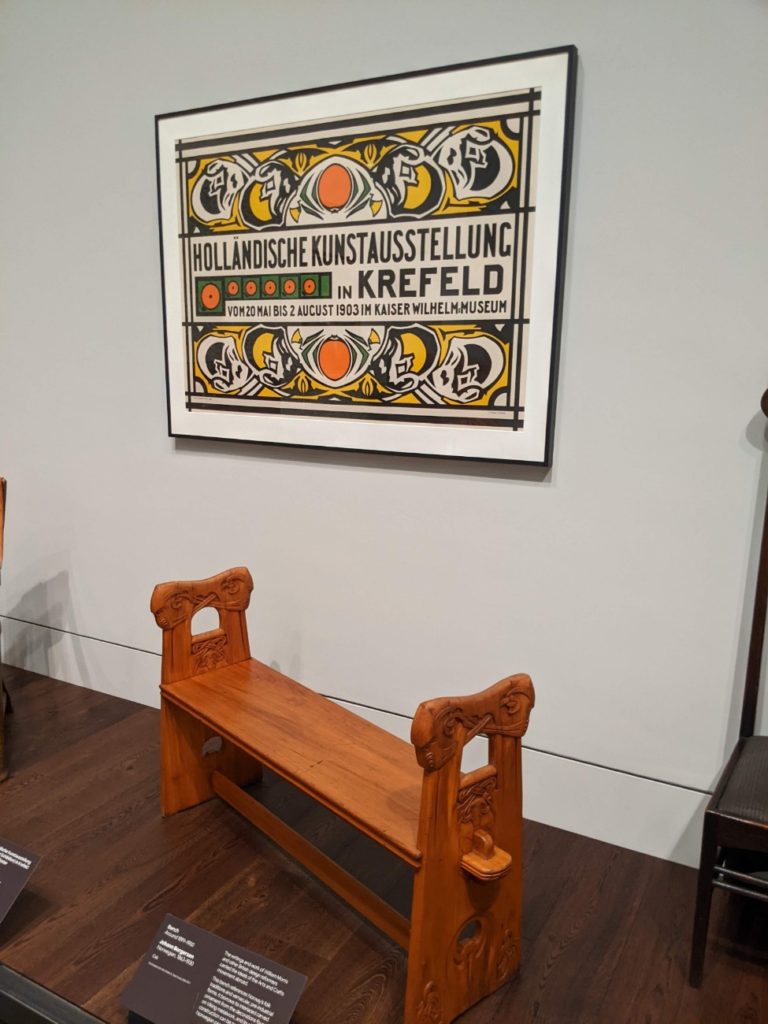
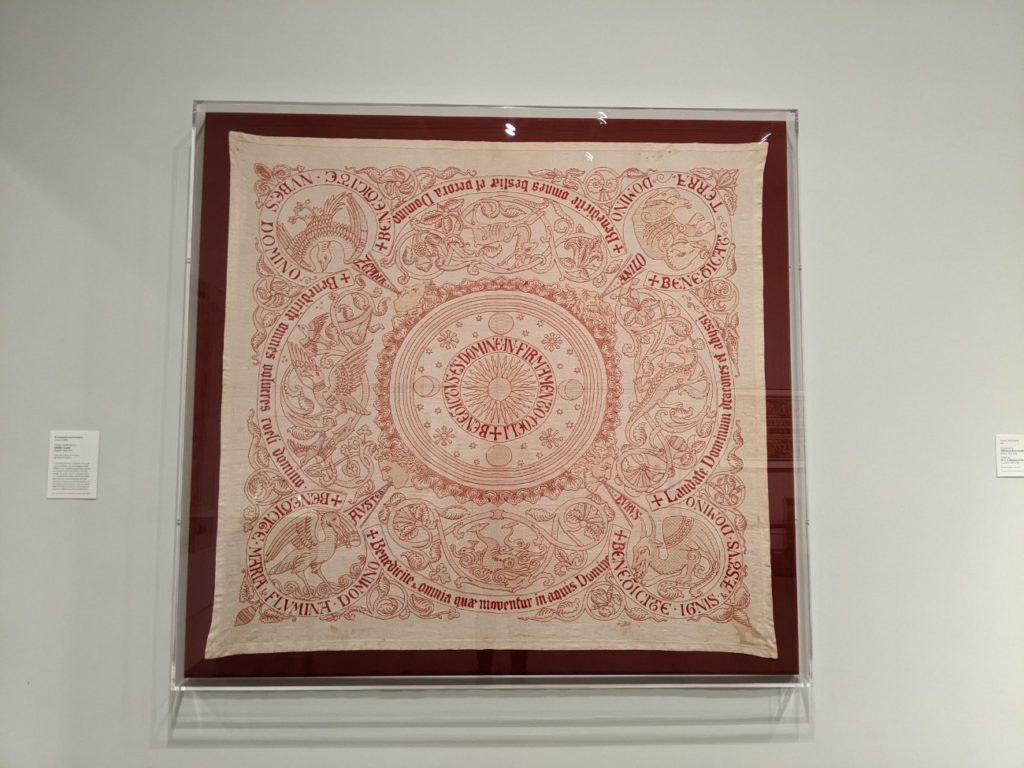
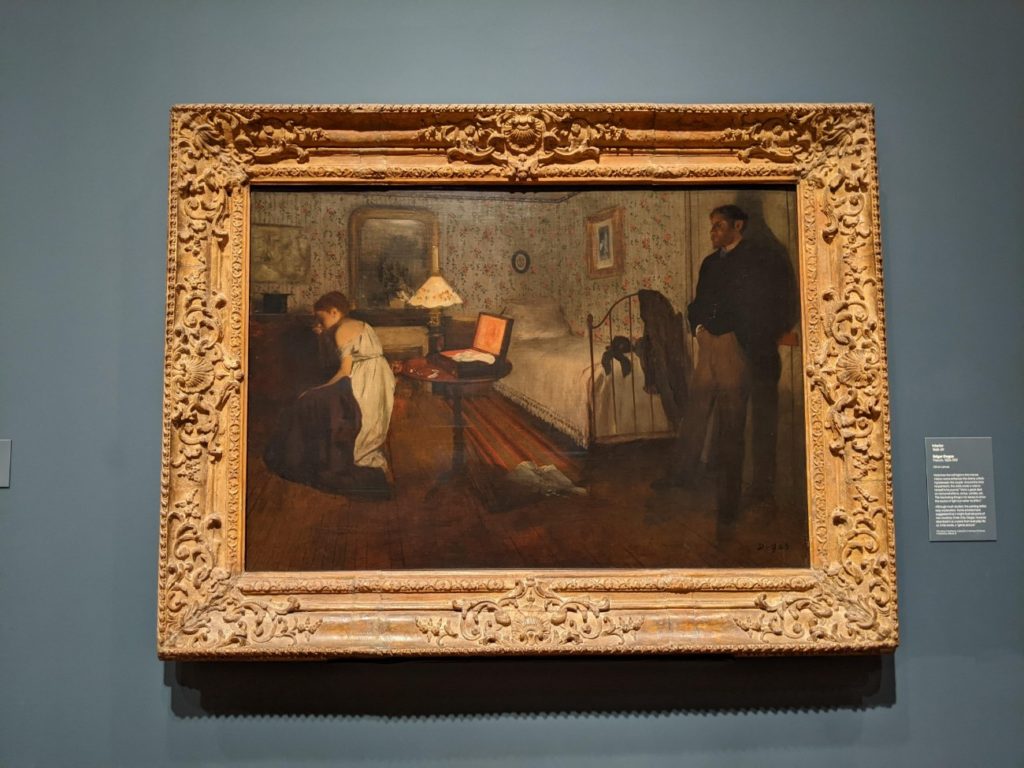
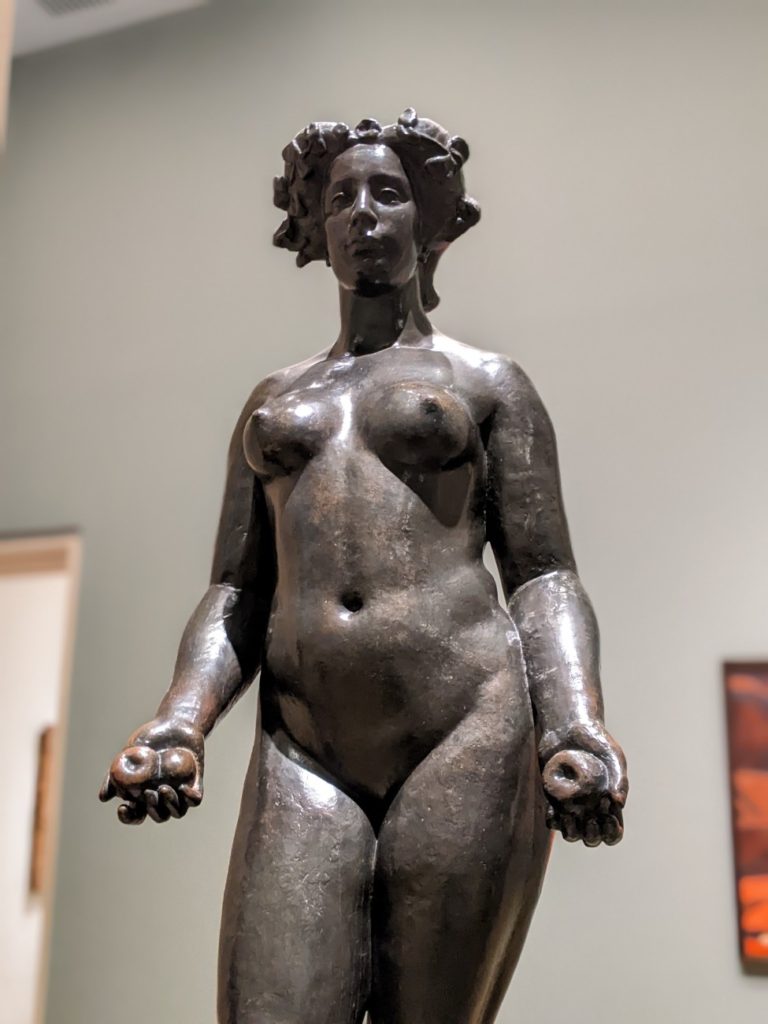
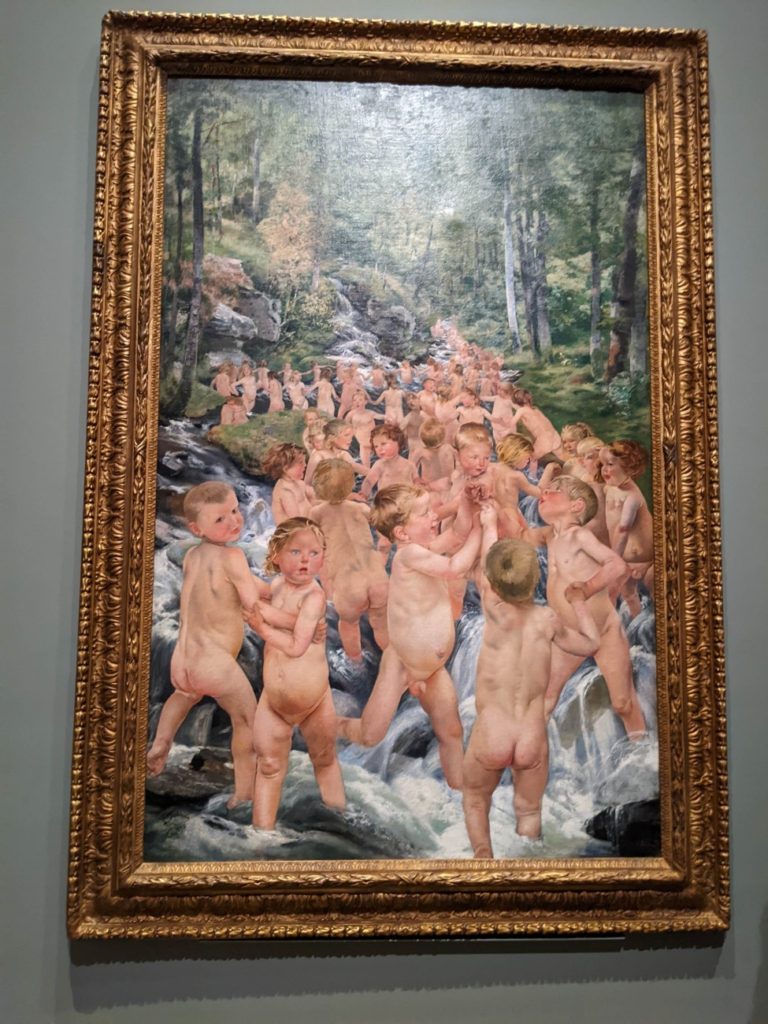
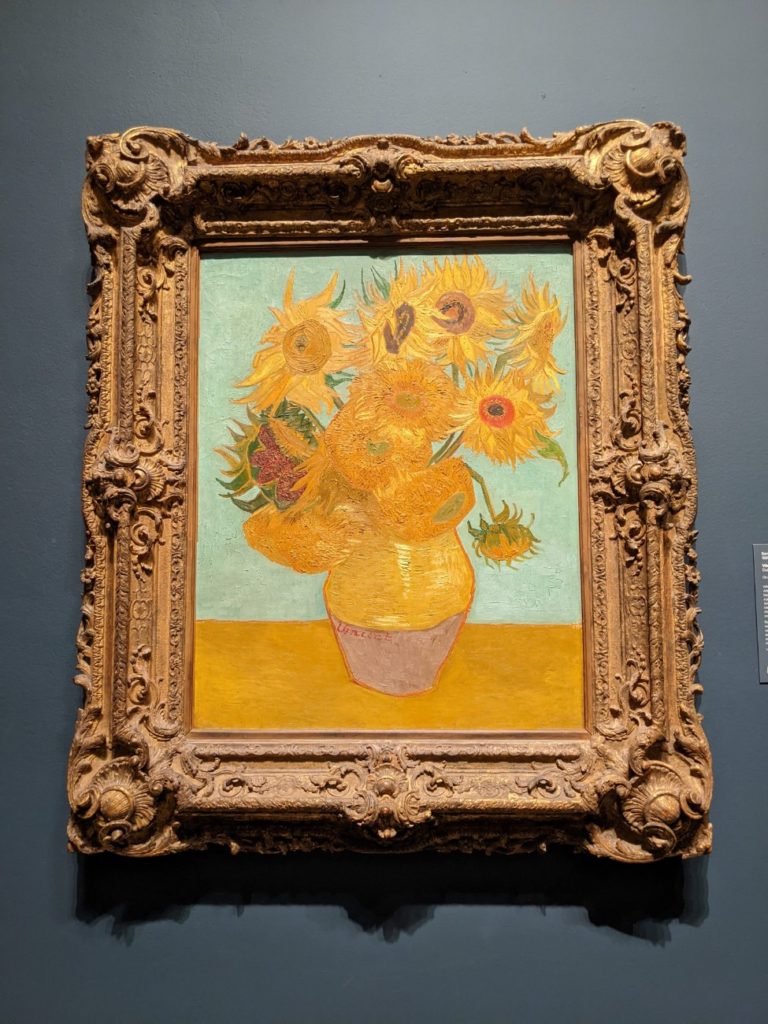
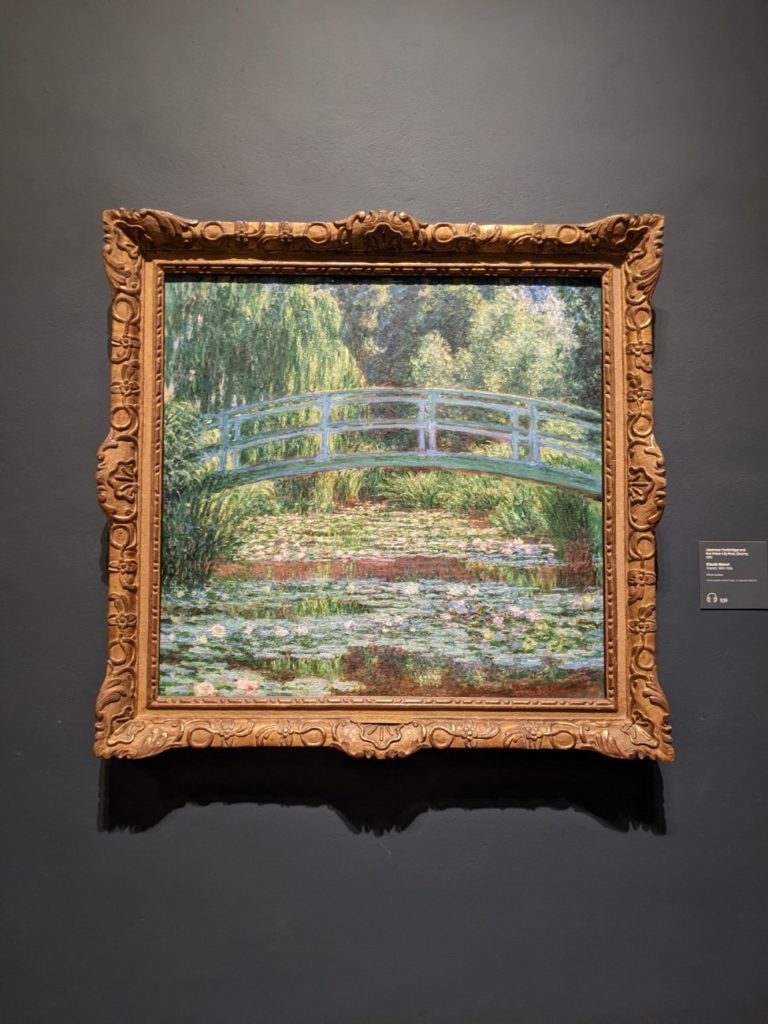
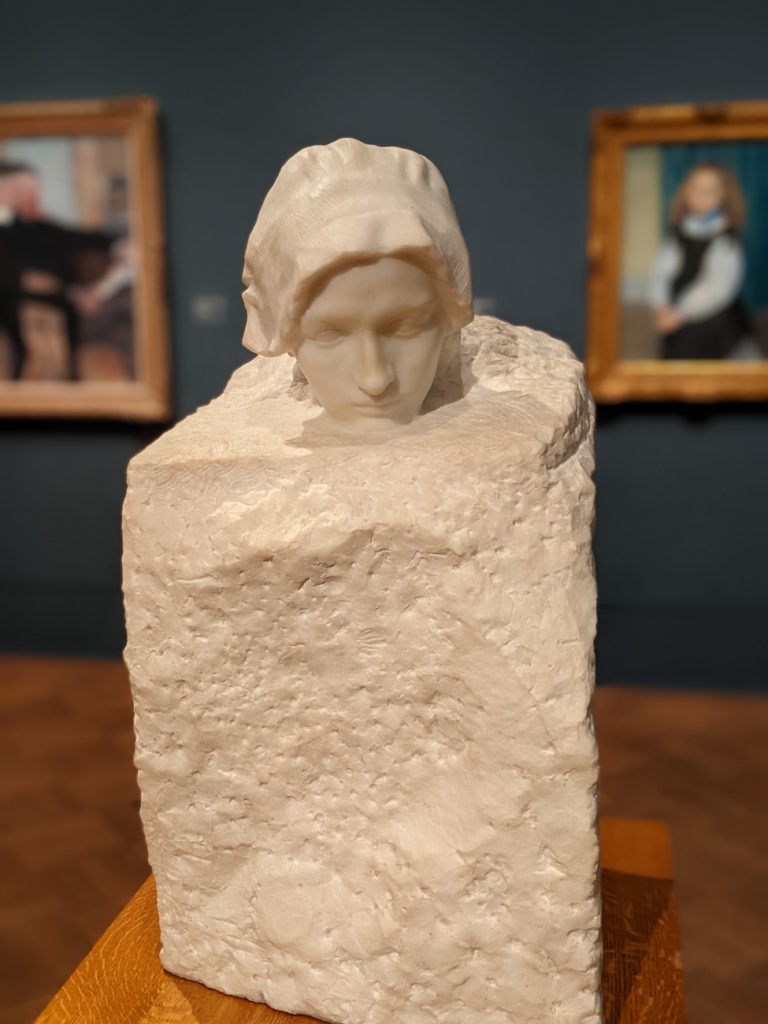
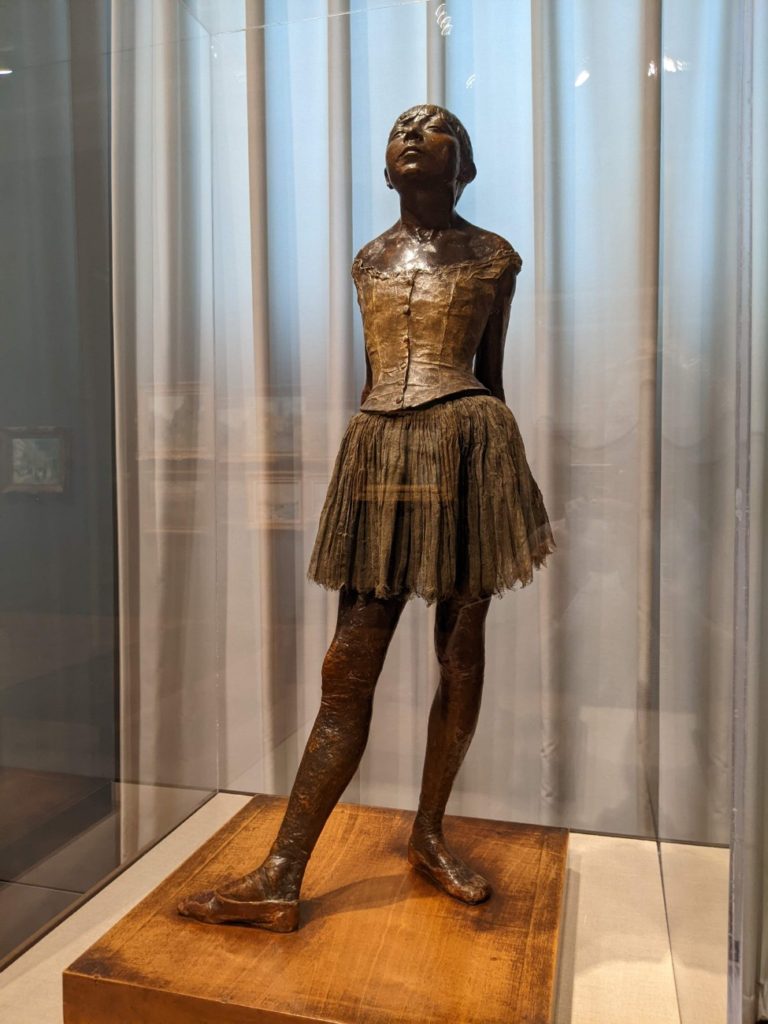
Modern Art
Around the corner in the front part of the wing is stunning contemporary art in all manner of mediums. I really like the stark, almost southwestern style of the galleries.
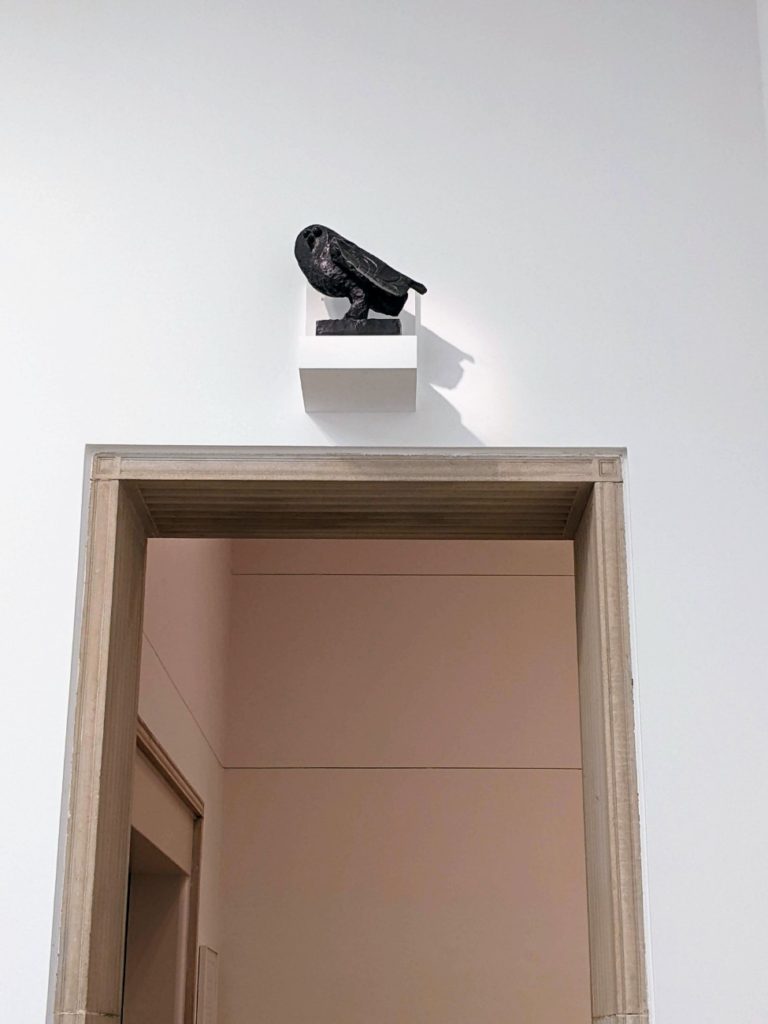
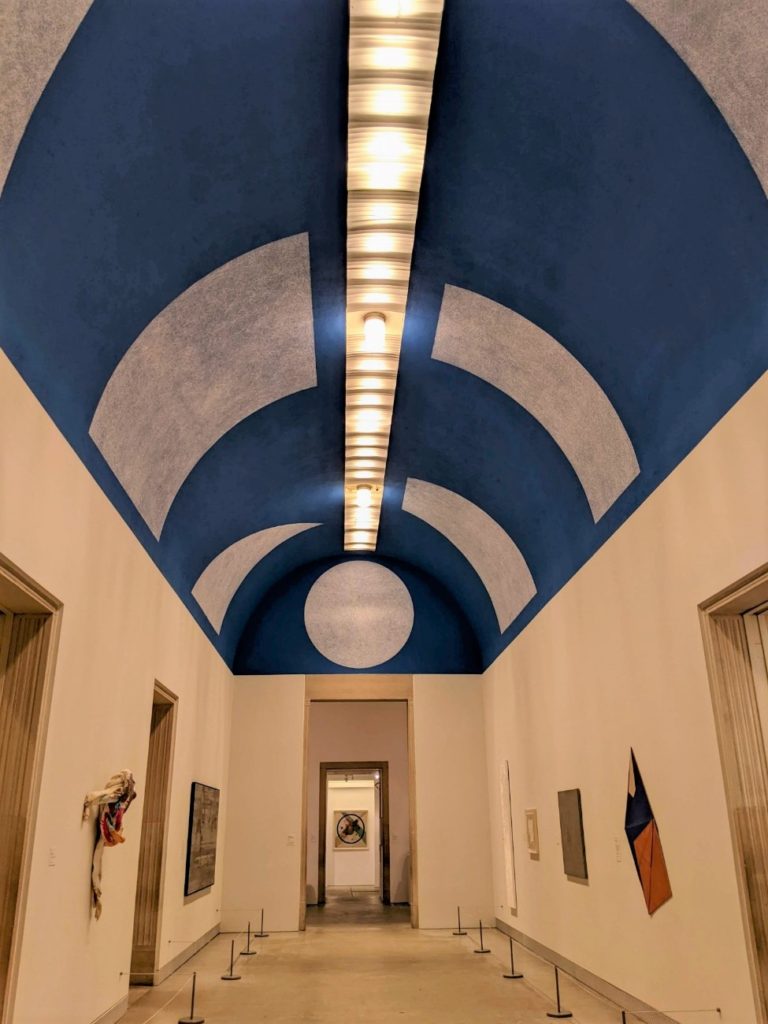
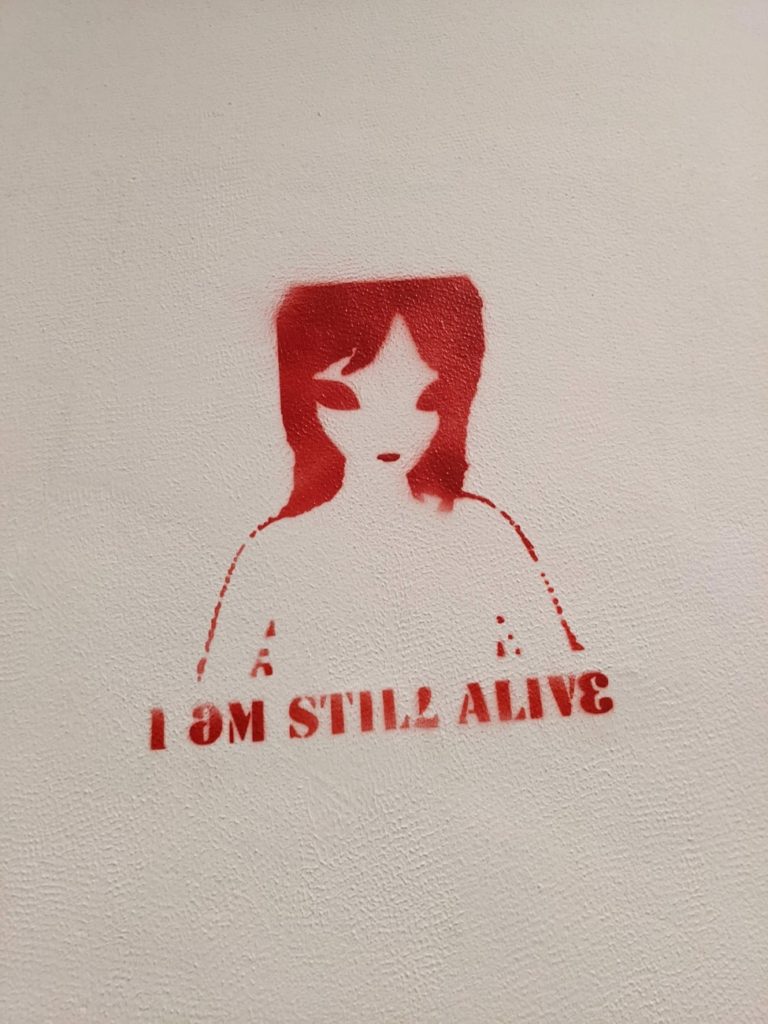
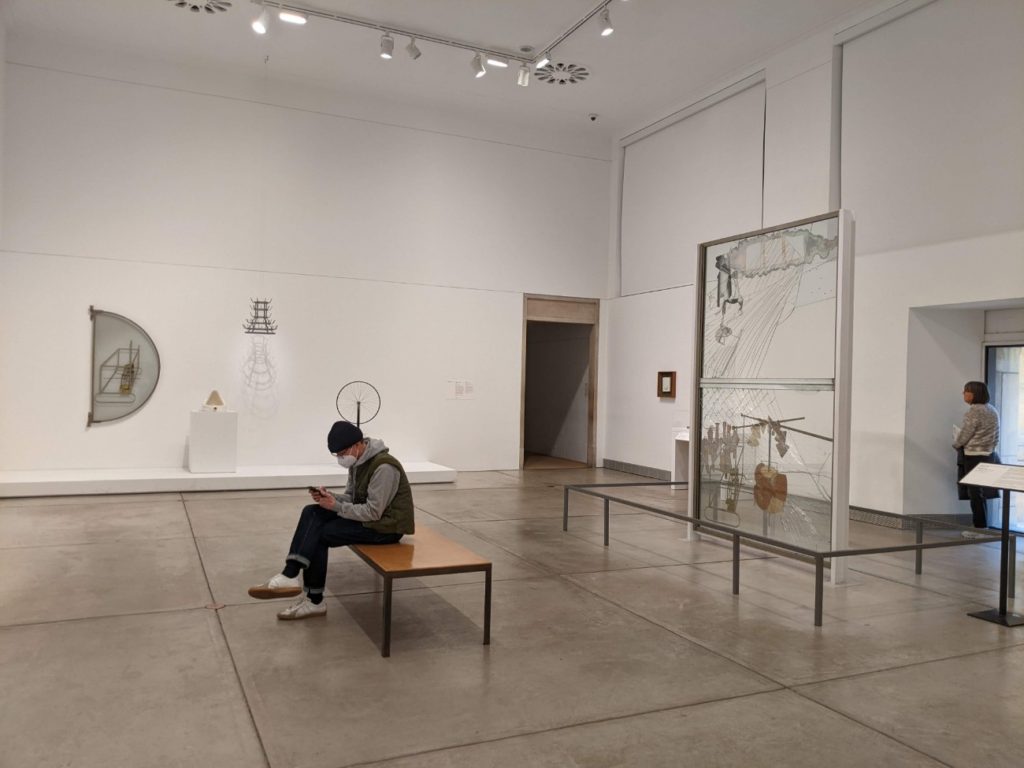
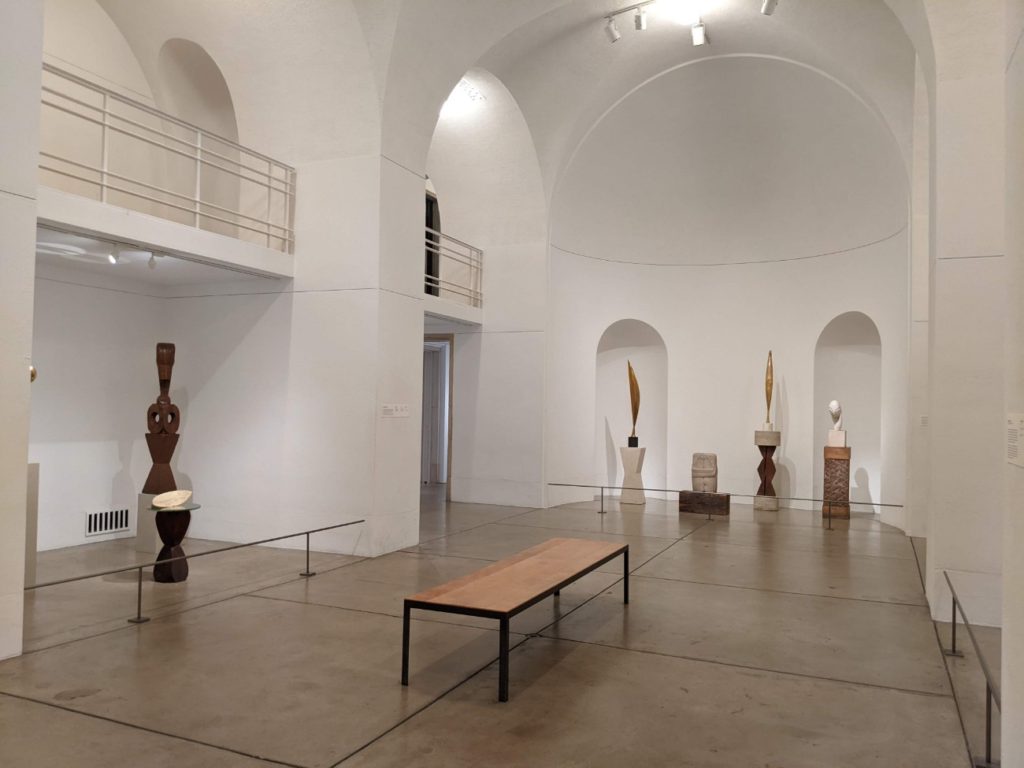
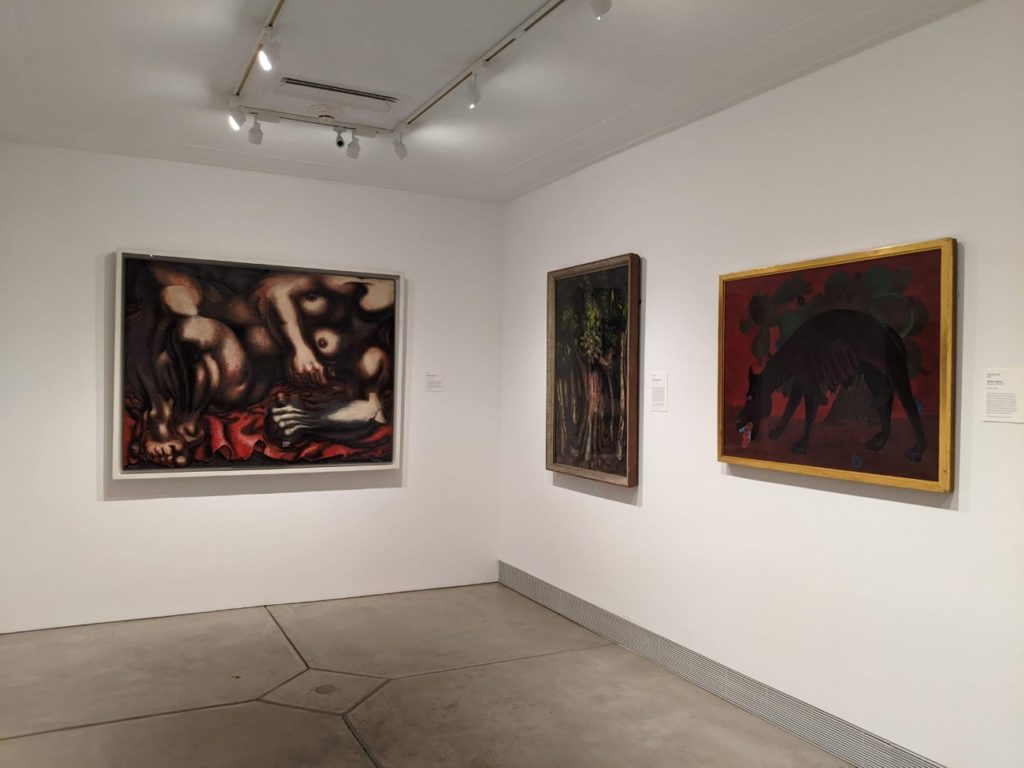
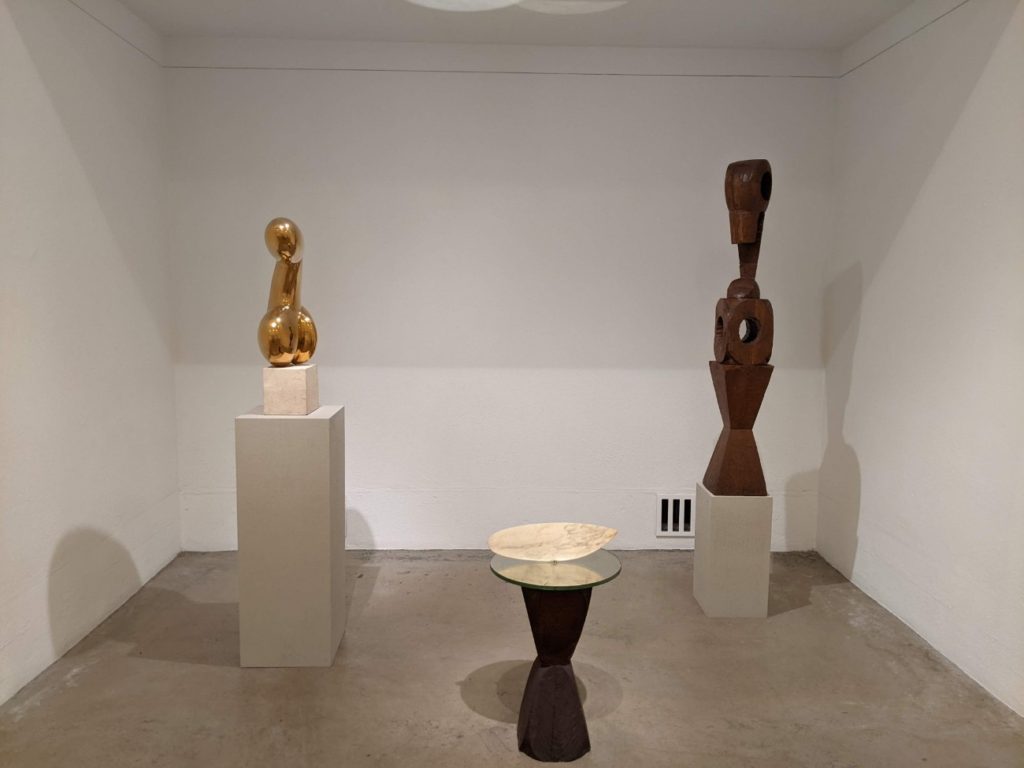
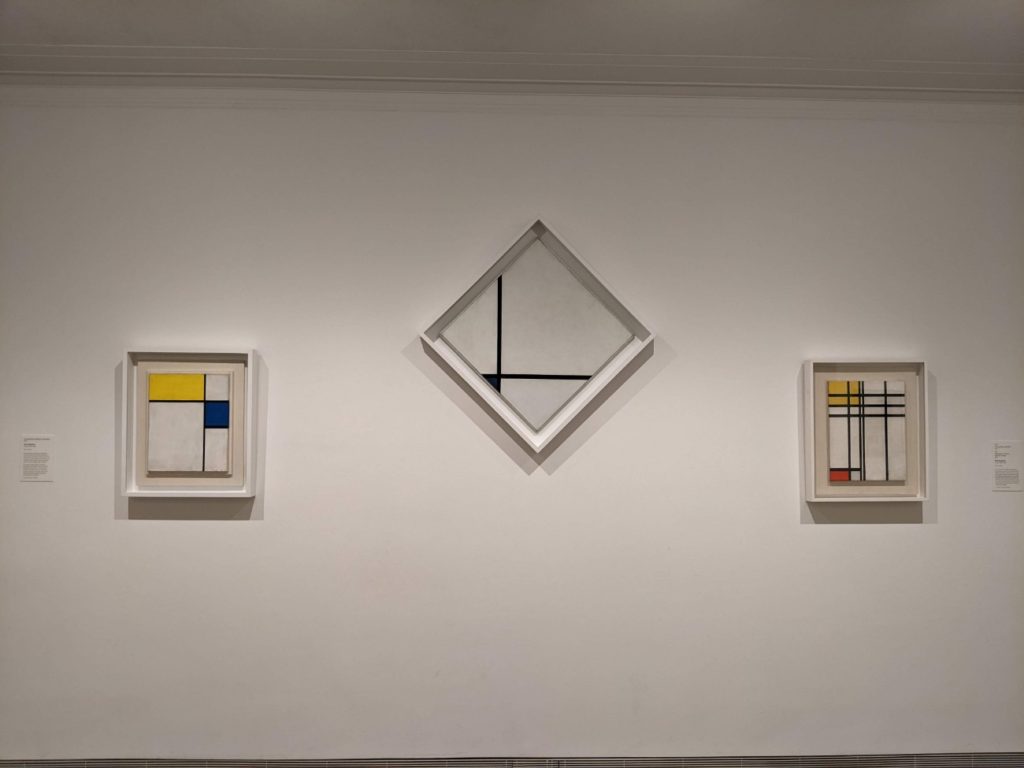
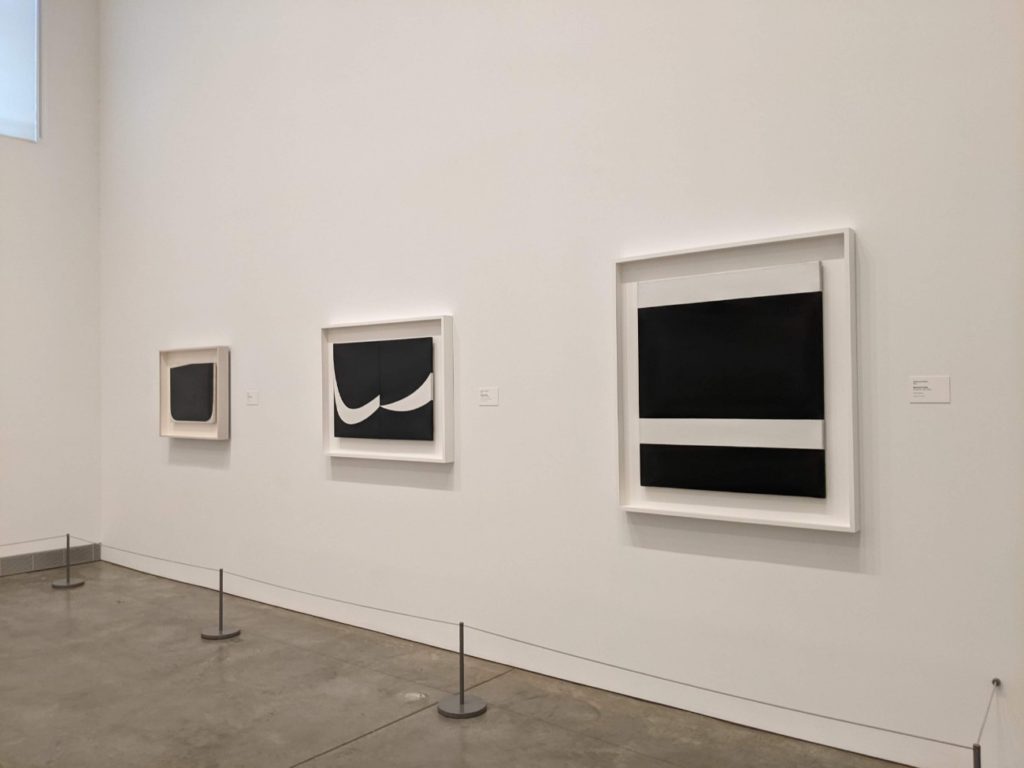
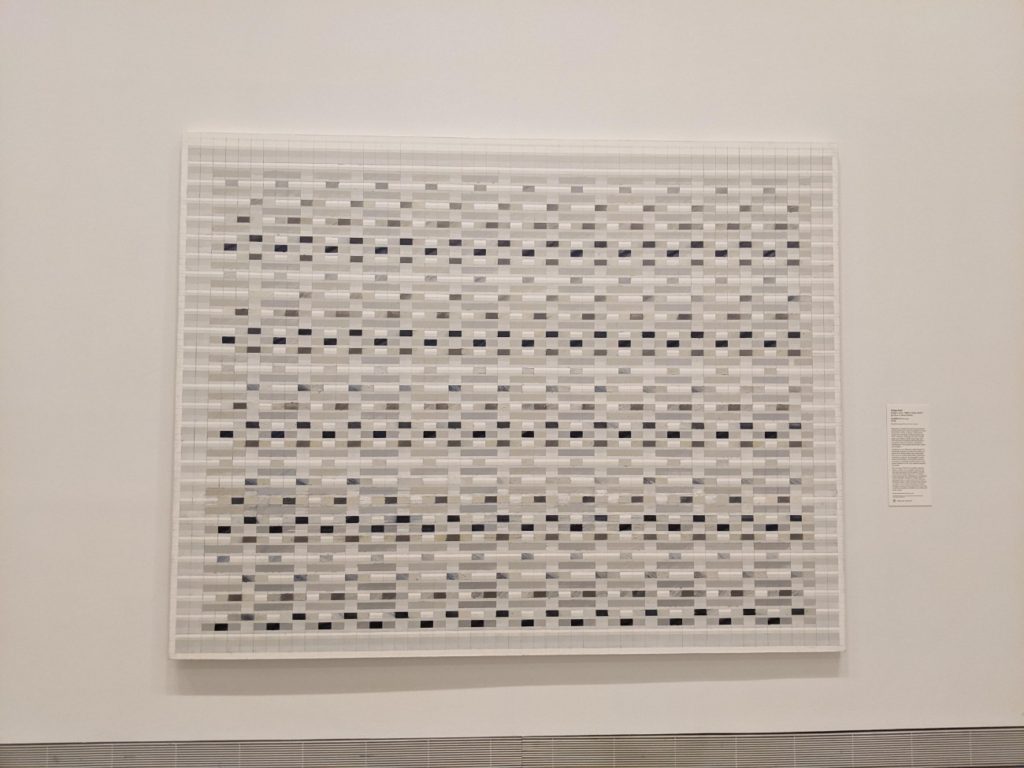
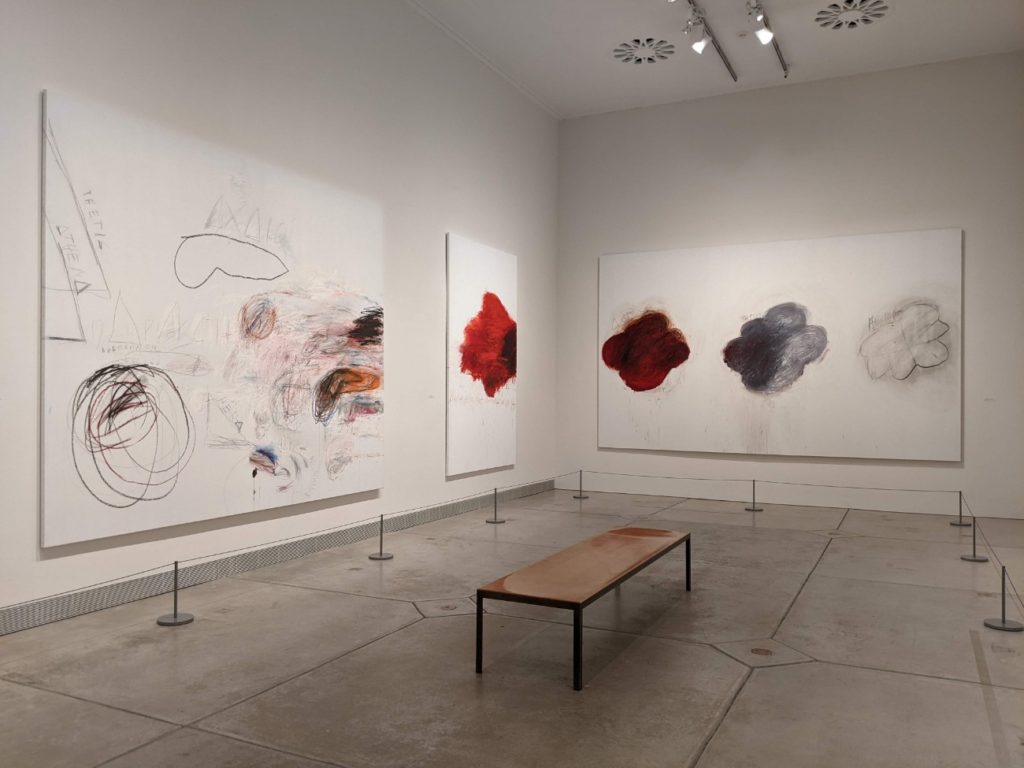
American Art 1850-1900
Heading left from the main stair is a section mostly under construction, though I really enjoyed some Eakins portraits along here. On the forward part of the wing is American art 1850-1900 including some cool modern furnishings, moody portraits, and stunning paintings. Make sure to look for one of the other “top tens”, Tanner’s The Annunciation, and marvel at his use of light.
Note that there are bathrooms and elevators in the left and right wings on this floor, as well as a member’s lounge and a cafe overlooking the stairs. (Though it looked closed on my visit.)
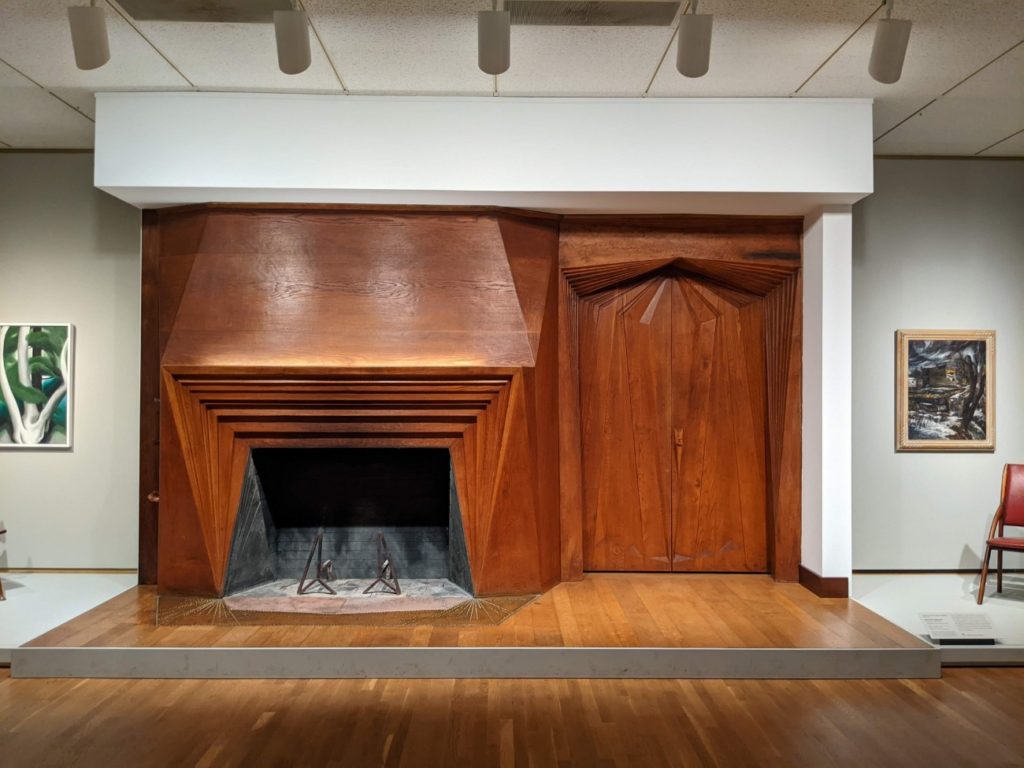
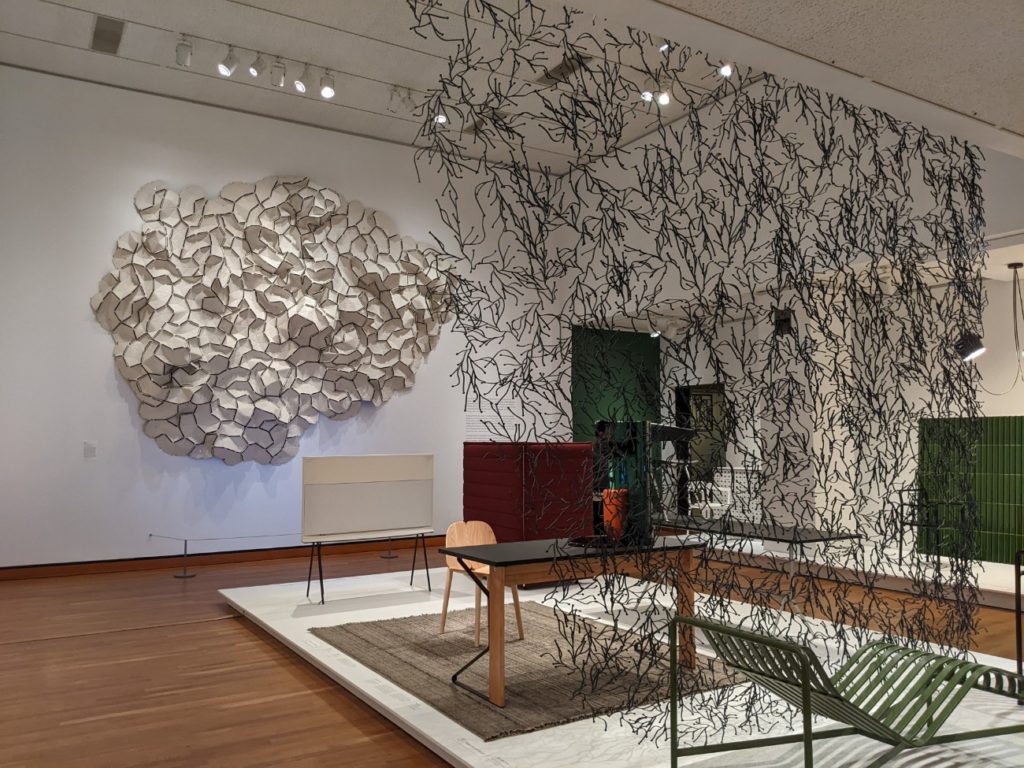
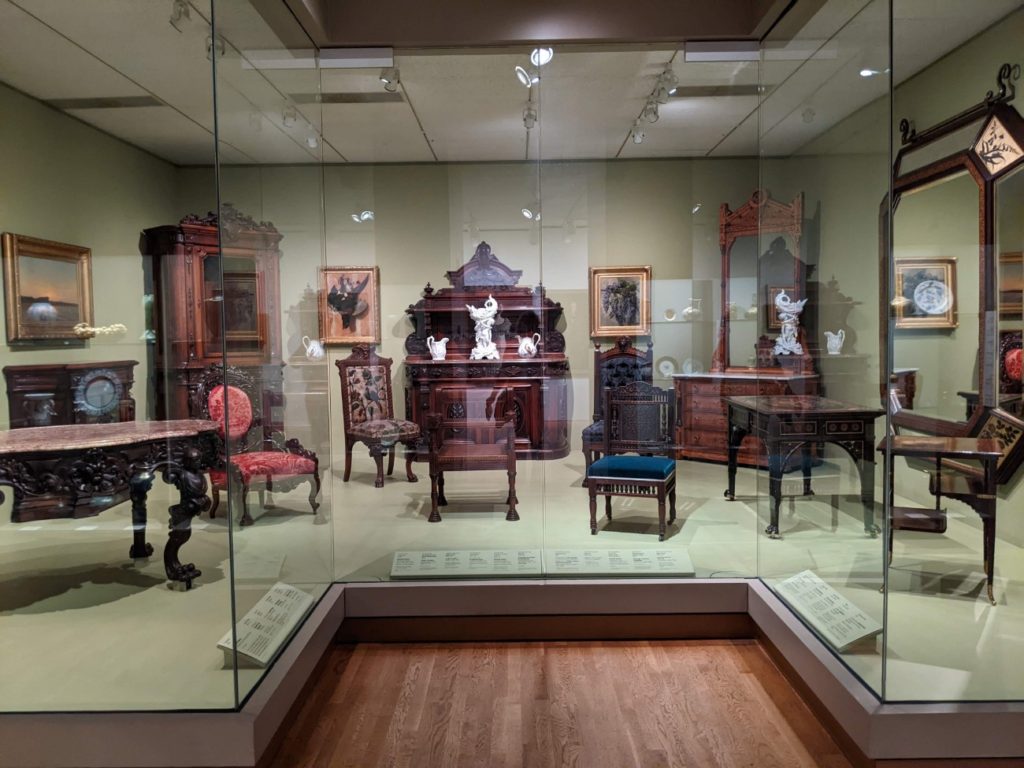
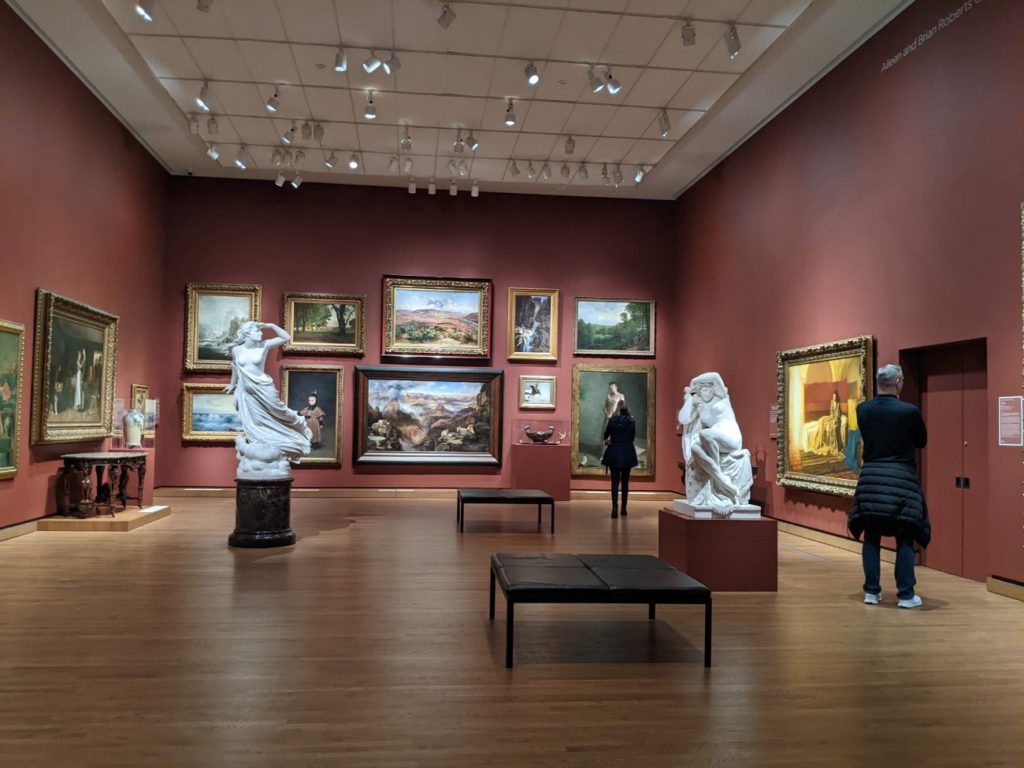
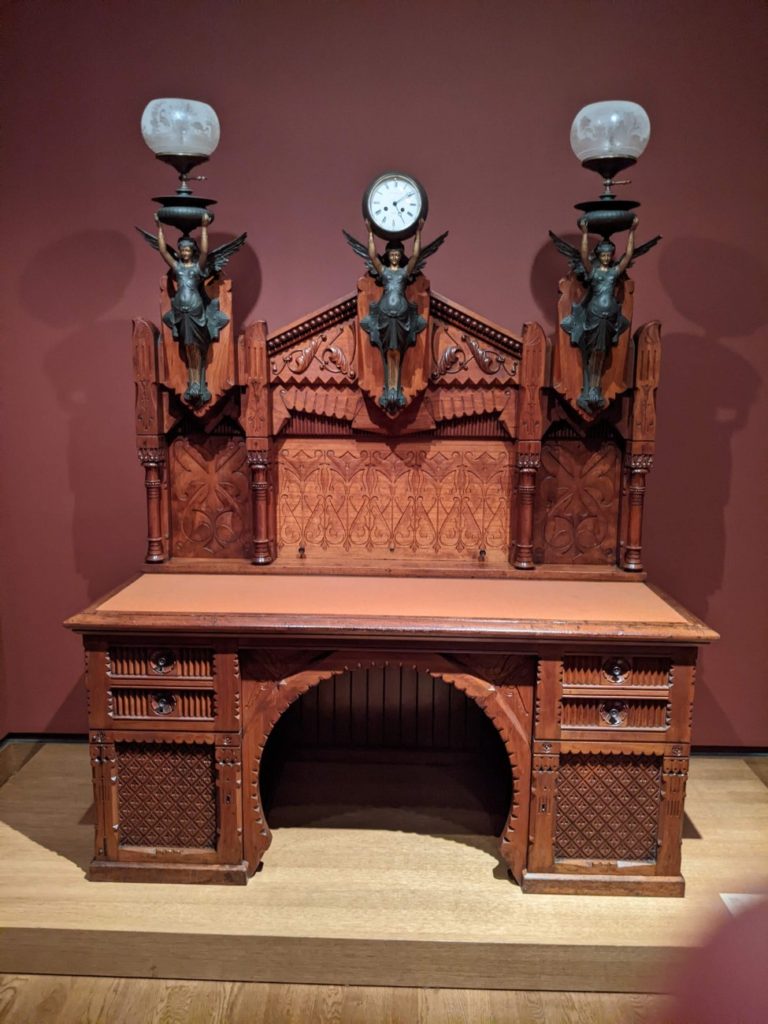
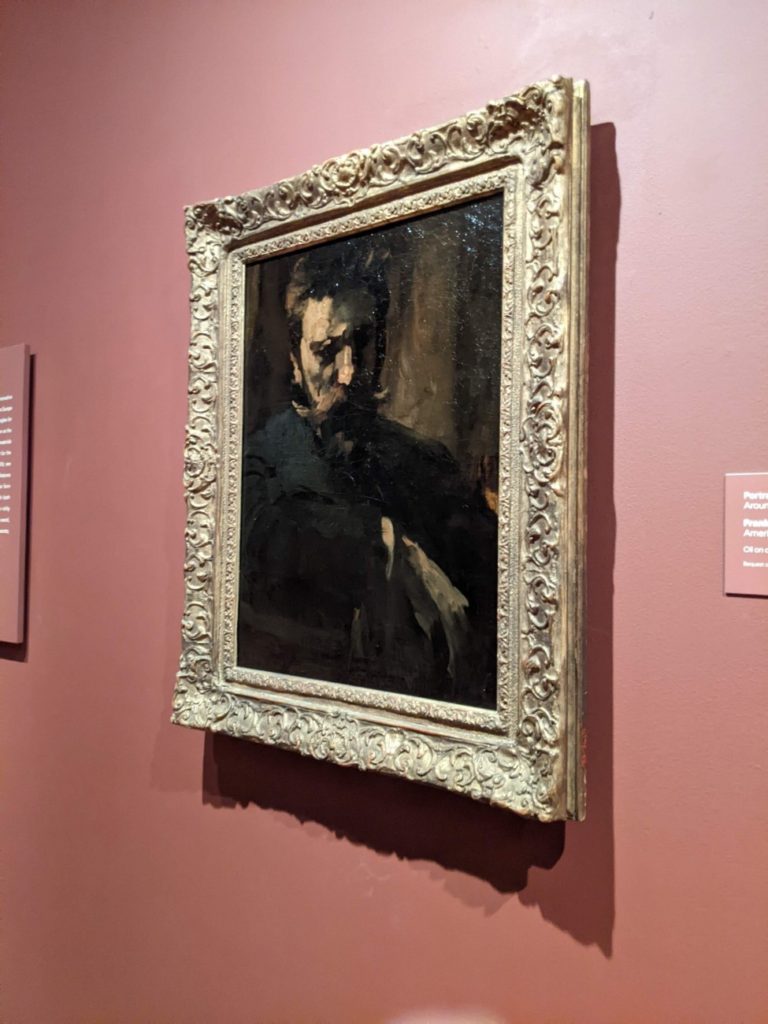
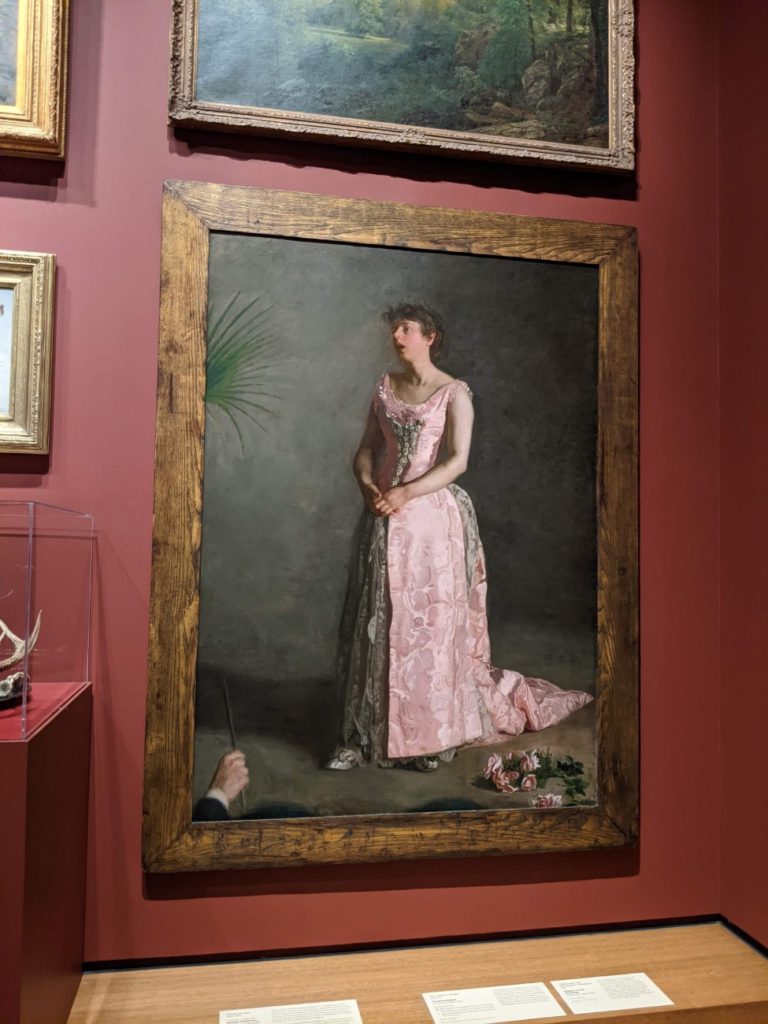
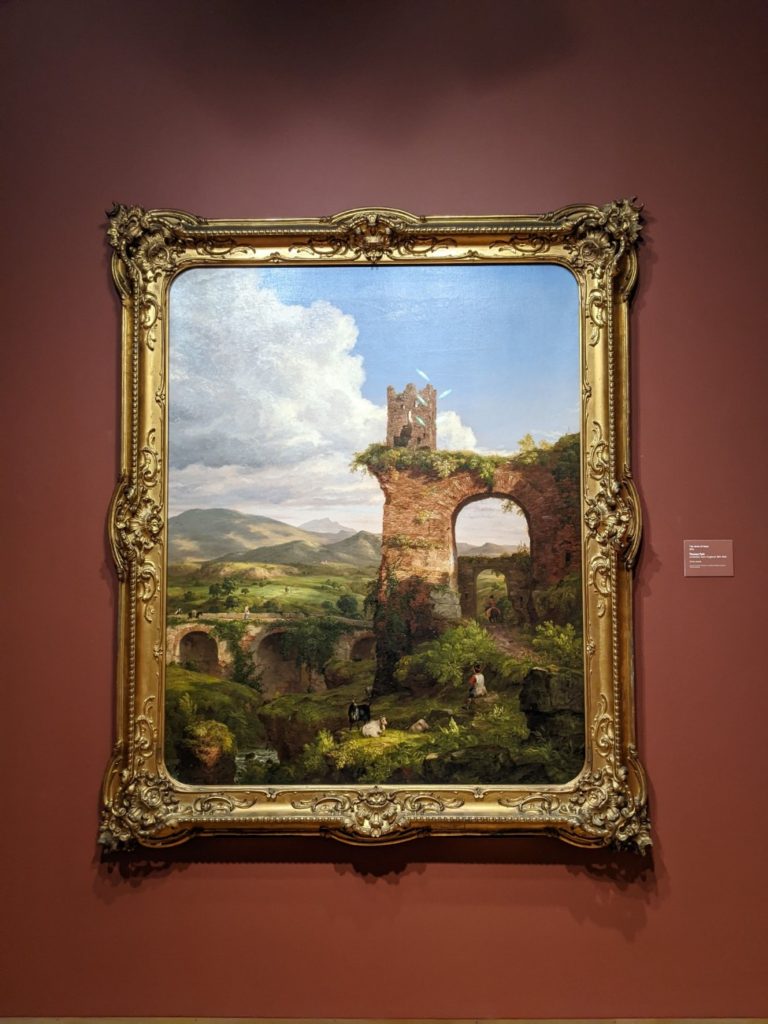
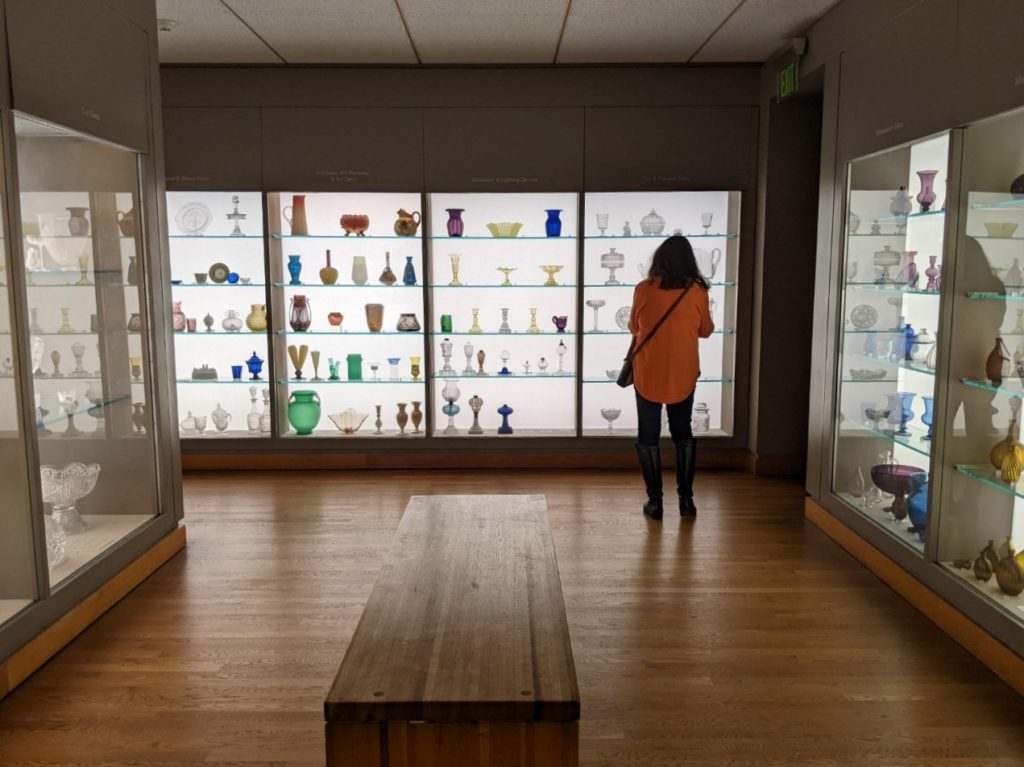
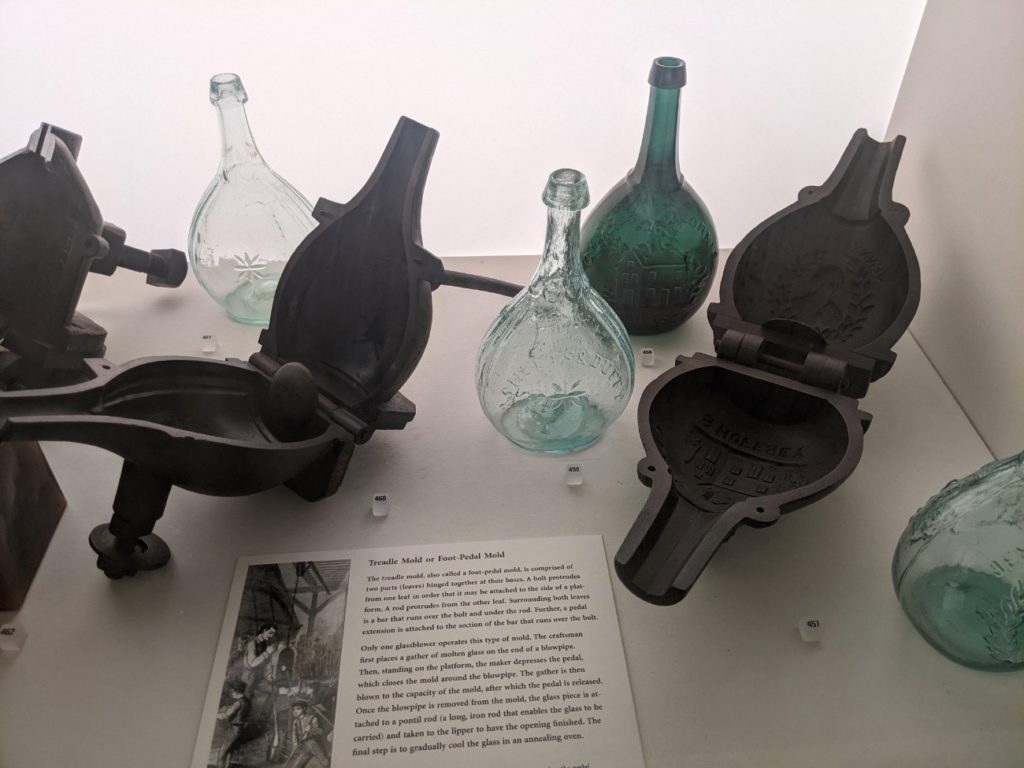
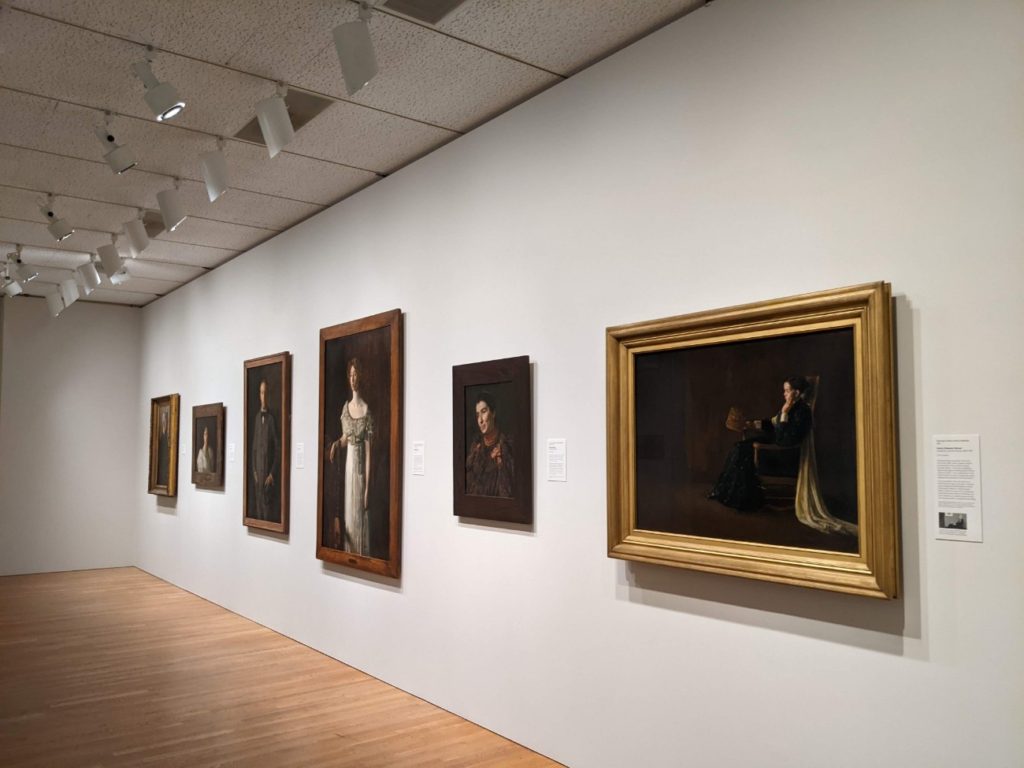
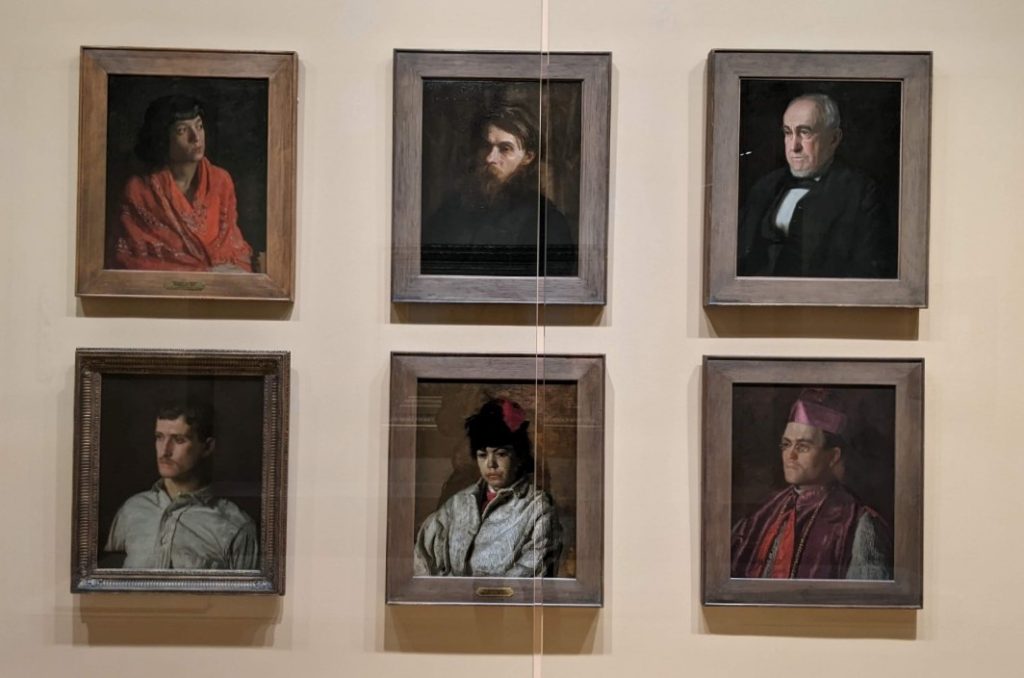
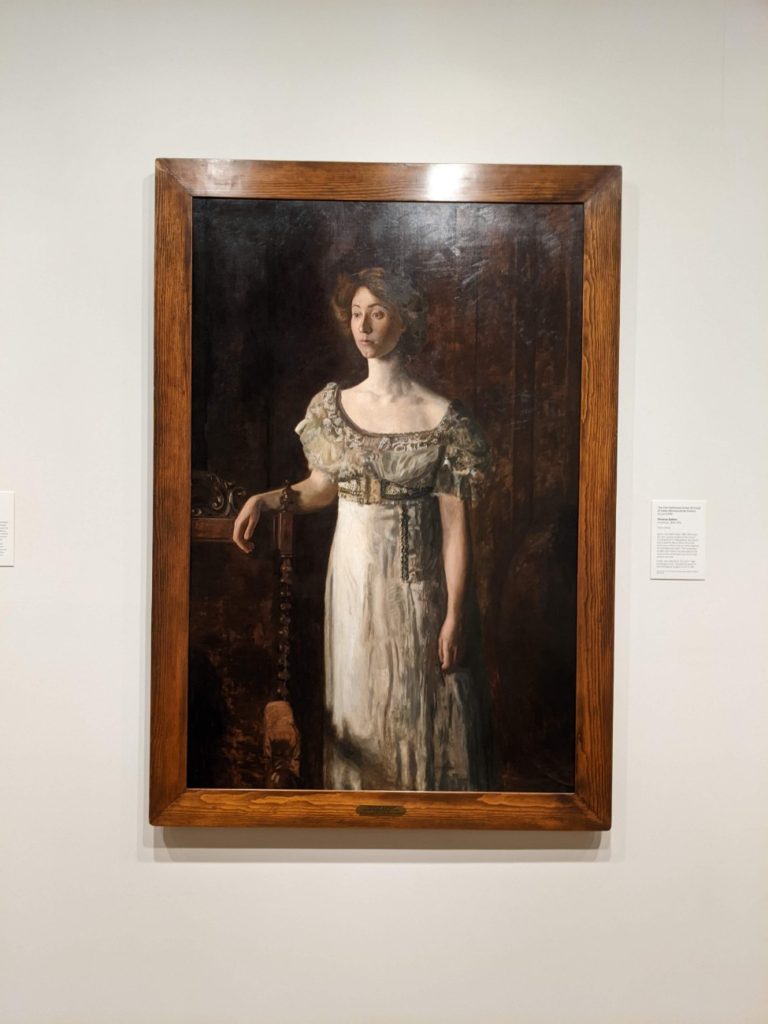
Third Floor
This might be an odd thing to say, but as I wandered around the top two floors, it’s almost distressing how much there is to see. The rooms get smaller and more numerous as you go up and I was always afraid of missing a room. While a good ol’ wander will do you just fine, I felt much better once I developed a system. All the galleries on these floors are three rooms wide. I liked best to walk straight down the middle first (which is where all the “BIG WOW” stuff is), then travel back through the side rooms on one side, cross and work my way back down the other side, then walk back to the front through the middle corridor again. (And that mostly works.)
The third floor can best be described as the museum’s big finish. There are whole temples up here, medieval courtyards with fountains, rooms transplanted whole from this or that hotel or apartment. You hardly feel like you’re in the same building anymore. I really enjoy that they’ve used real decorative doors and gates as the way through several of the galleries.
Armor & Armaments
Behind the top of the Great Stair Hall is a sunny room with medieval armor and armaments. Included is one of the “top tens”, a massive suit of armor on both man and horse.
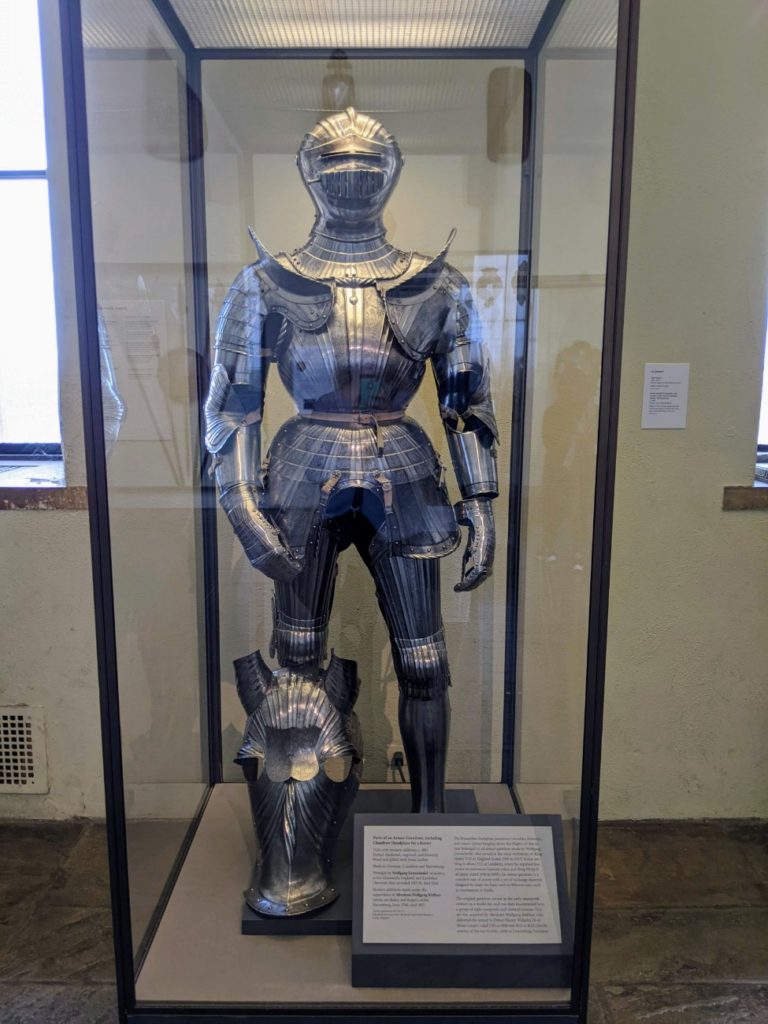
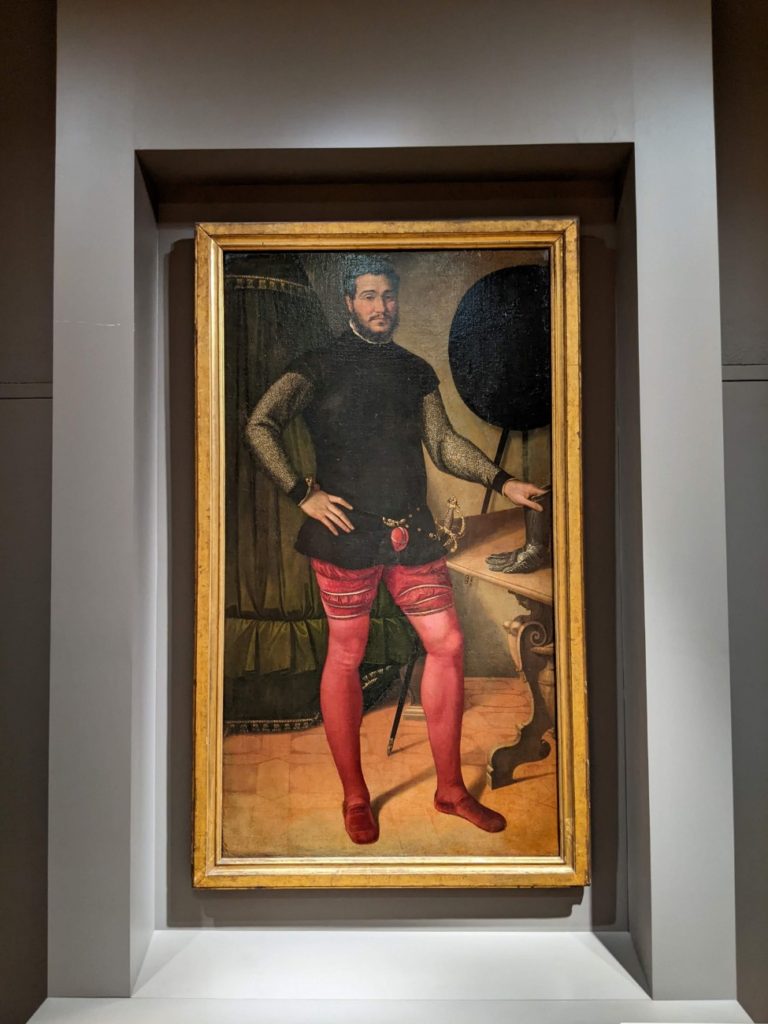
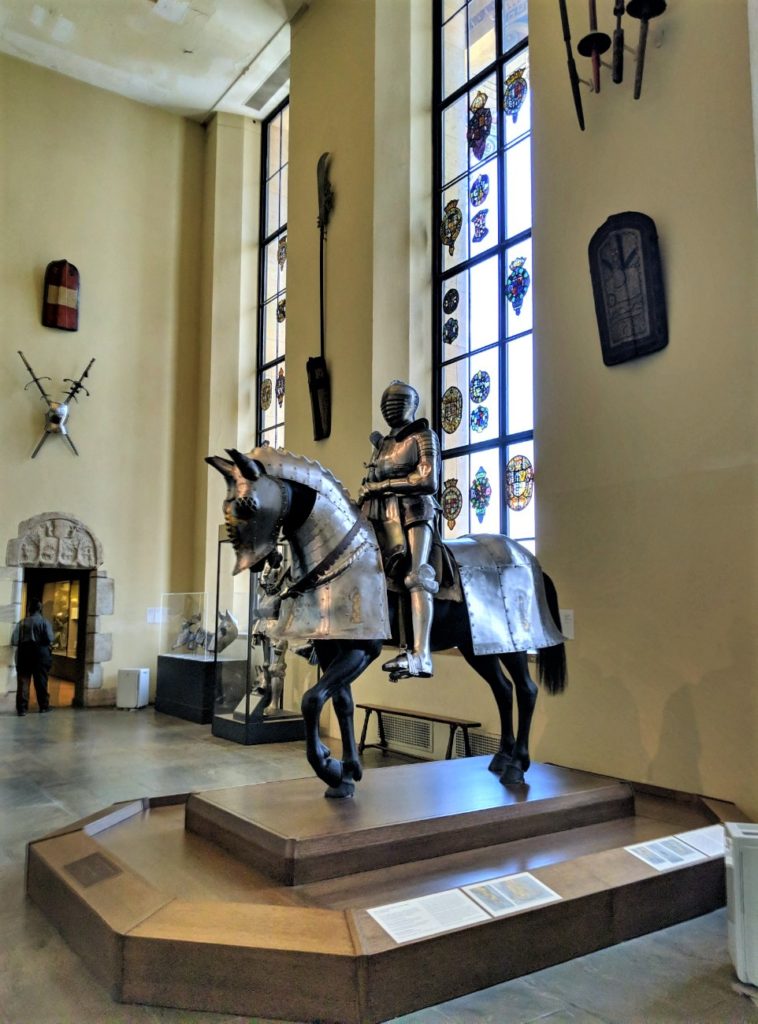
European Art 1500-1850
To the right of the stairs (as ascending) is a massive European art collection, 1500-1850, filling the whole wing. There are huge Renaissance church pieces, lush red rooms of the Romance period, and a series of rooms looking as if they had been transplanted directly from a British manor house.
Another room, richly gilded and mirrored, full of European art and furniture, turns out to be an exact replica of a 1920’s New York apartment. In one corner is a perfect transplant from a 1600s Dutch house.
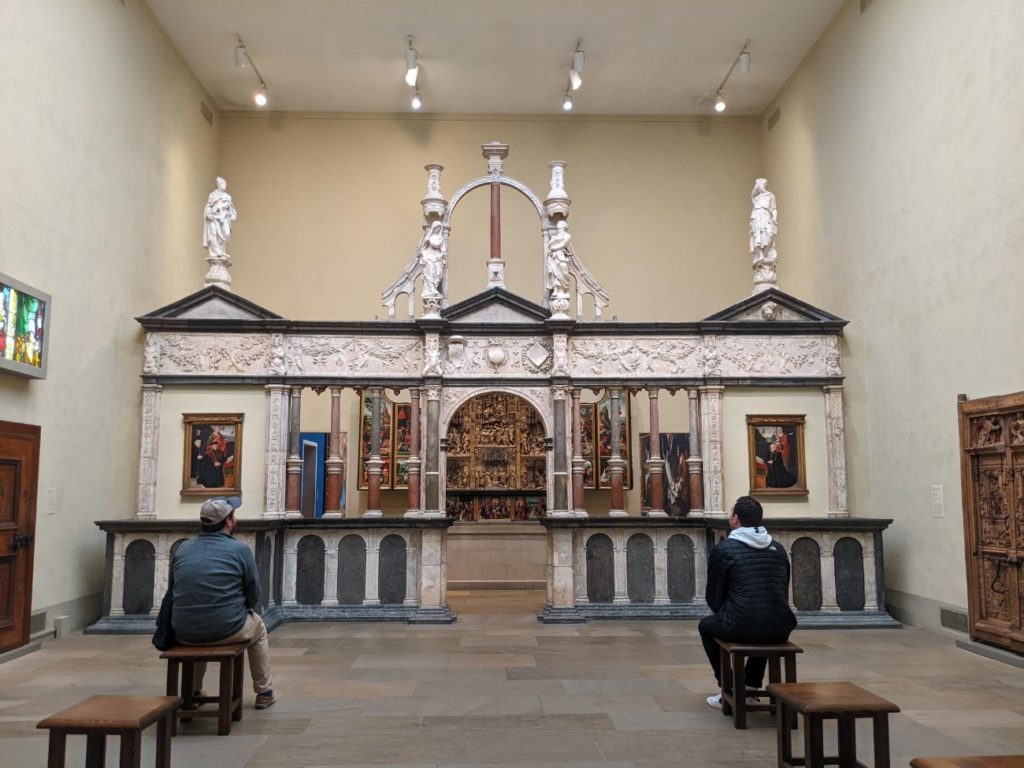
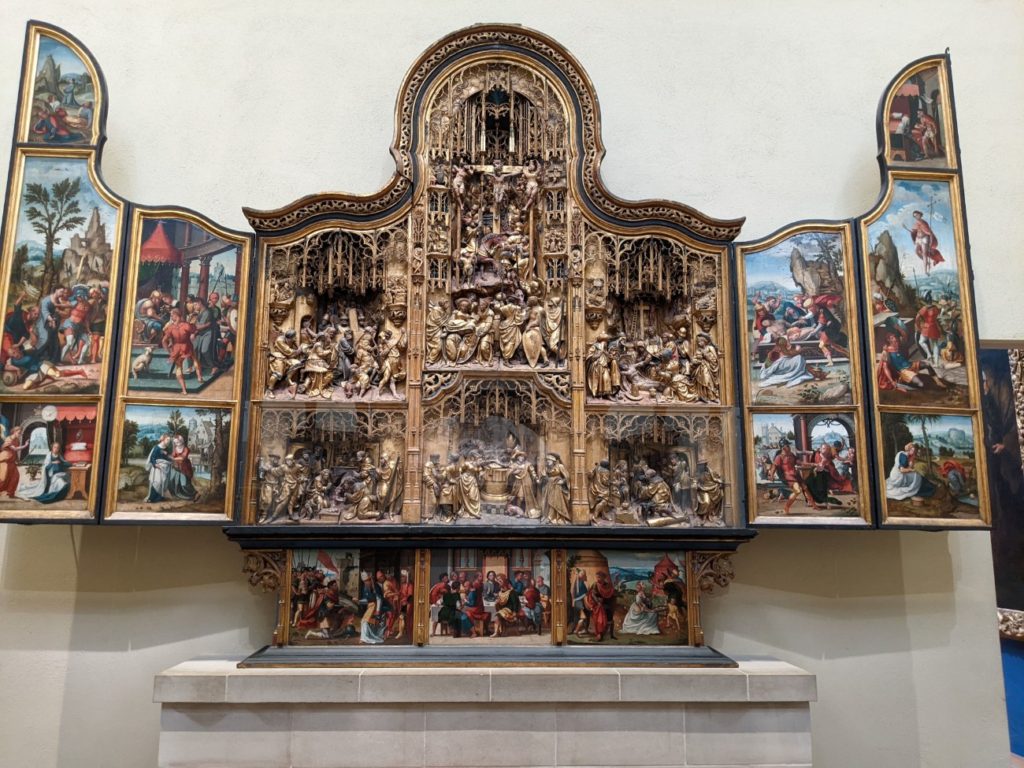
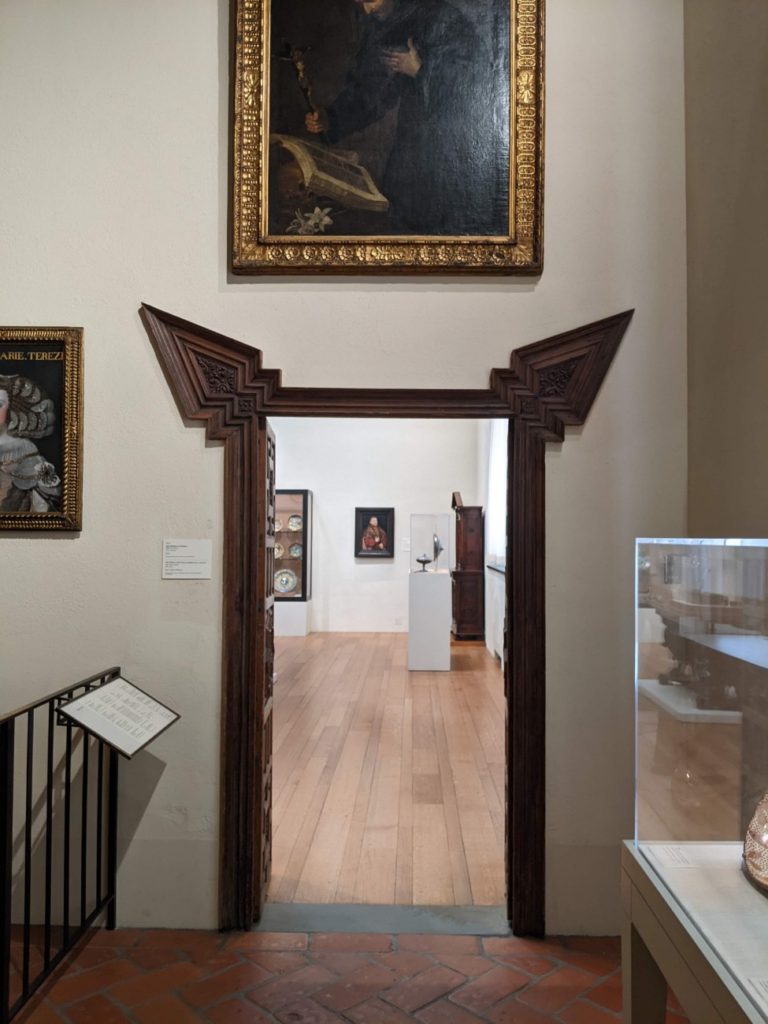
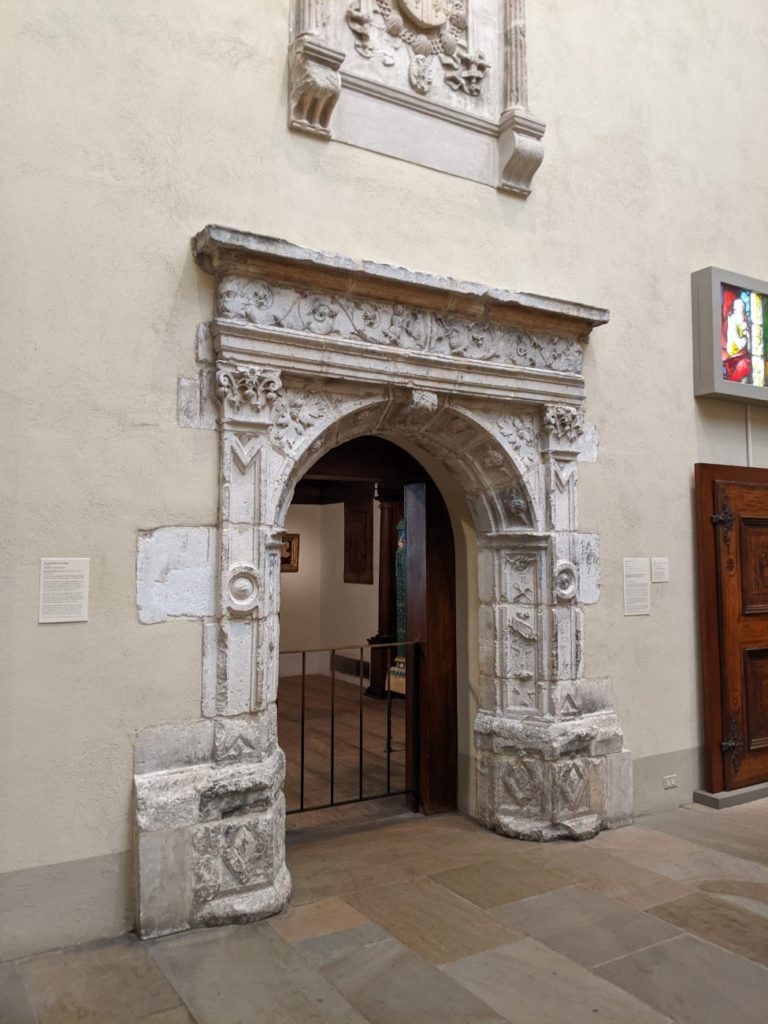
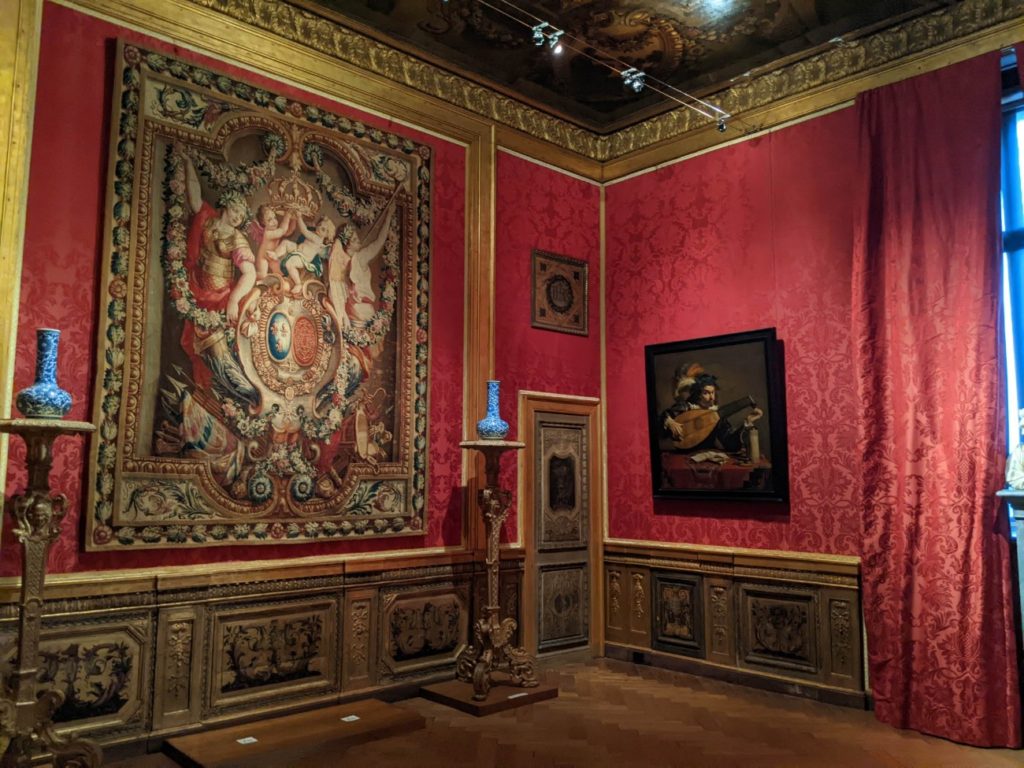
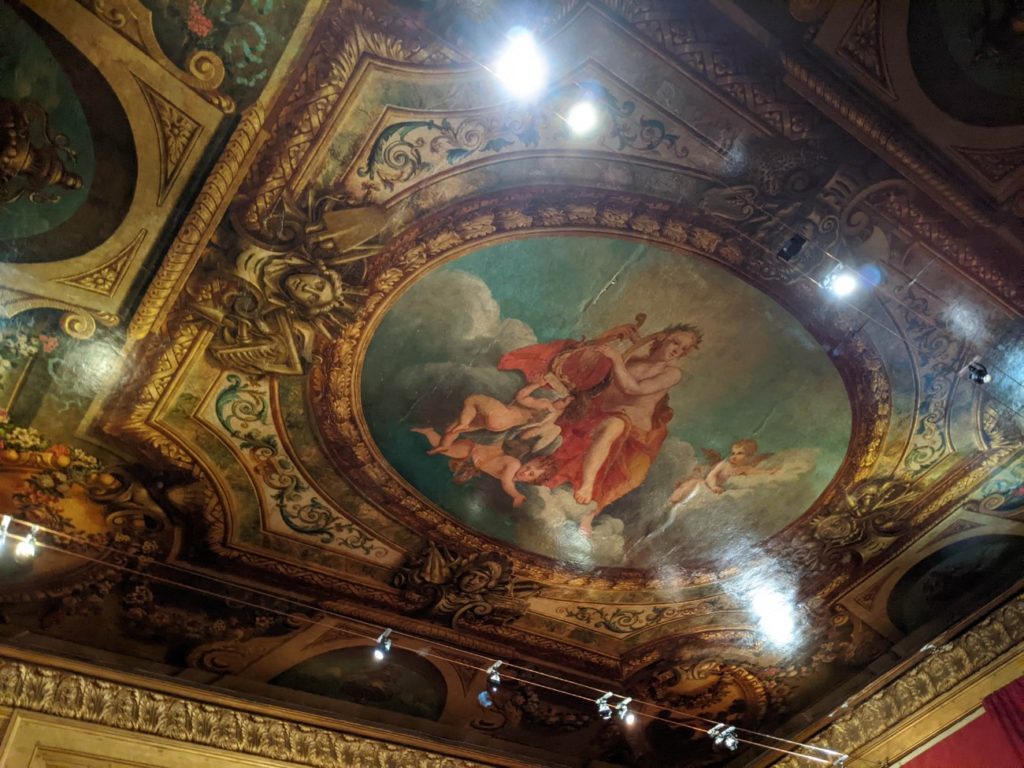
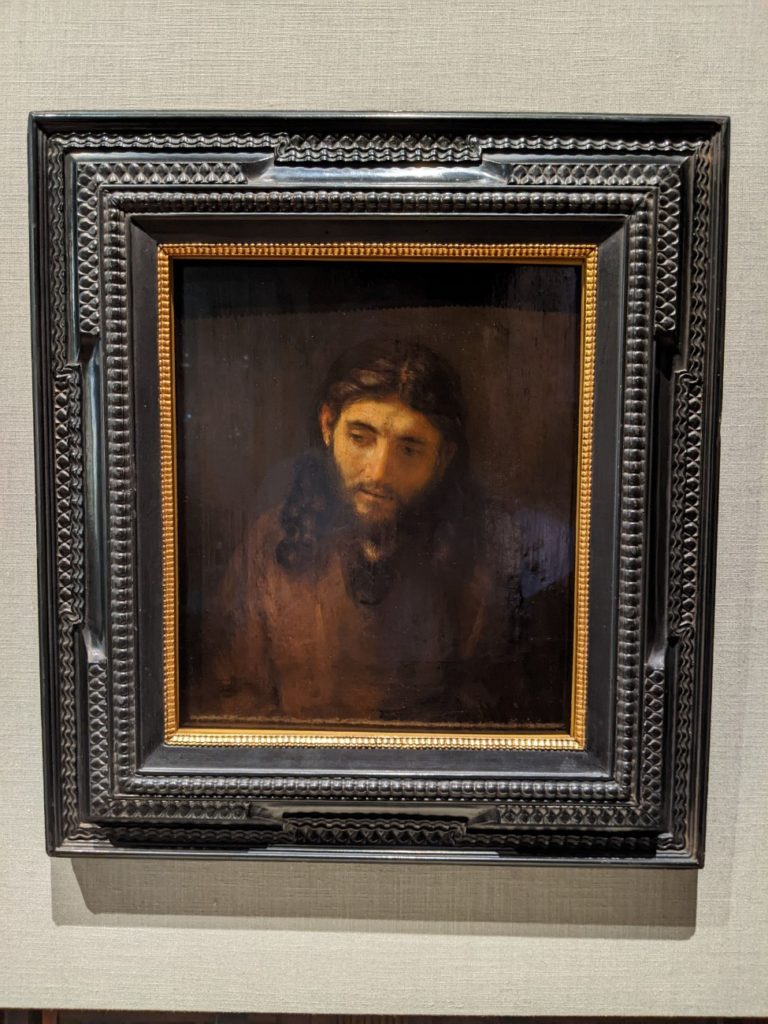
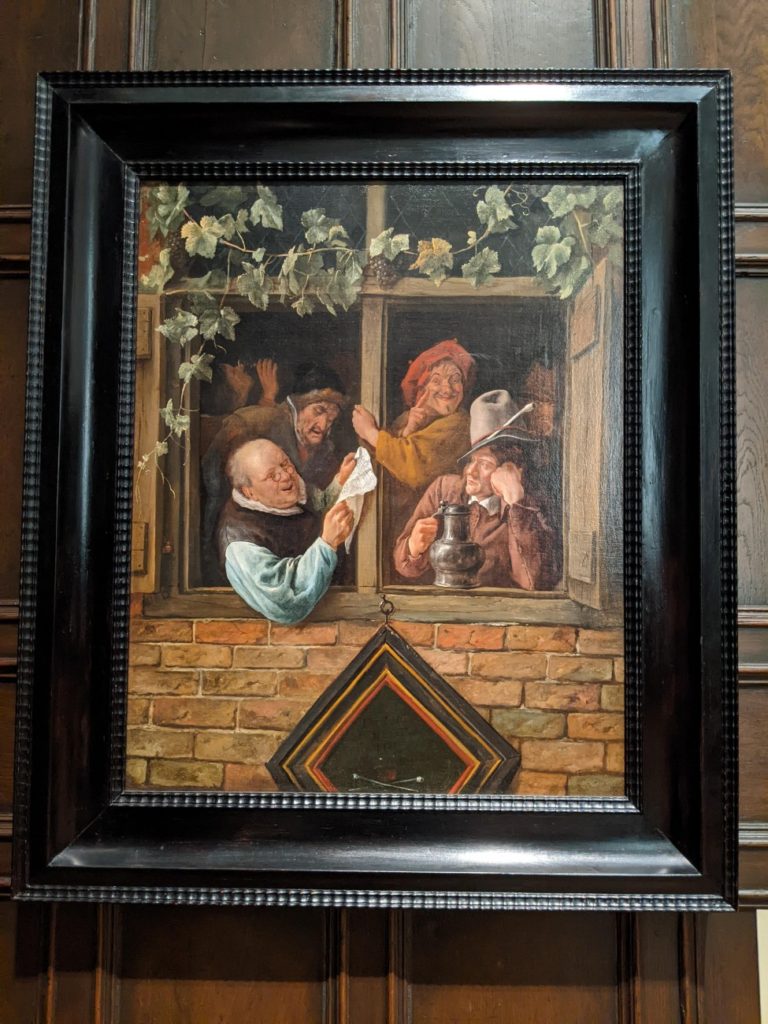
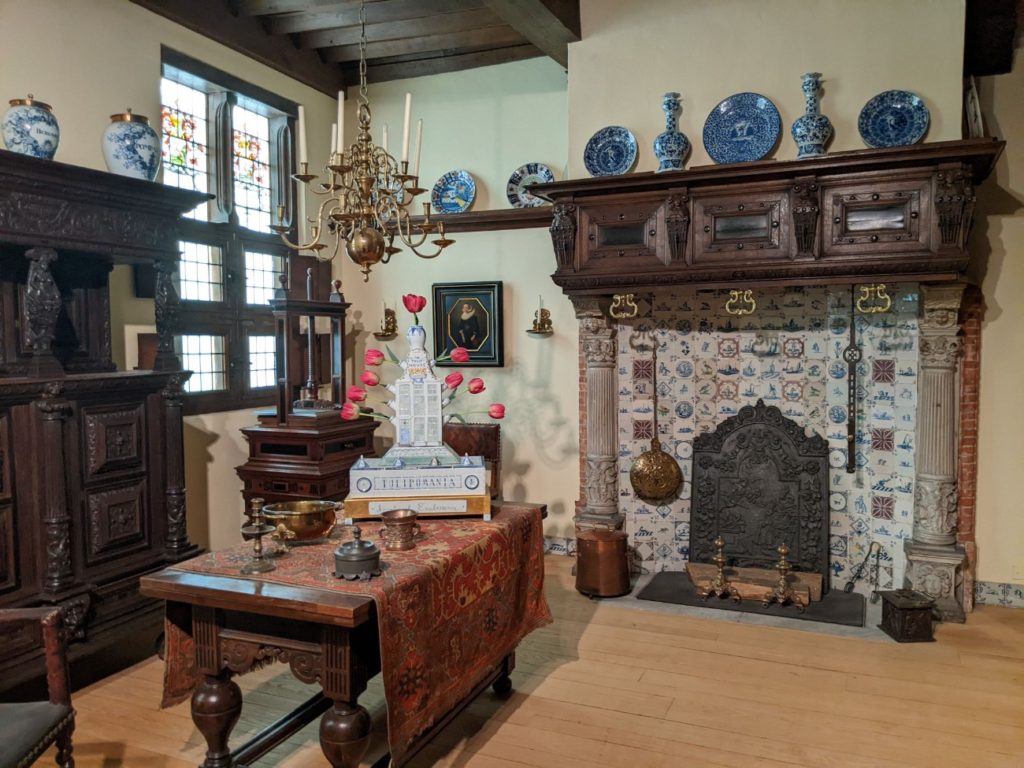
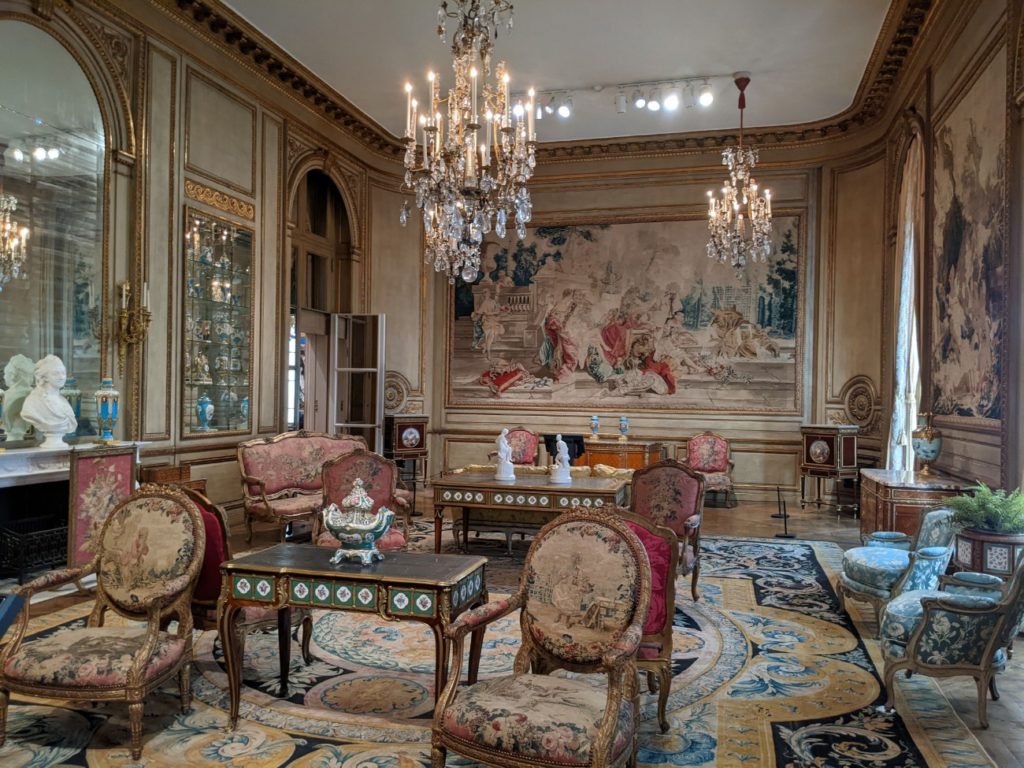
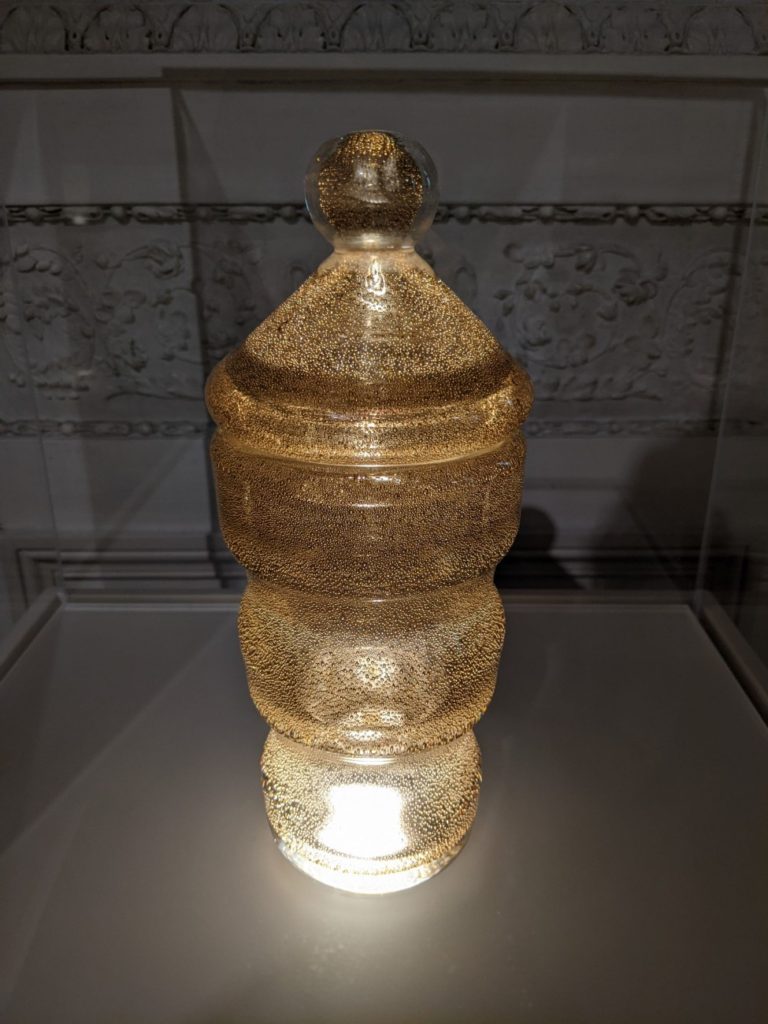
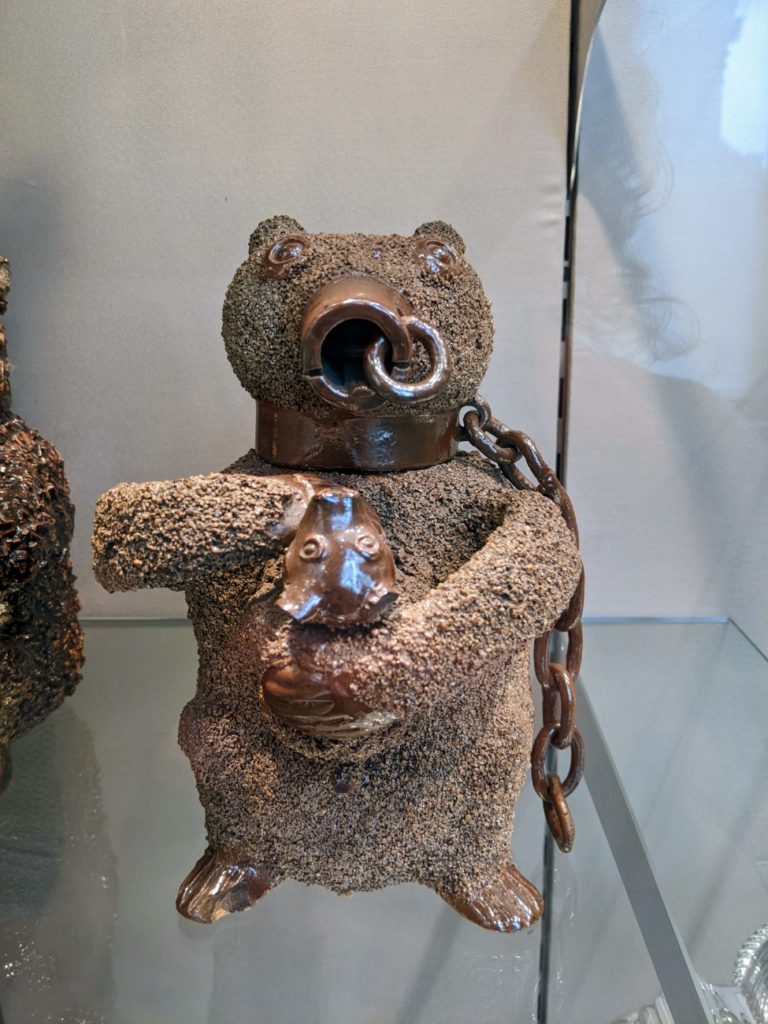
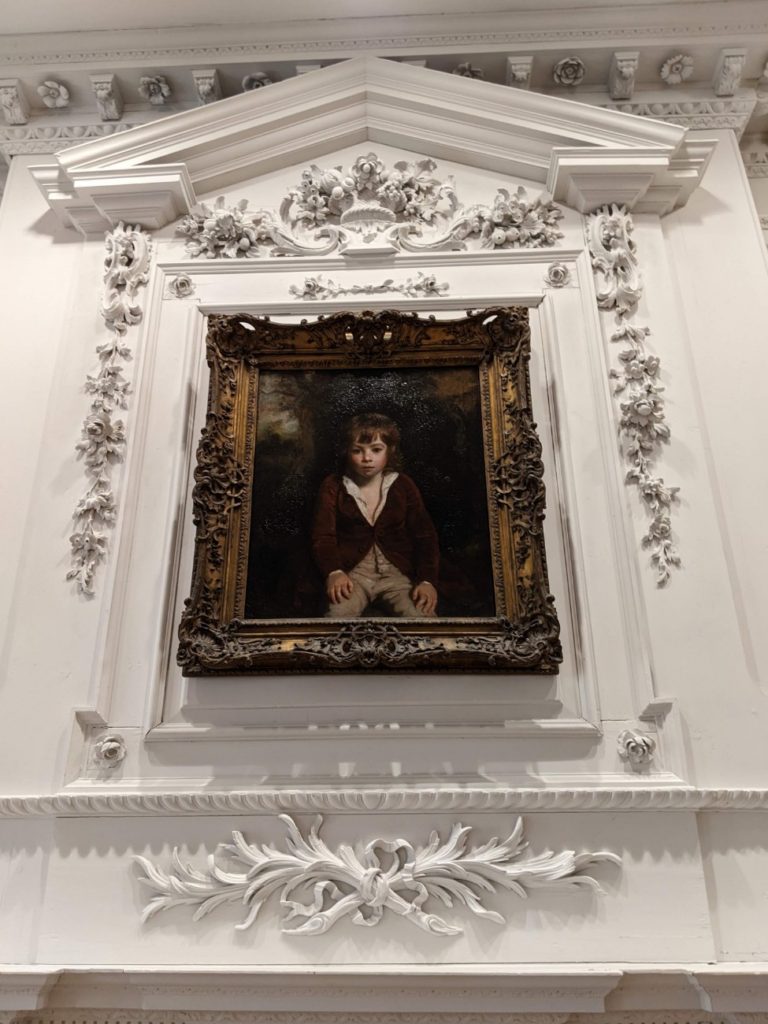
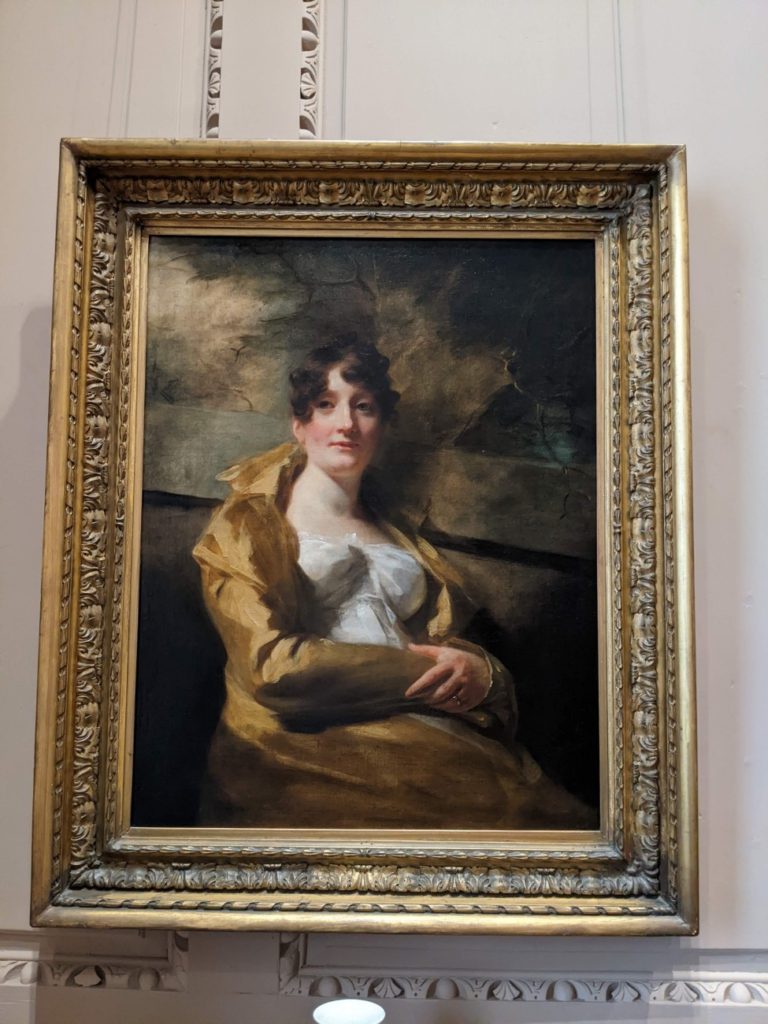
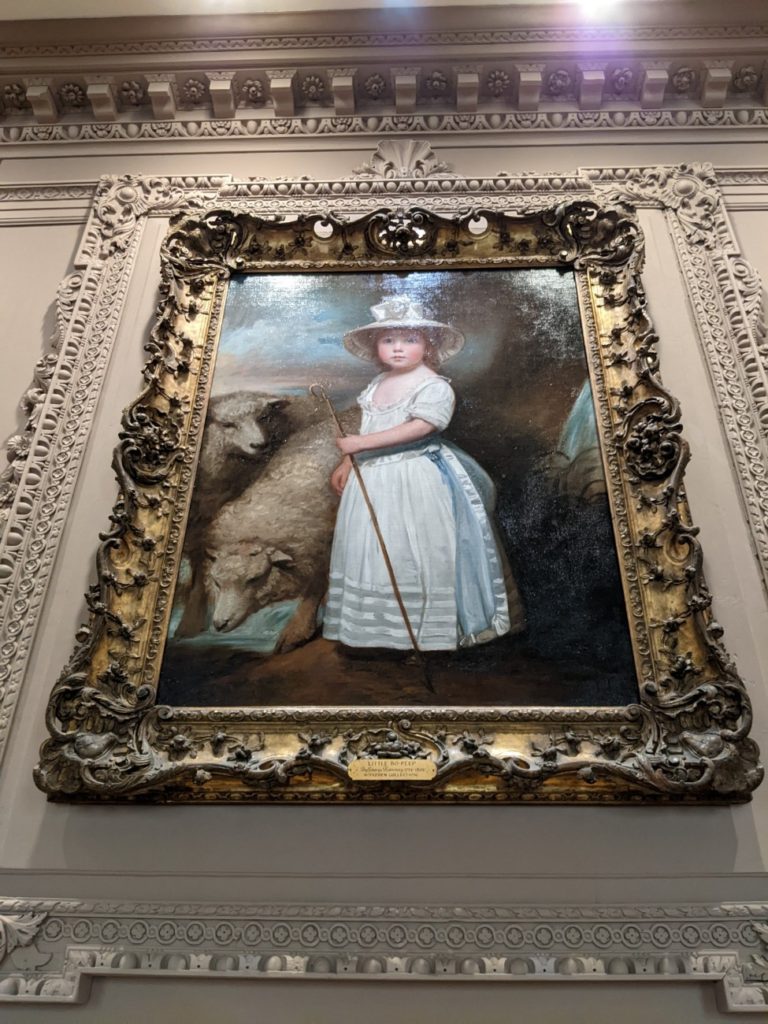
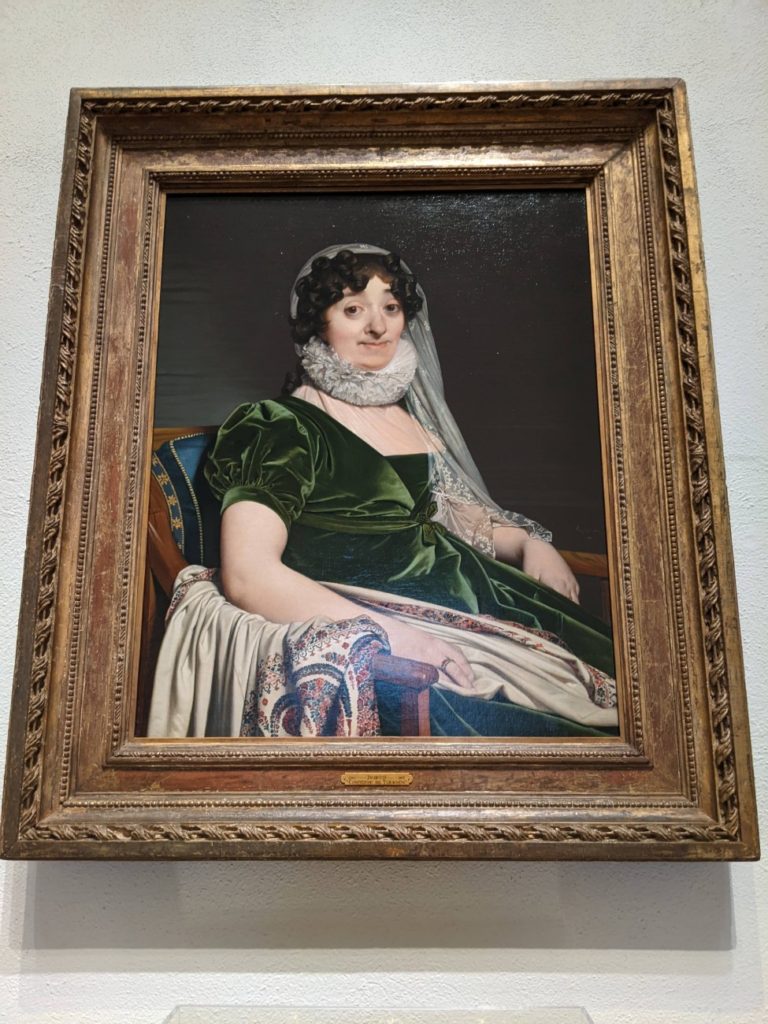
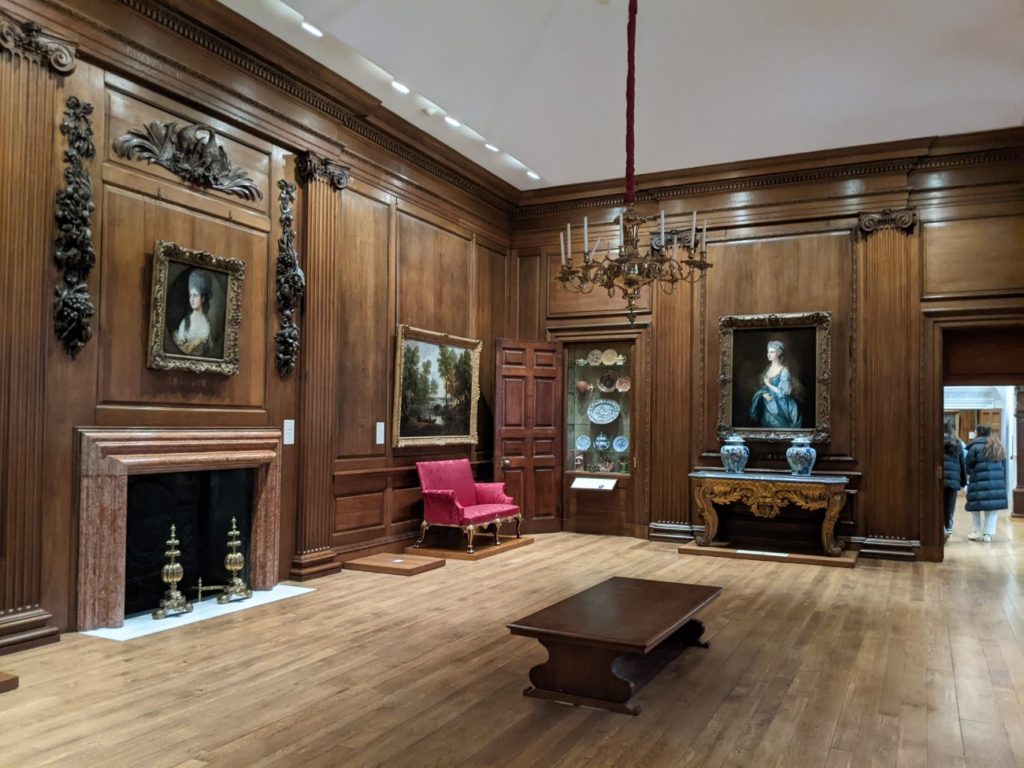
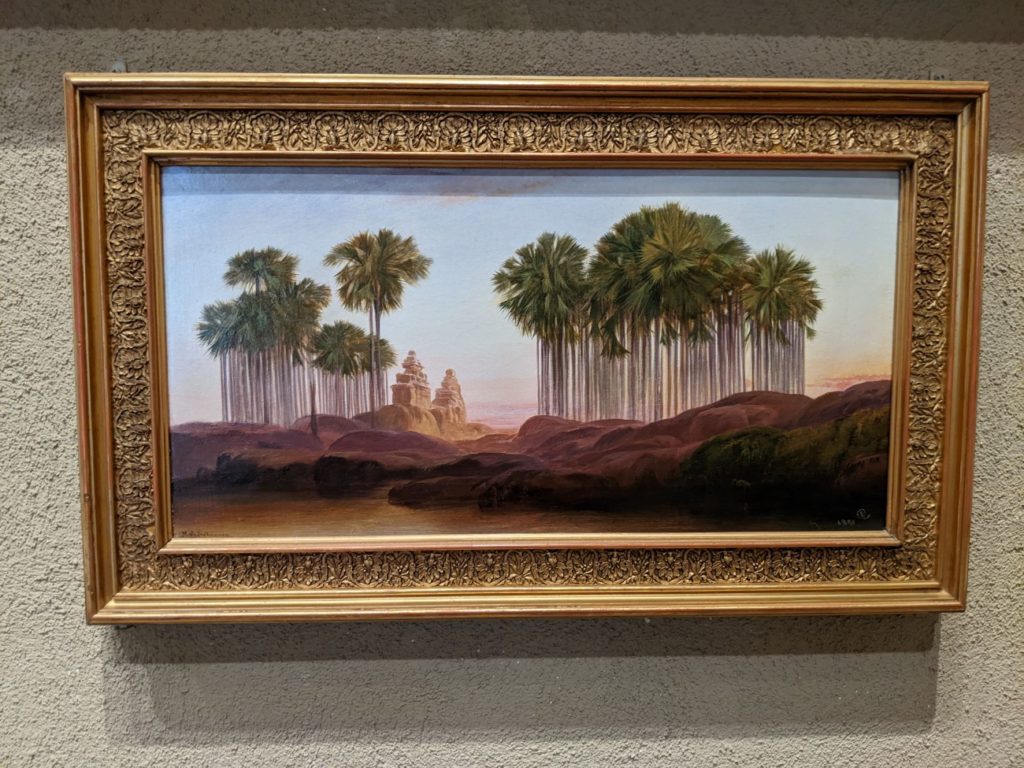
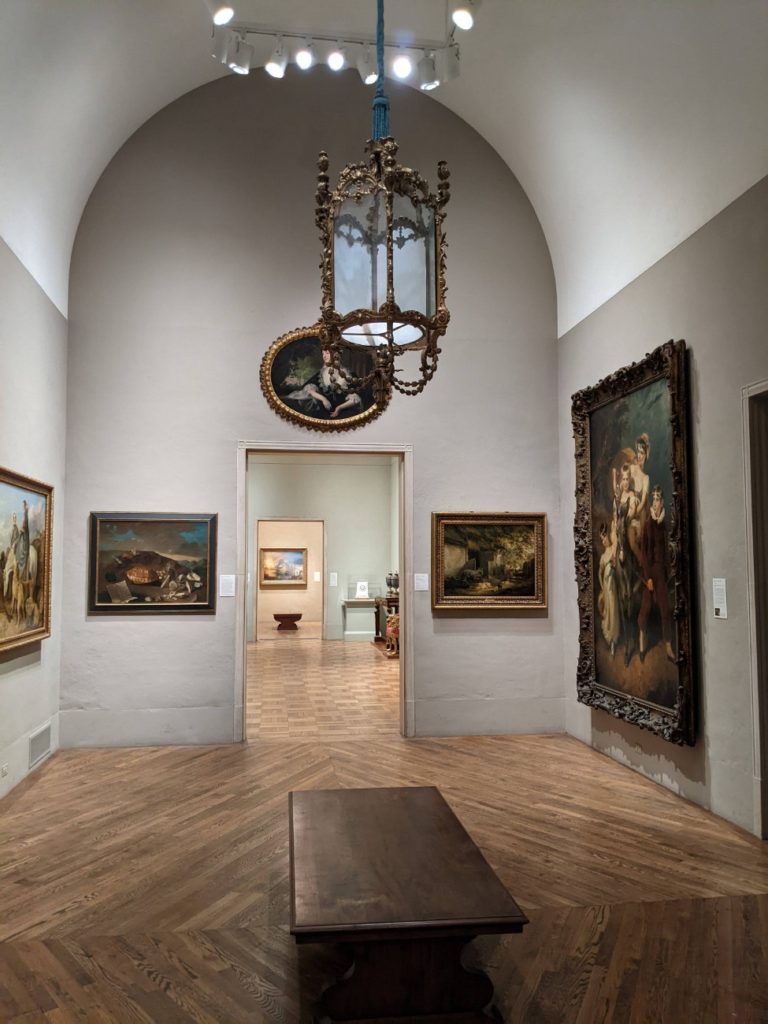
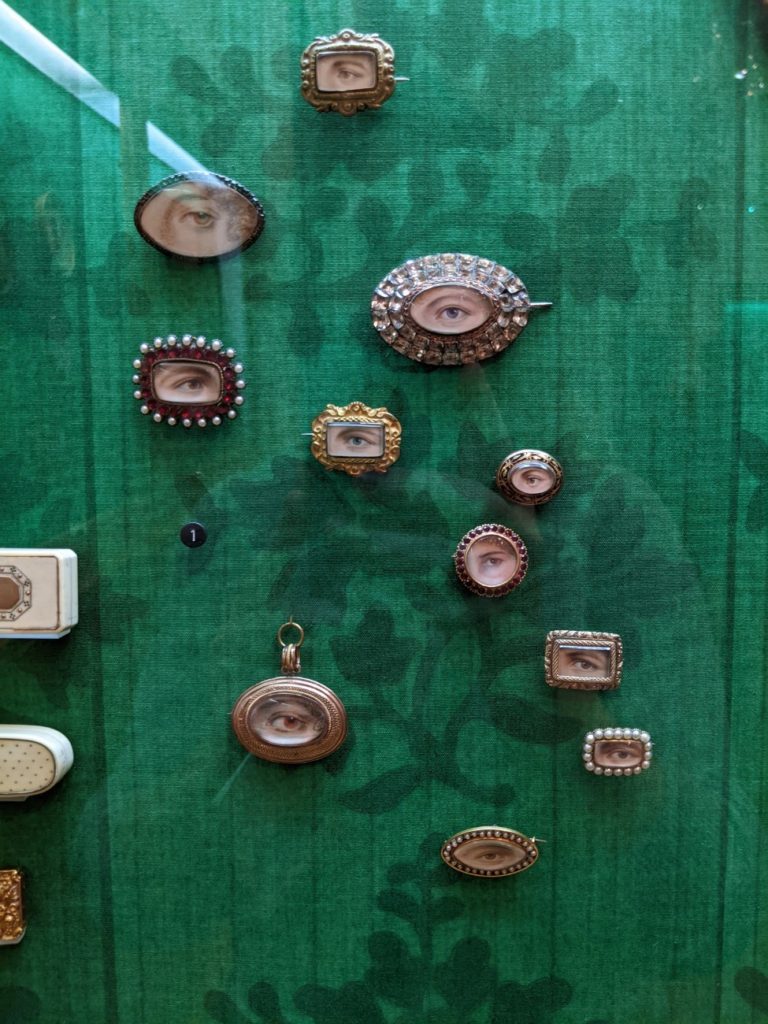
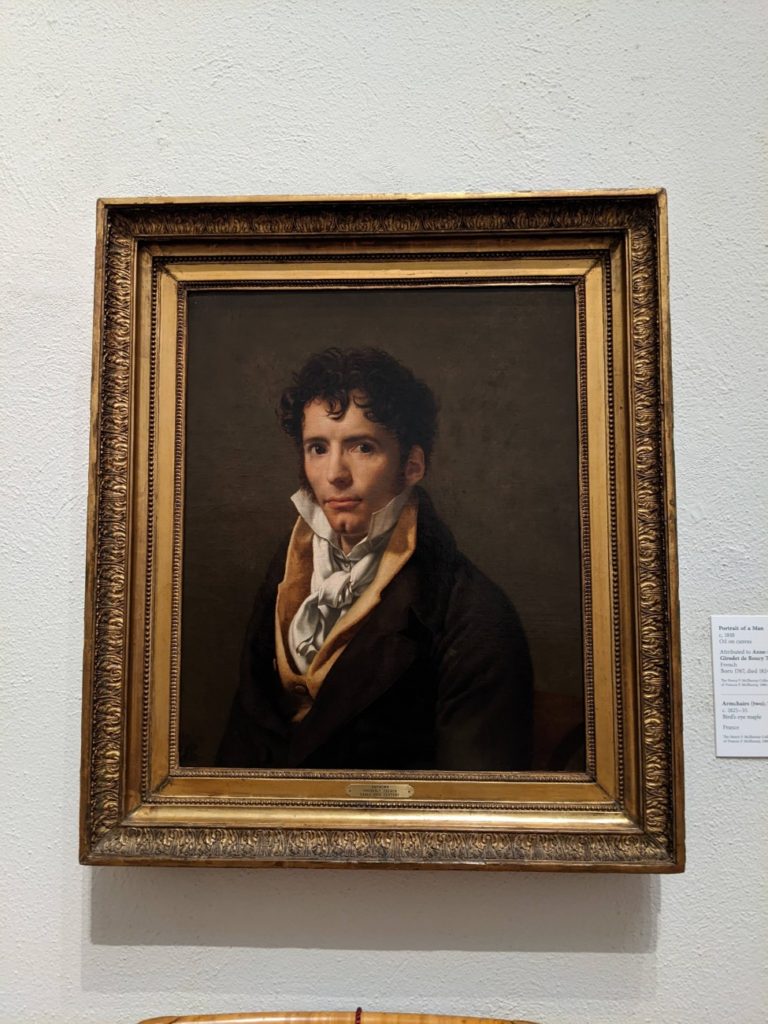
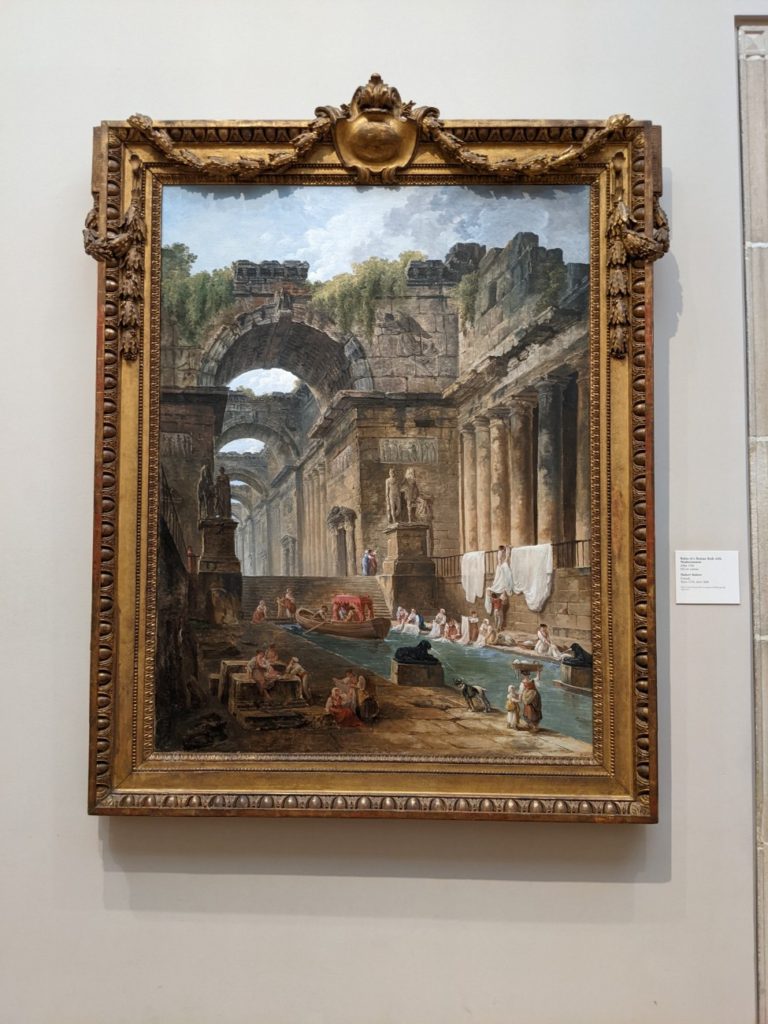
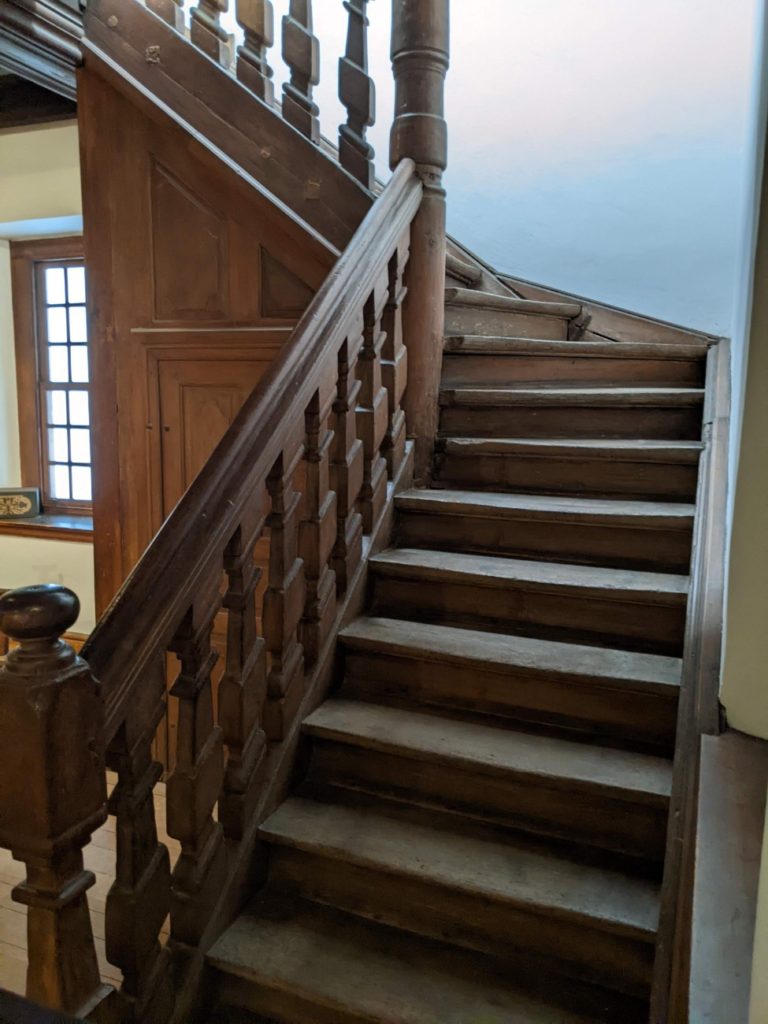
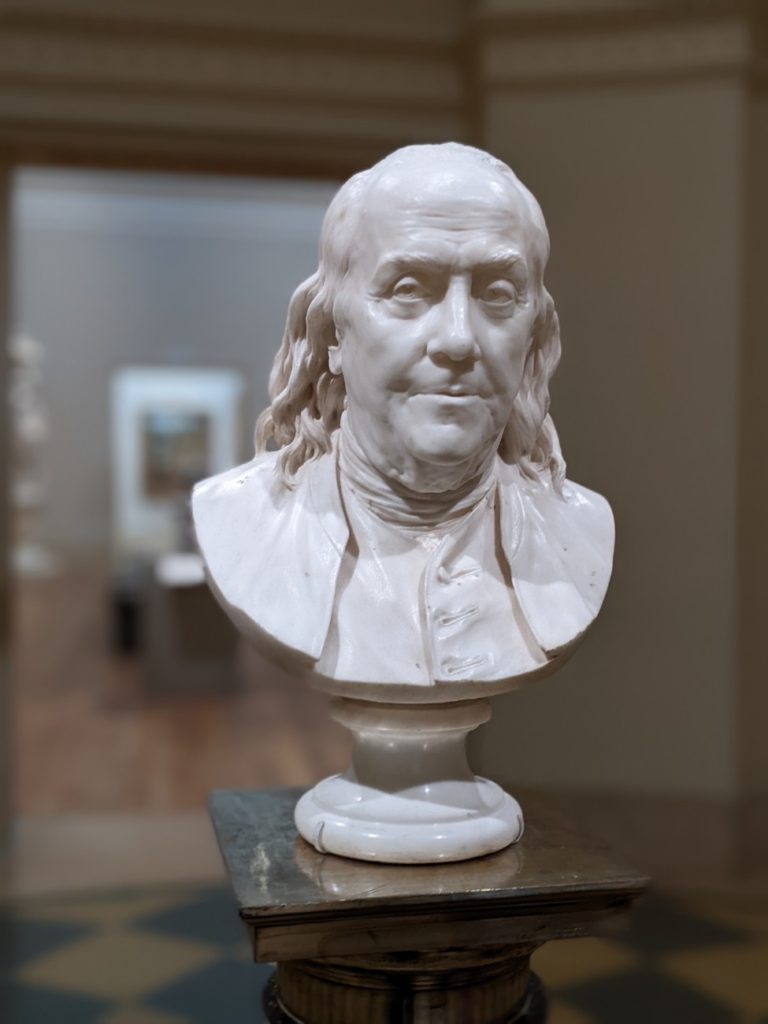
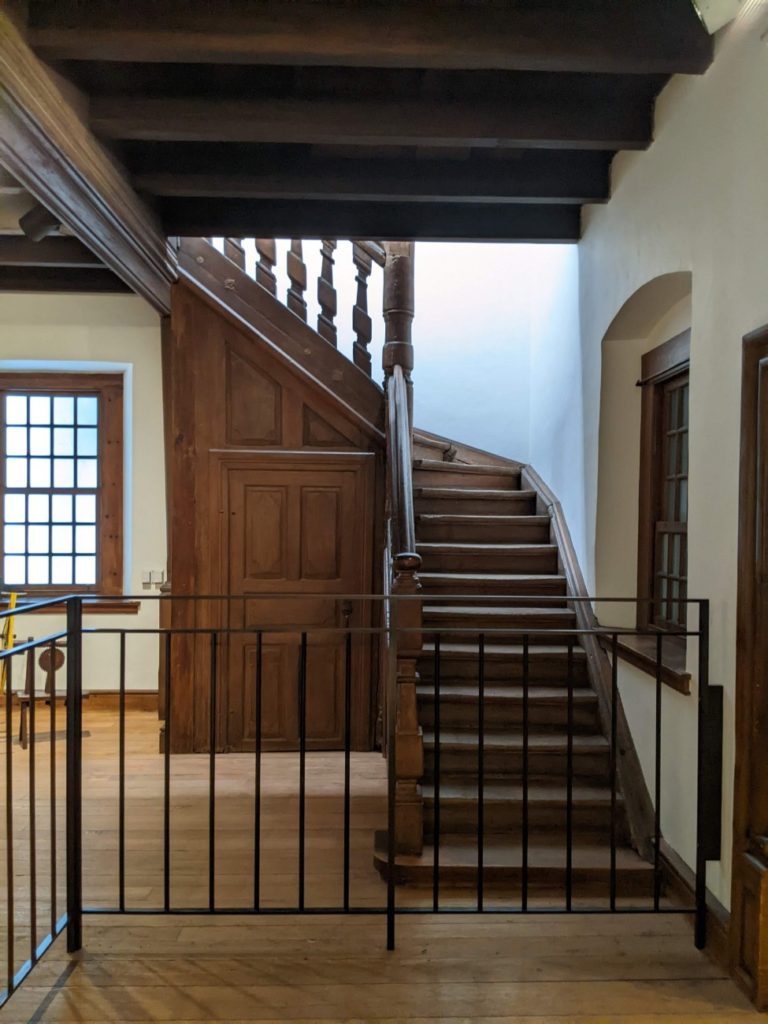
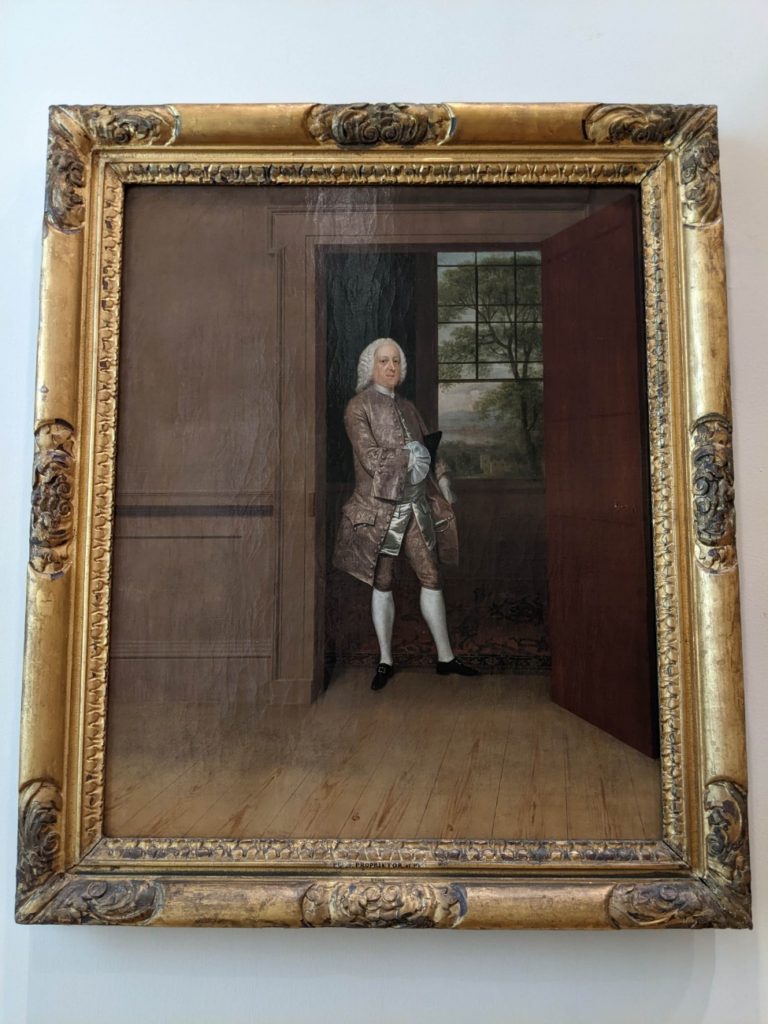
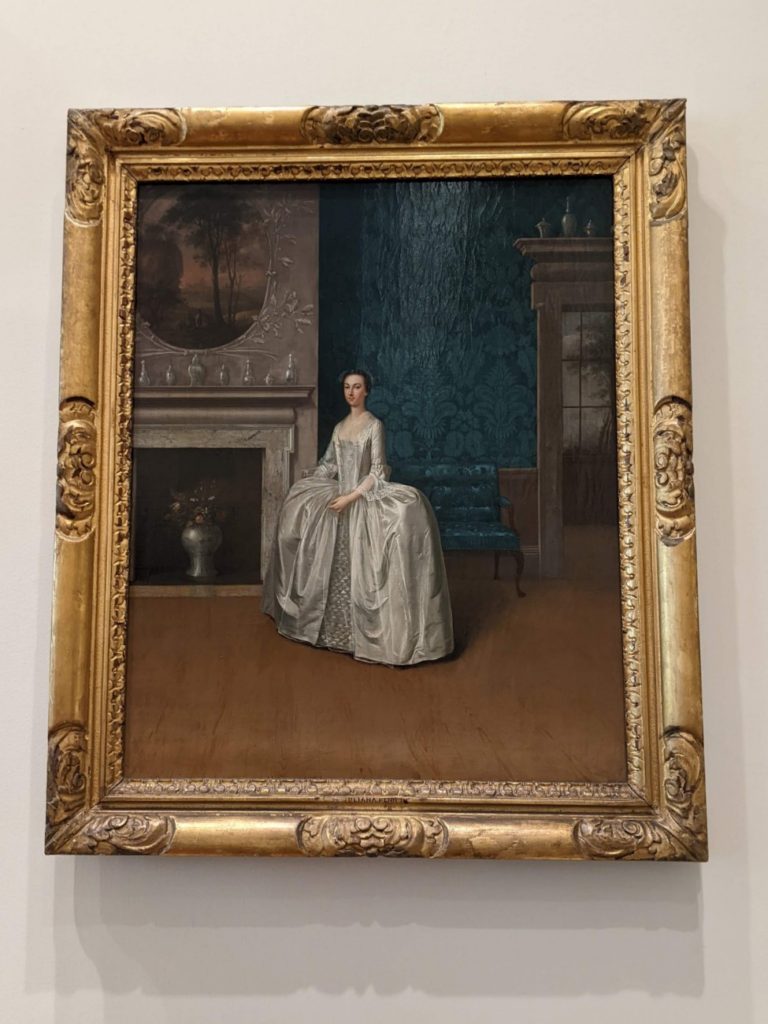
European Art 1100-1500
To the left of the stairs is even more European art, this time from 1100-1500. Down this wing is medieval religious art, a massive gothic stone church arch, and a beautiful Italian Renaissance courtyard with an actual working fountain. This is my favorite room, with the lights low in perpetual twilight and the trickling water.
At the far end of this section is Weyden’s two-panel The Crucifixion from 1460 Netherlands, another one of the “top ten.”
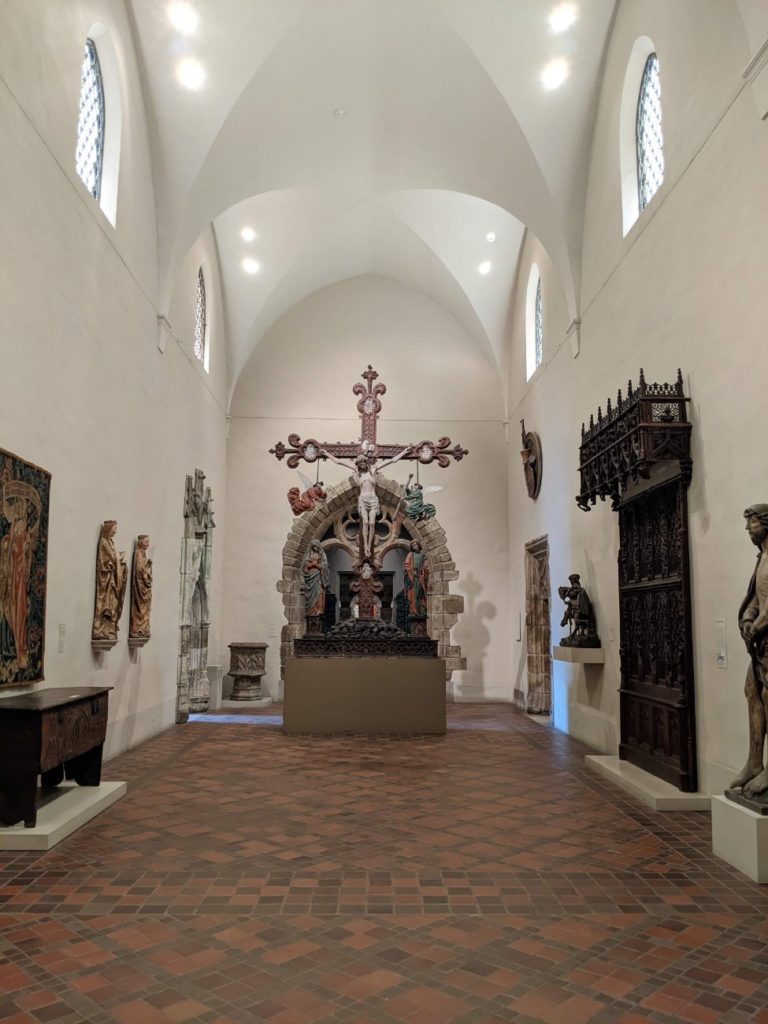
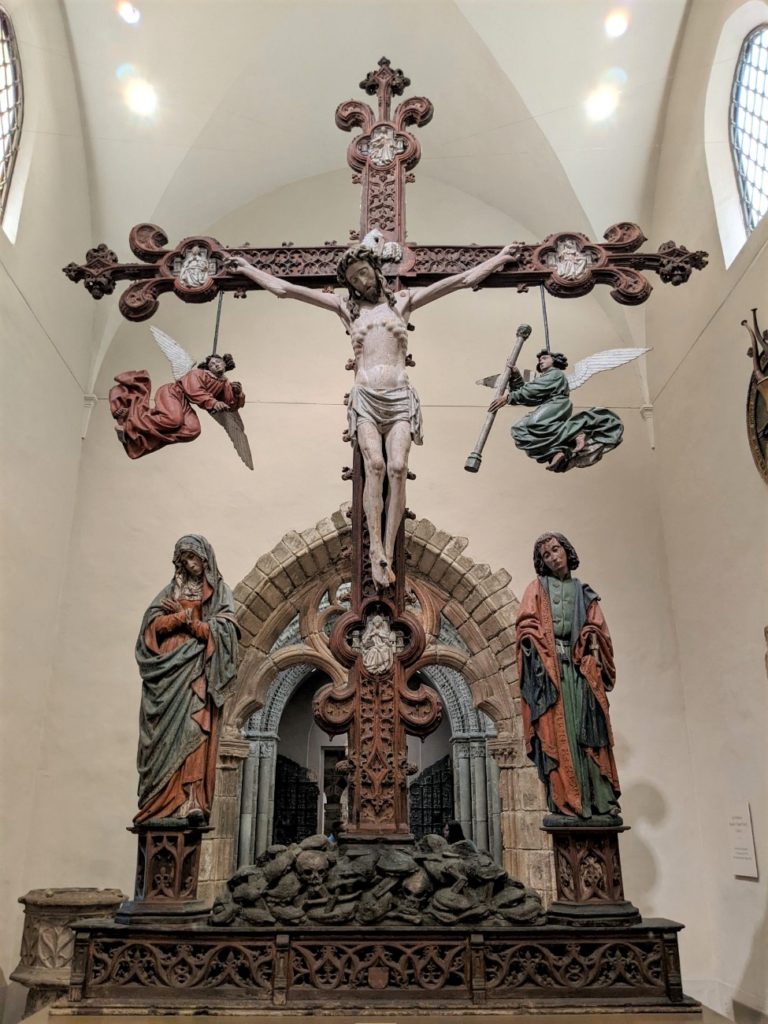
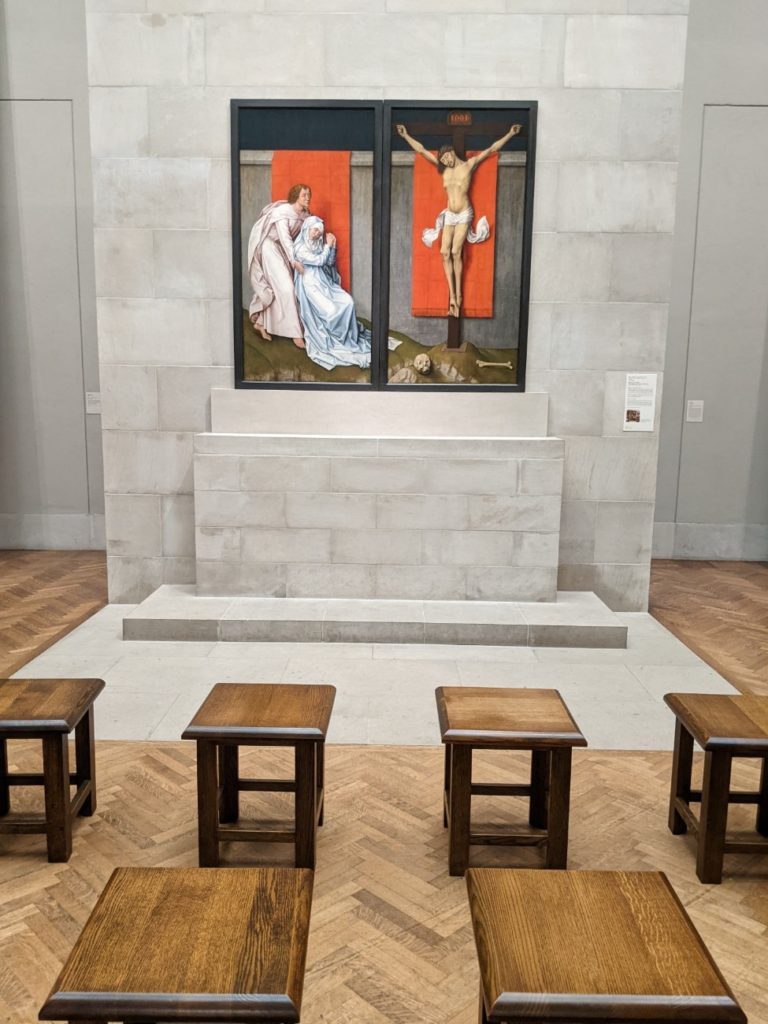
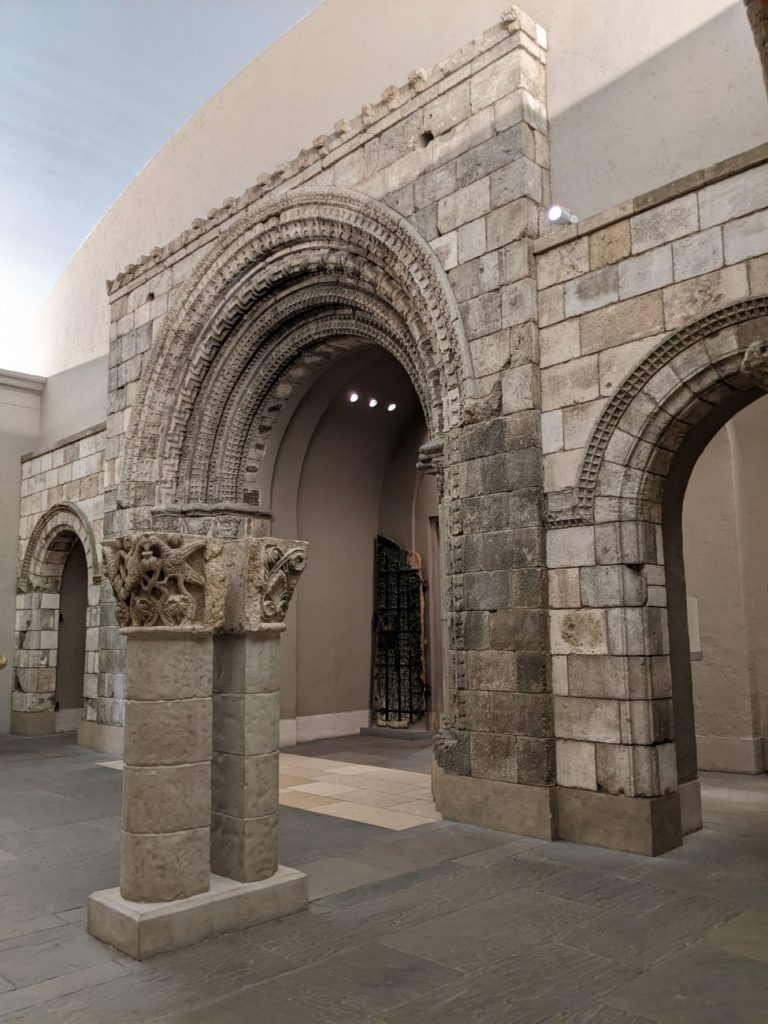
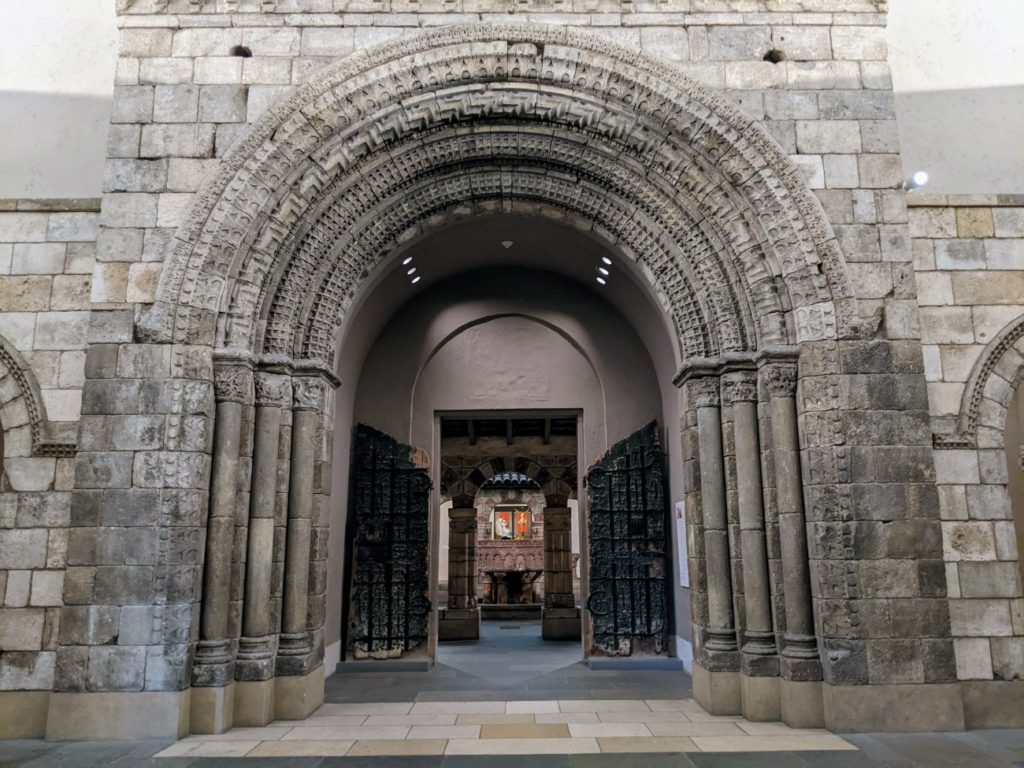
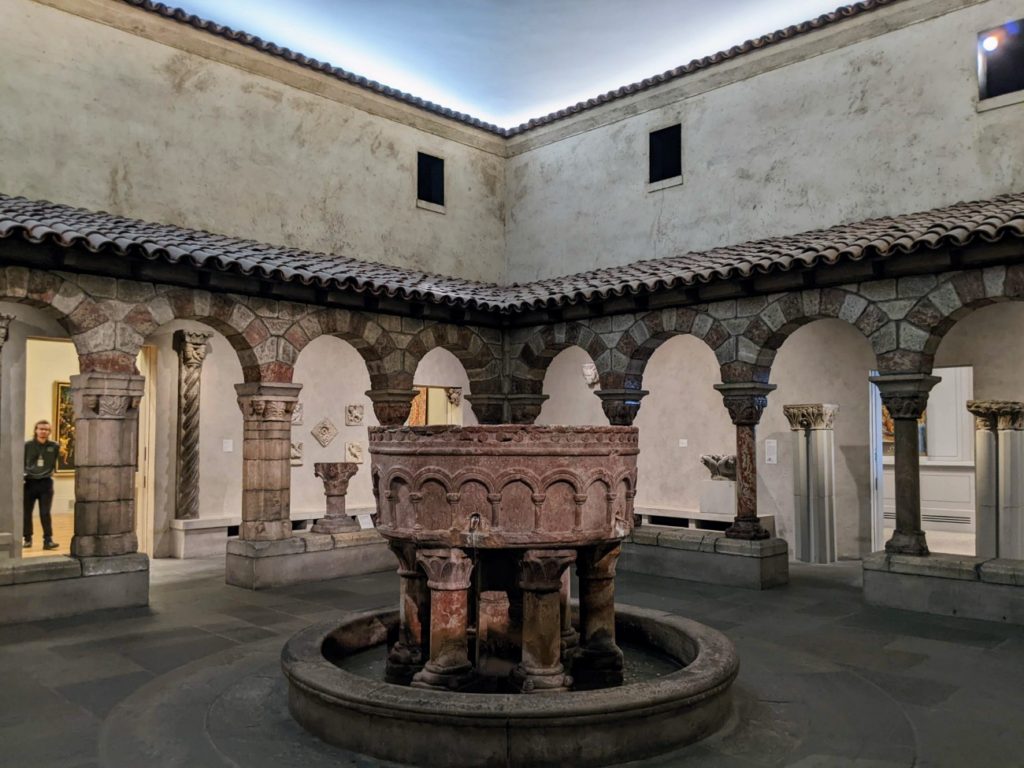
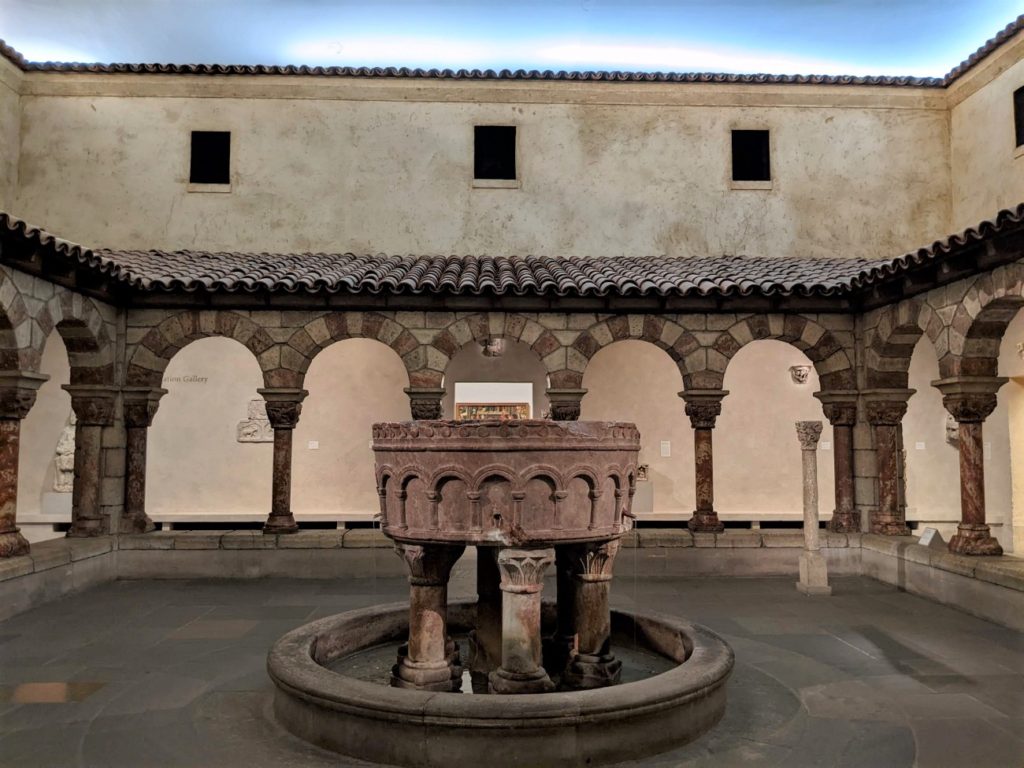
Asian Art
As if that weren’t enough, you turn the corner into the Asian art section. There are middle eastern rugs and mosaics, then a whole dang temple hall with mood lighting. Next is a huge, actual Chinese house with items like a lacquered bed and a wooden dog cage.
Through that and you find yourself in a Japanese tea garden, as if you were outside in the sunshine. And none of these are replicated. They were acquired, transported, and reassembled here in the museum. The transportive feeling of these rooms is astounding.
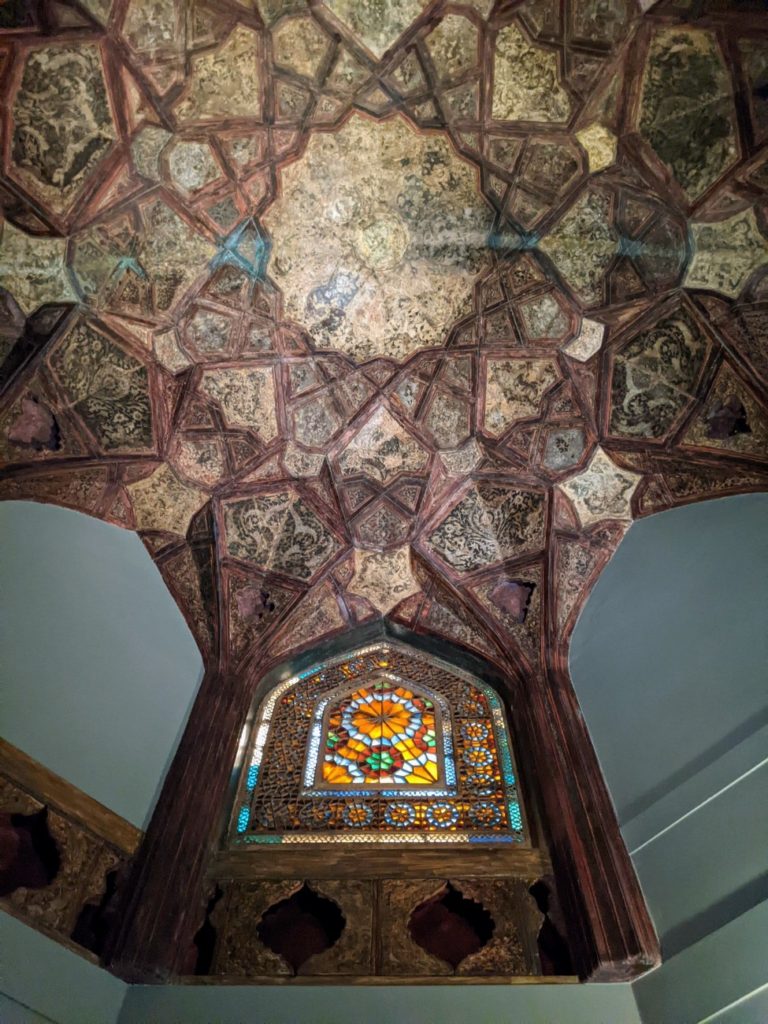
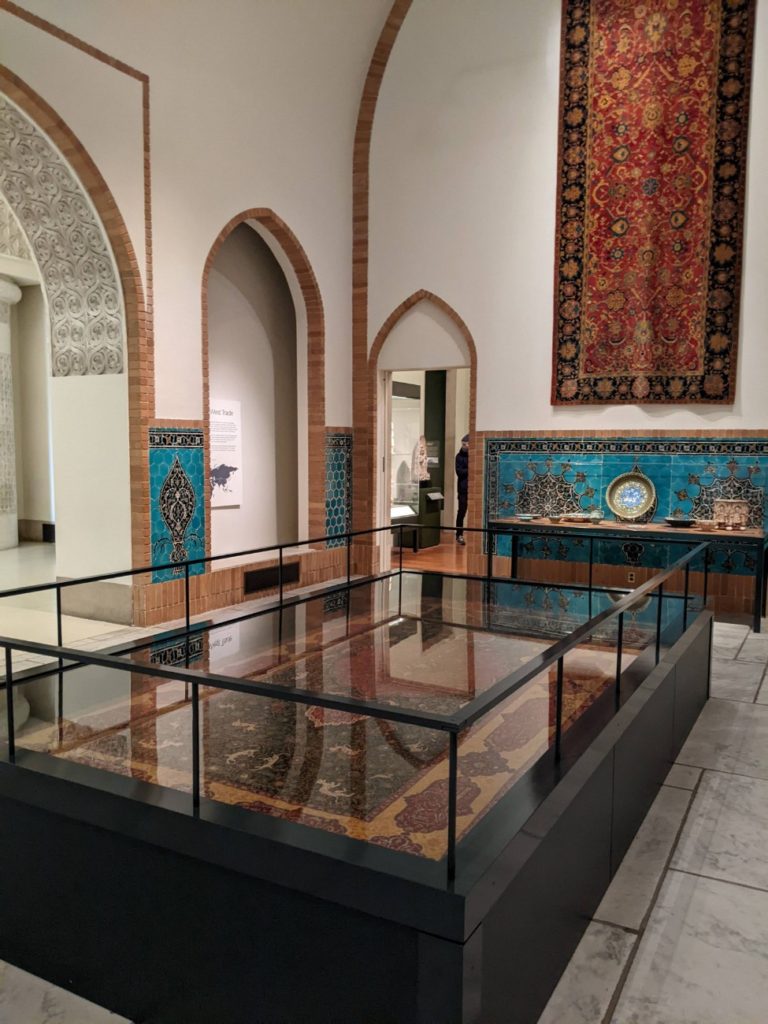
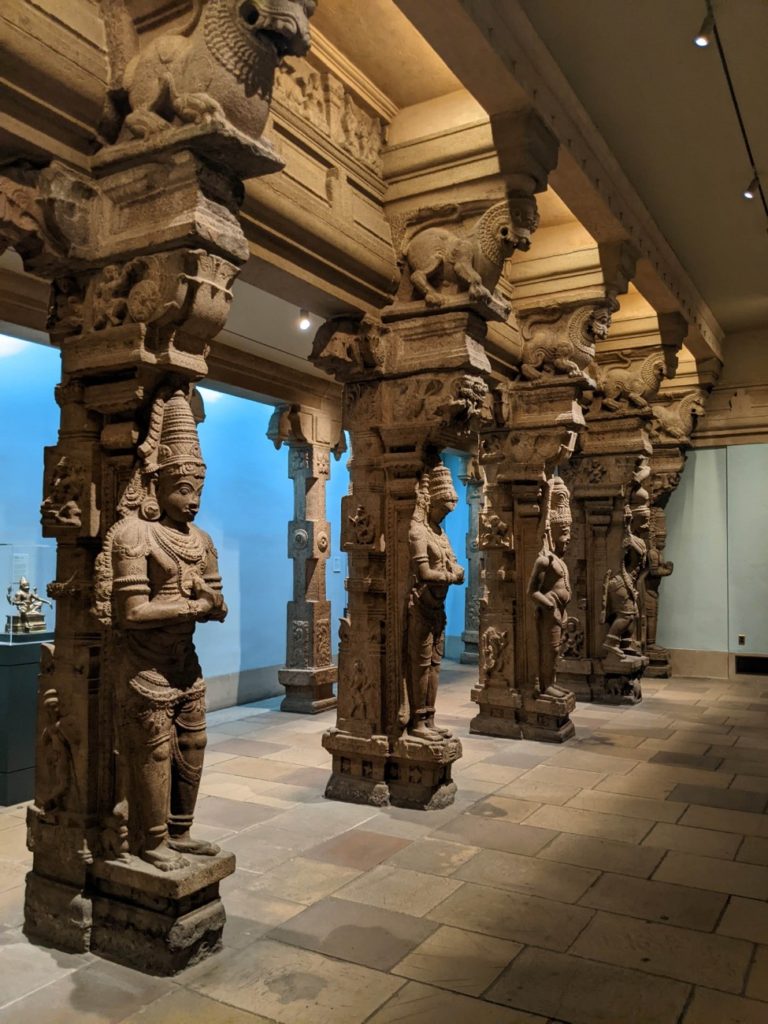
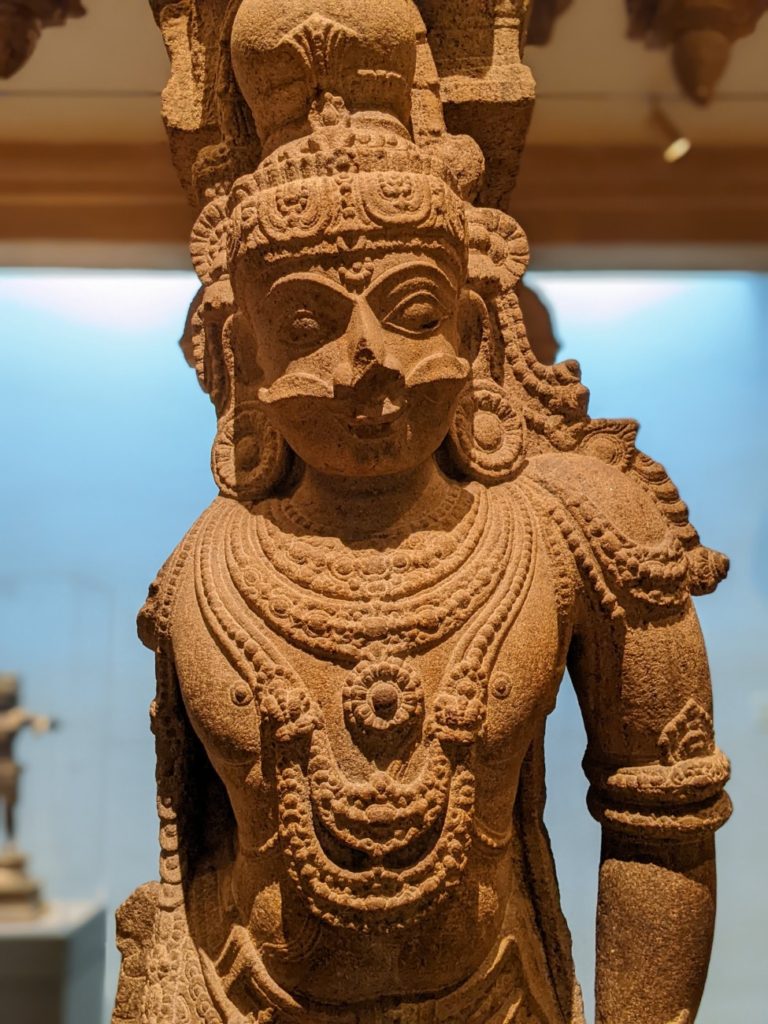
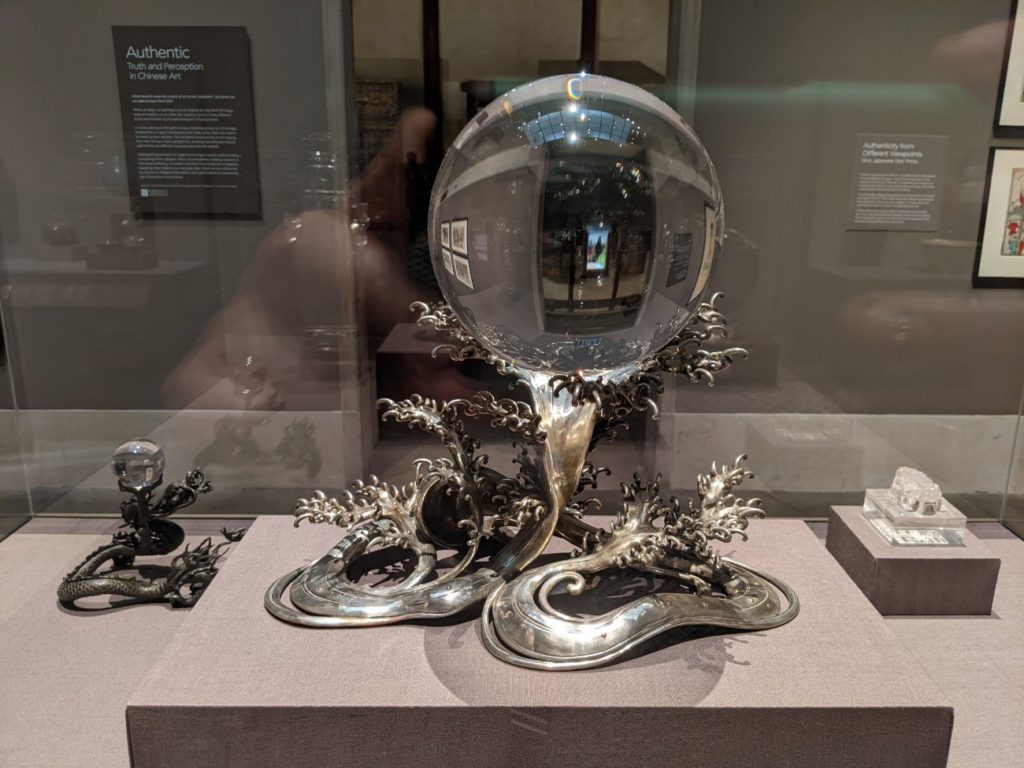
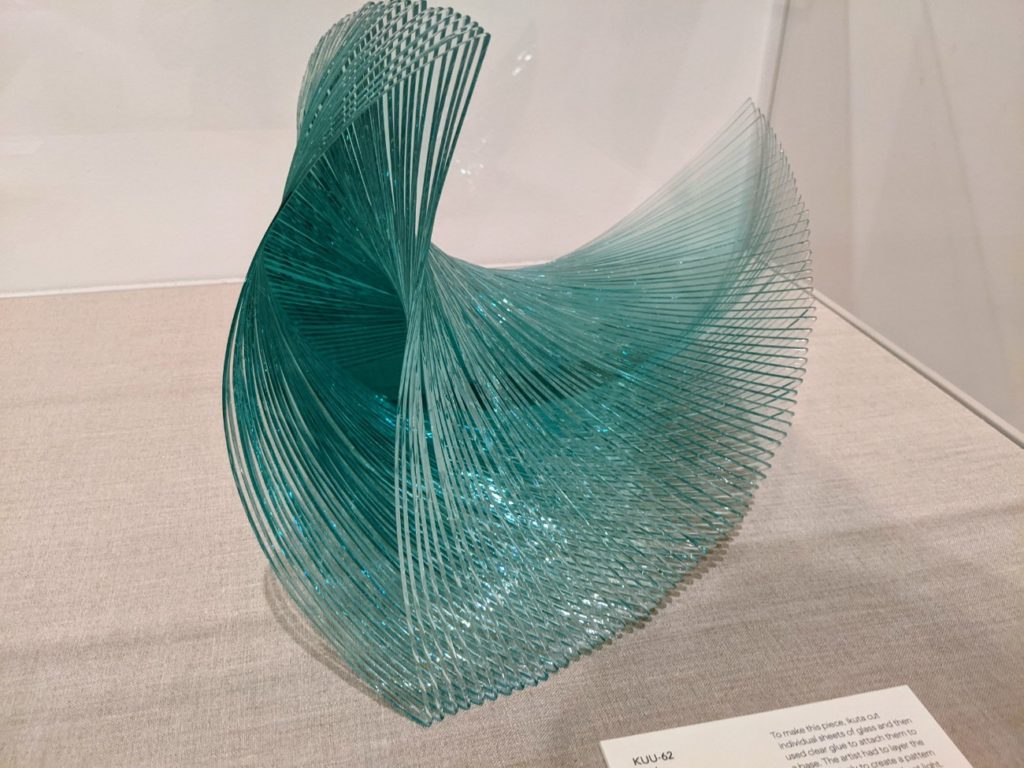
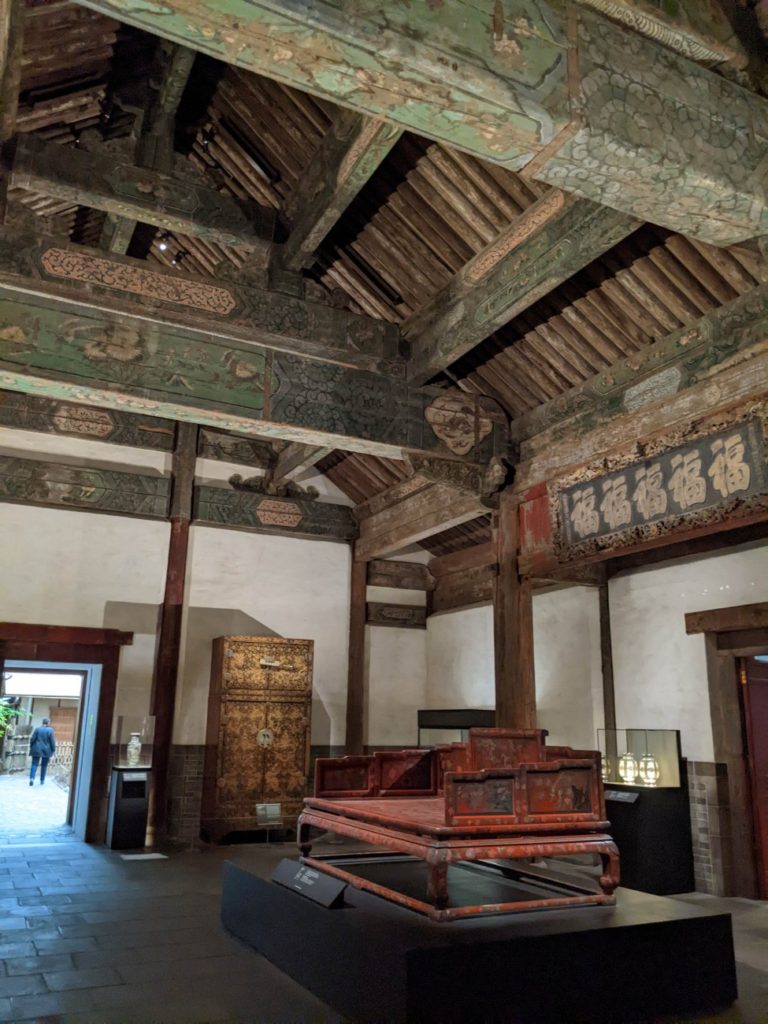
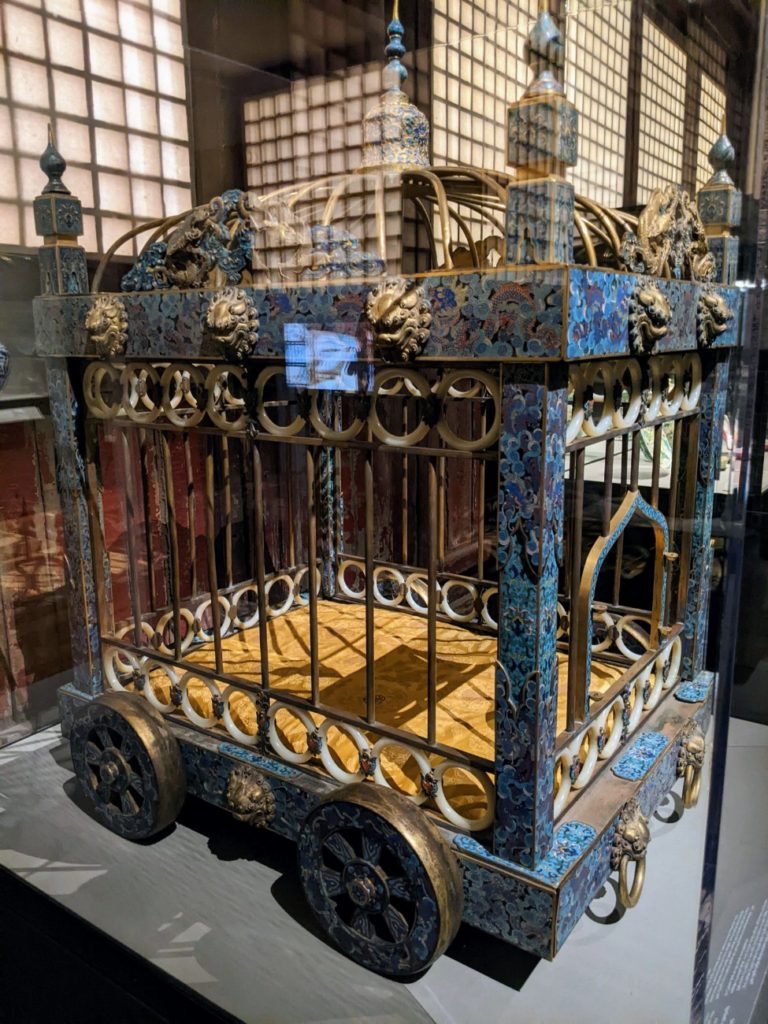
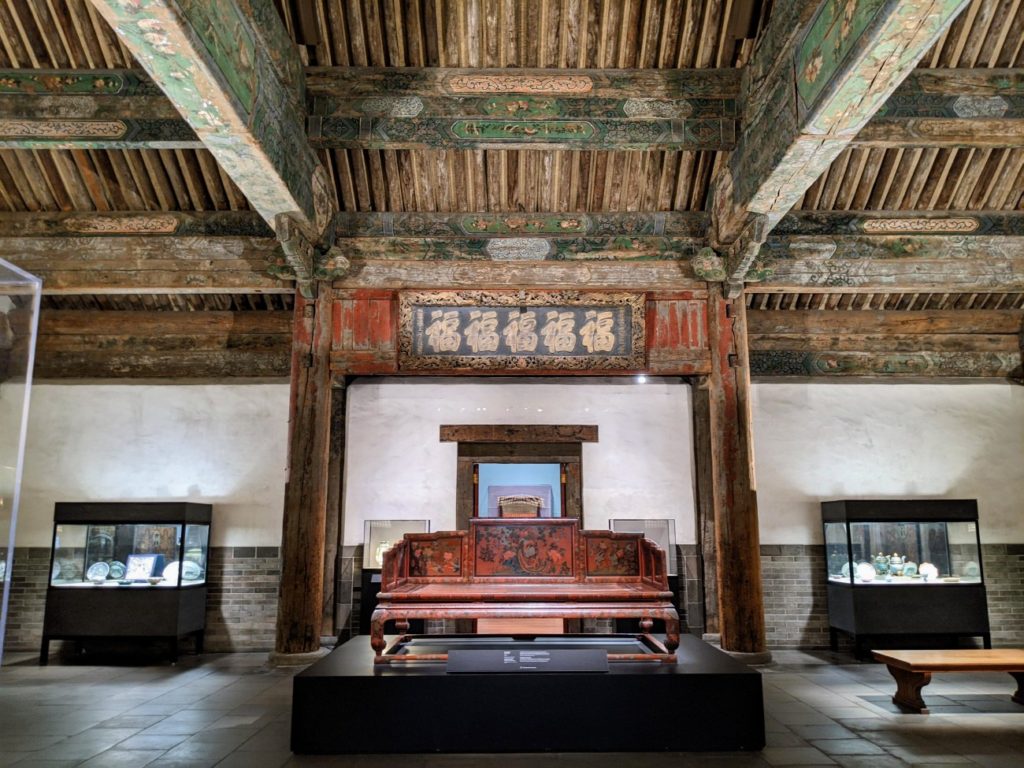
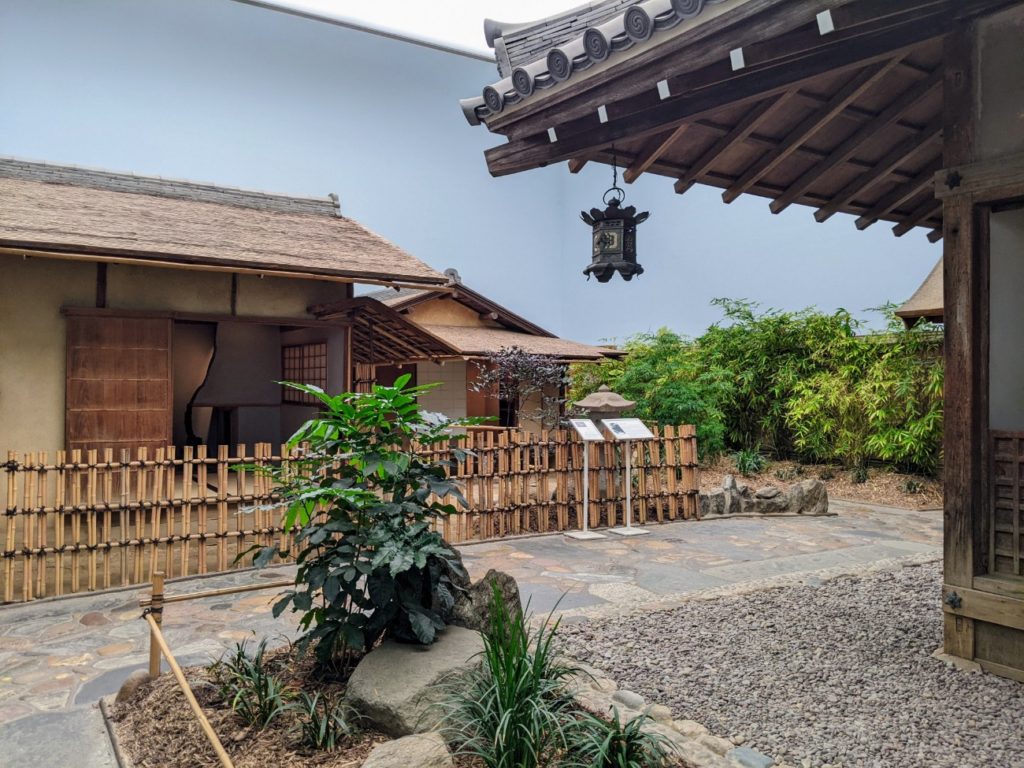
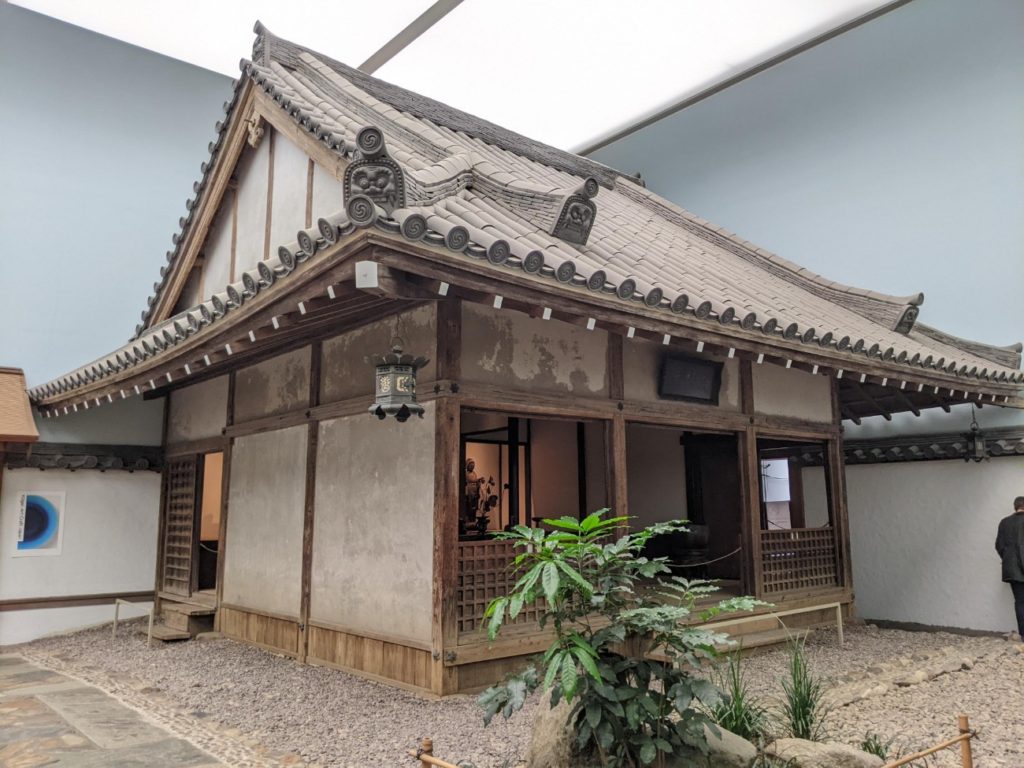
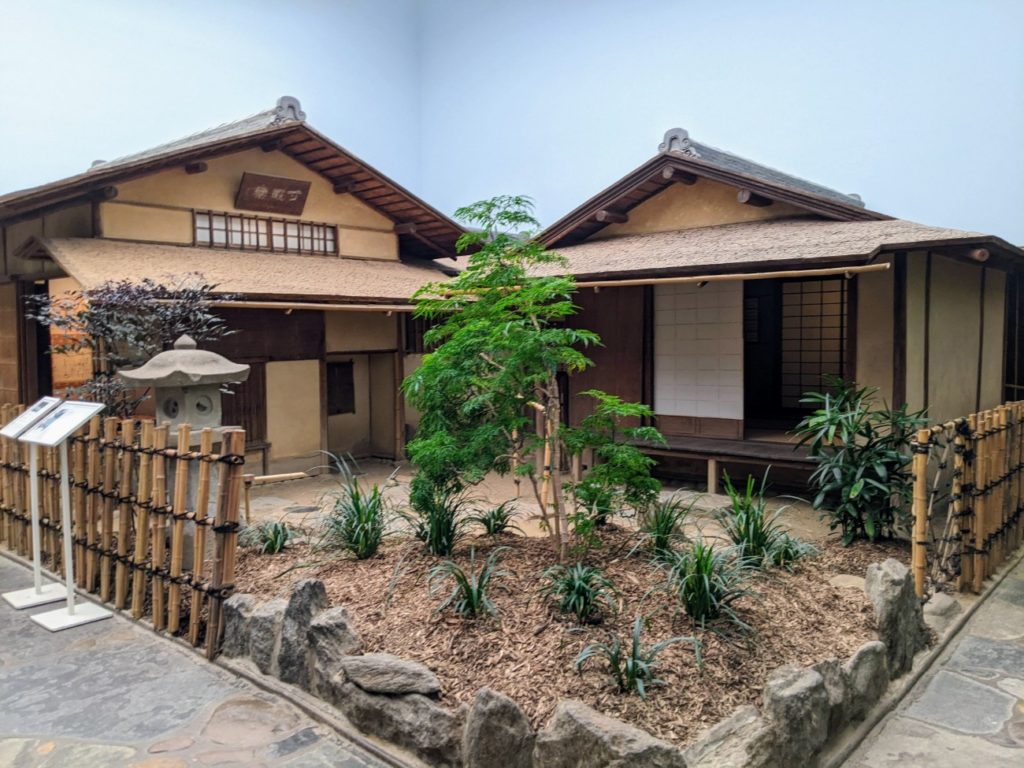
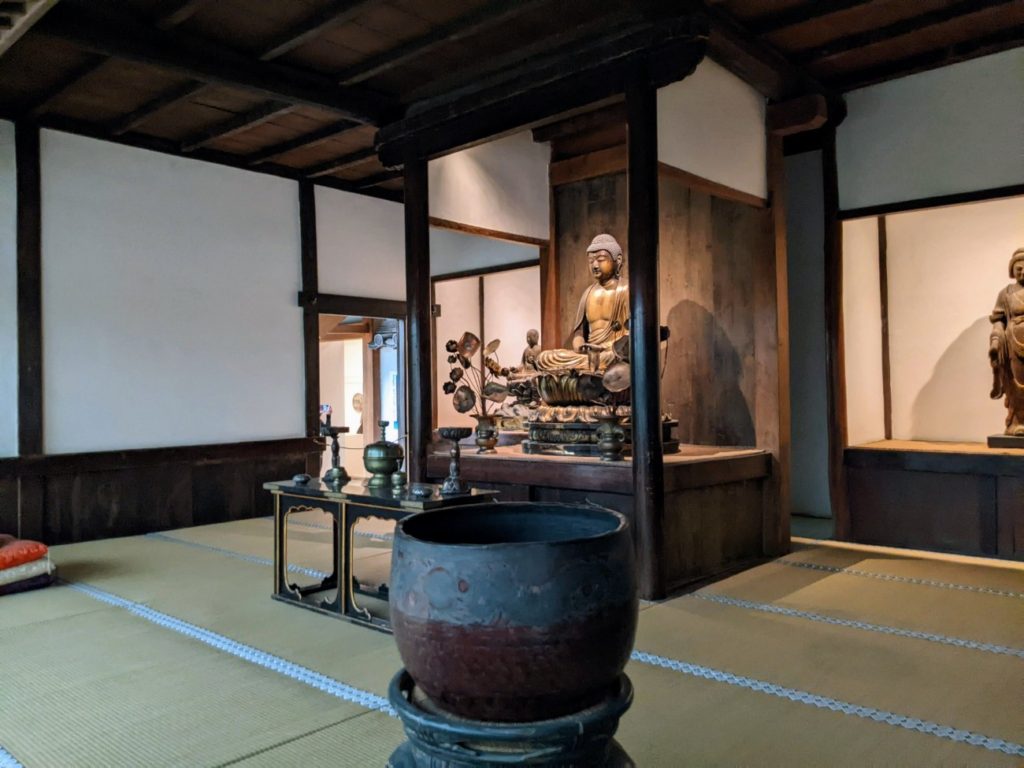
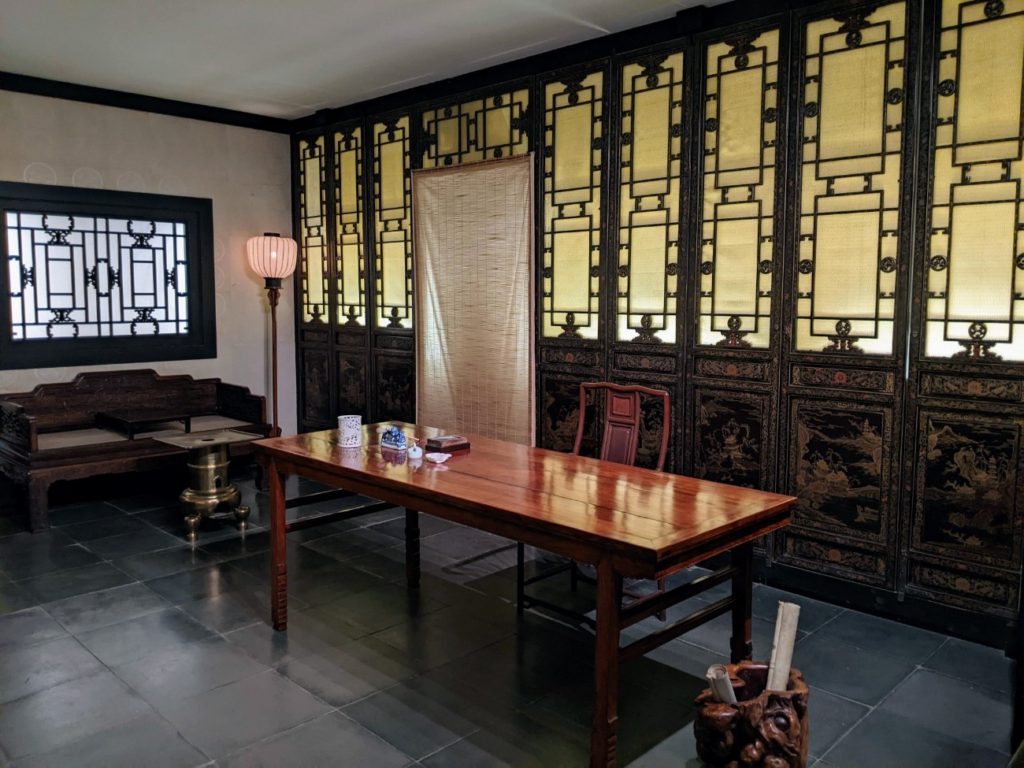
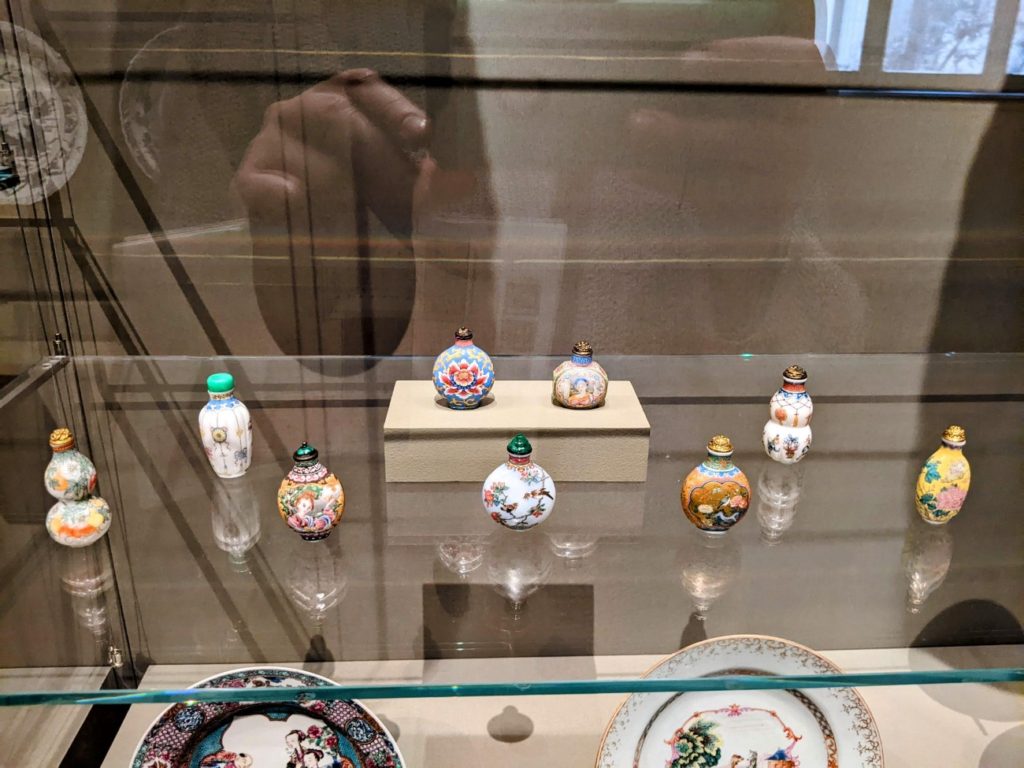
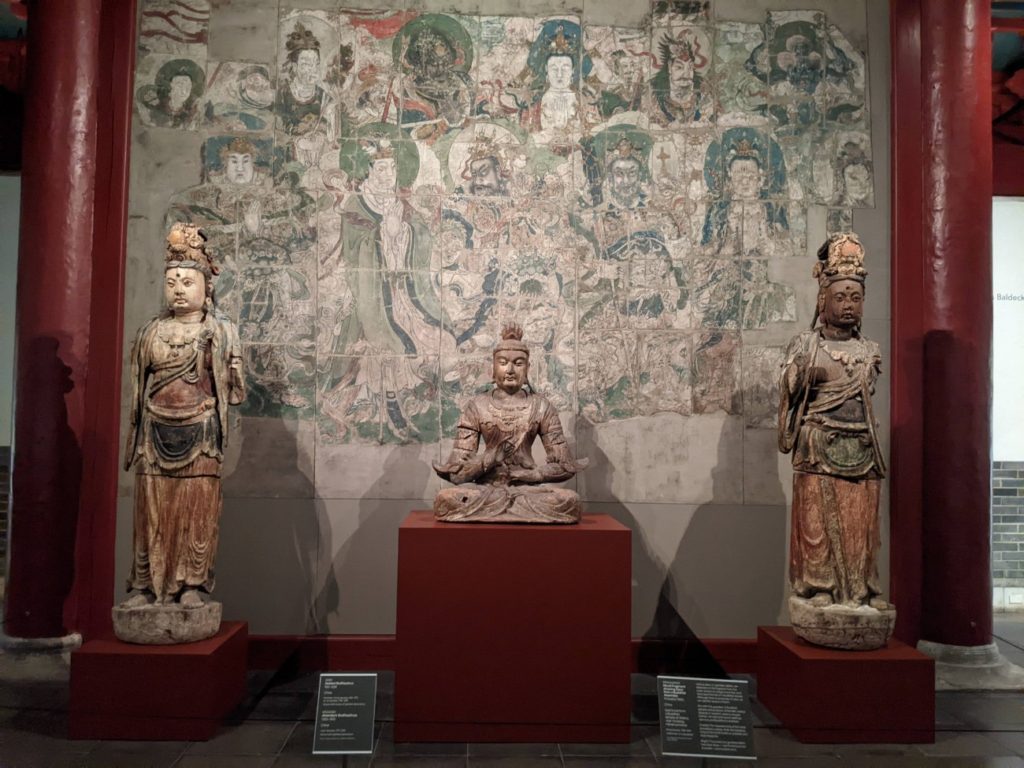
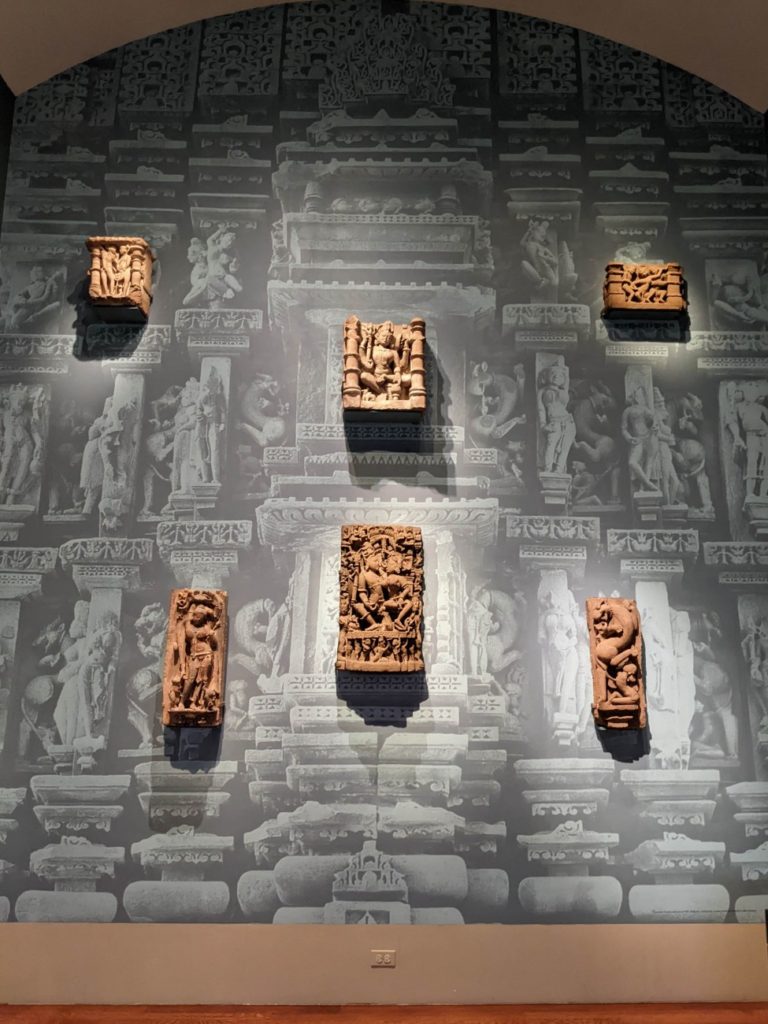
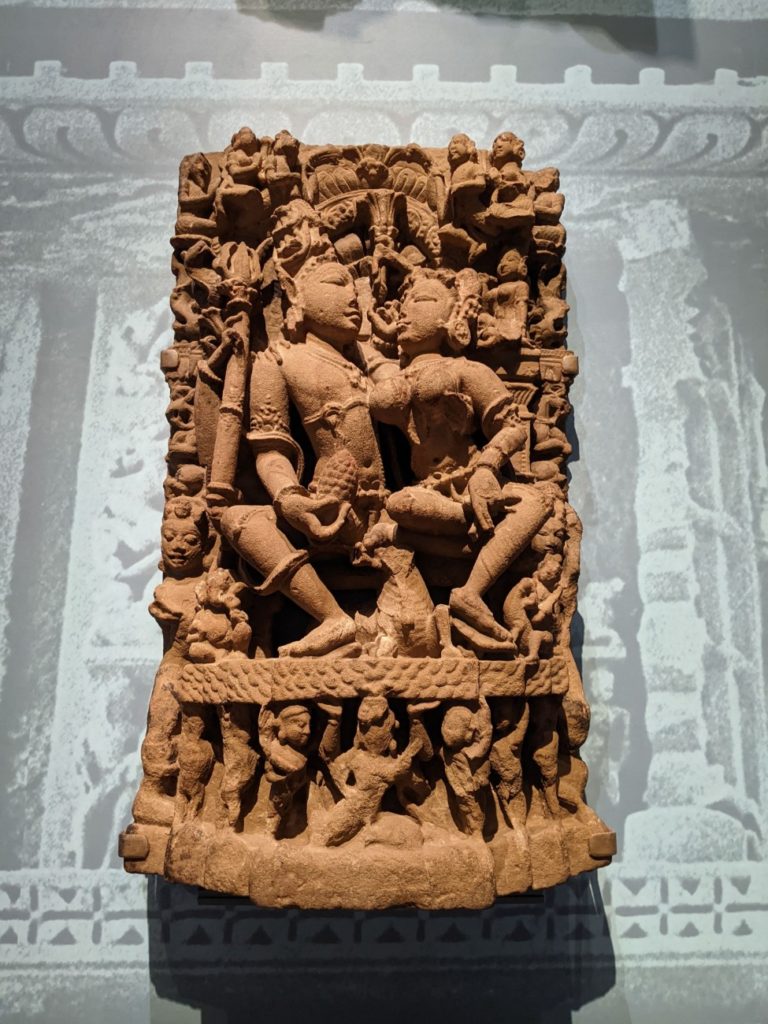
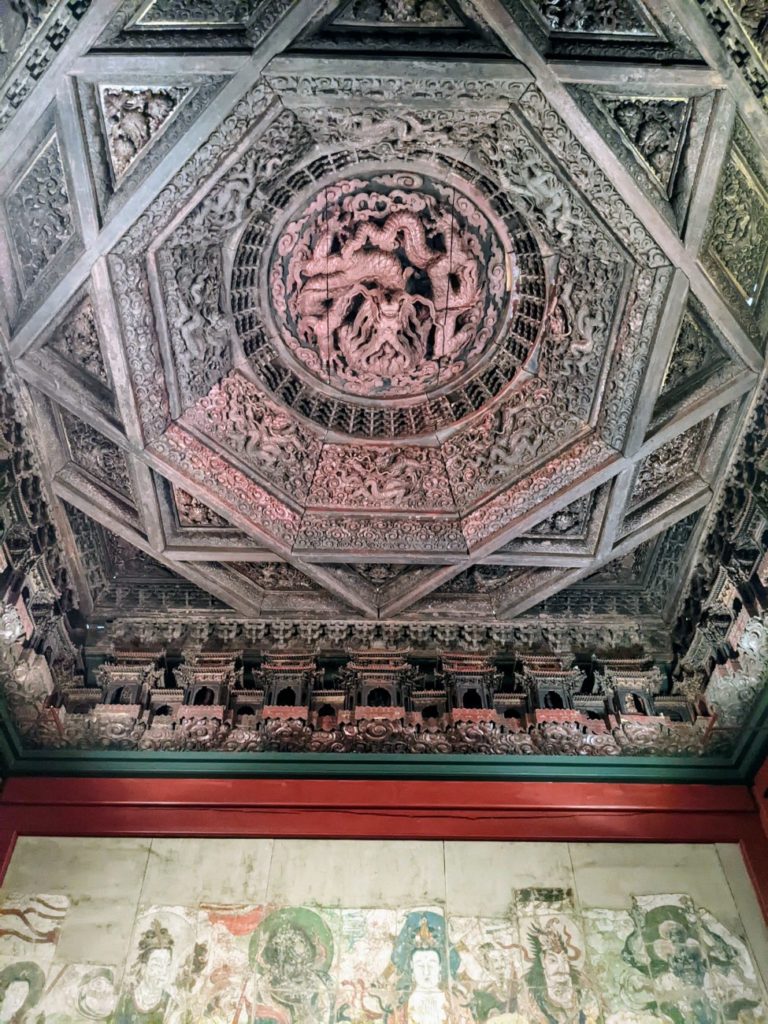
While there are elevators on both sides, there are only bathrooms on one side of this floor – the Asian side has no facilities.
Admission
The good news is that your ticket gives you two consecutive days to cover everything in the Philadelphia Museum of Art as well as the Rodin Museum down the parkway. I did both in one day and really enjoyed it but it’s a lot to take in at one time. Me and my phone were both out of juice by the end of the day.
Tickets cost $25 for adults, $23 for seniors 65+, $14 for students with ID, and free for anyone 18 and under. There are pay-what-you-wish days on the first Sunday of every month and every Friday night after 5 pm. If you go to the Rodin Museum first, anything you pay there counts against your ticket at the big museum. (I somehow managed to get into both for only $10 using this method, but I think that was a mistake.)
Tours
There are daily free tours offered by the museum if you’d prefer a guide. Highlights of the Museum occurs daily at 11 am and 2 pm and is limited to 20 participants per tour. Impressionism & Beyond starts at noon and is capped at 20 as well. A tour of Early American Art starts at 1 pm for 20 folks, and an exhibition tour of Sean Scully’s abstract art starts at noon and is the only one capped at 10 people. All tours meet at the base of the Great Stair Hall and last about an hour.
Every month there is a new Art Kids program that runs on Sundays at 11 am. This month the theme is Pet Portraits. It’s still free but you have to register.
There are also portable audio guides available in several languages. You can rent one at the admission desk for $5.
Hours
Museum hours are currently 10 am- 5pm, and until 8:45 pm on Friday nights. They are closed Tuesdays & Wednesdays. The Museum is closed on the 4th of July, Christmas Day, and Thanksgiving Day, and closes early at 3 pm on Christmas Eve.
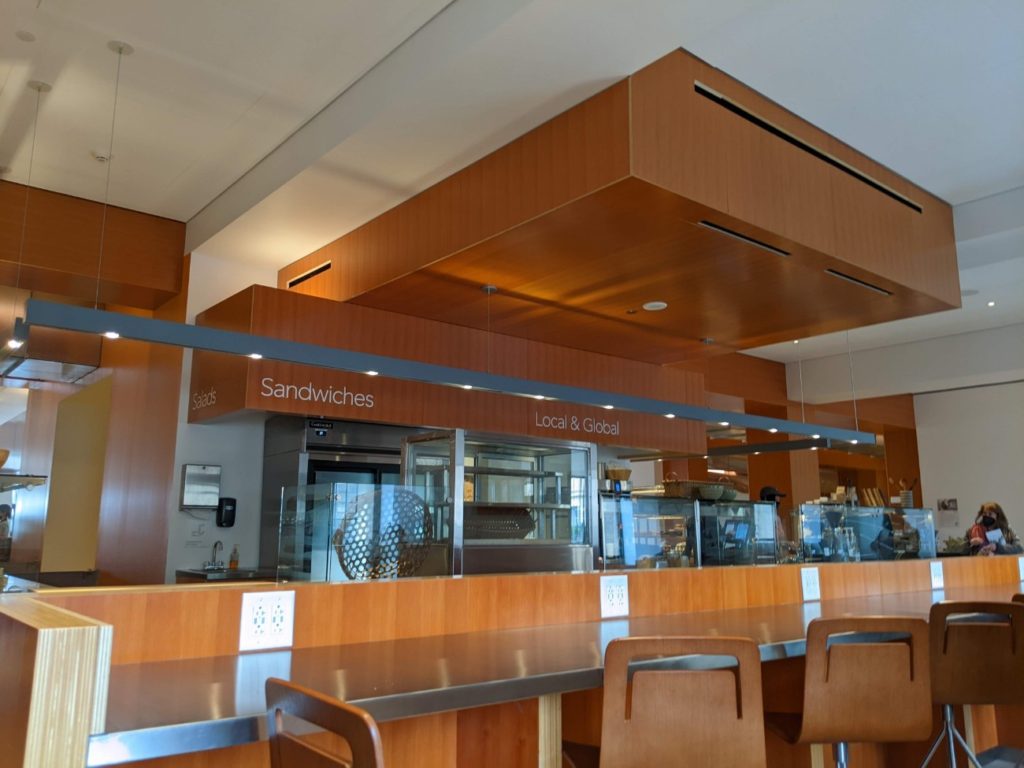
Parking
The Philadelphia Museum of Art has dedicated parking right behind the museum in an underground garage. There is also a small lot directly behind the museum, also paid. Rates are $15 for the first four hours and $2 each additional hour. Parking is only $5 when visiting on Friday nights after 5 pm. In all cases, get the museum to validate your ticket to get these rates.
Conclusion
In case you can’t tell, I really enjoyed the Philadelphia Museum of Art, much more than I thought I would. I expected a big, stuffy art museum and on some levels, it is exactly that. It’s huge. It’s full of stuff you might not exactly care for. But it’s also so good. The art inside is so amazing, it’s hard not to find something you like. And I love so much how they integrate settings from worlds away to make you feel like you are transported to another country. As a traveler, that really appeals to me.
I would consider my half-day tour to be a very high-level but thorough walk-through. You can certainly spend two full days doing a deeper dive, but for me, that’s almost too much to absorb. It’s such a big place that I think you either need to pace yourself, or just walk through and drift to what attracts you without trying too hard. That’s basically what I did and I found a LOT that I really enjoyed!
Wow, that museum looks so amazing! The pictures were incredible!
I really liked how called that one painting “mansplaining” 🙂
Also, I am now very curious to know when and why eye cameos became a thing.
You were right, it’s insane how much stuff there is to see here! I’m glad I got to see so much of it on your blog! 🙂
I know, right? Eye cameos look creepy to me! I’m glad you liked it!